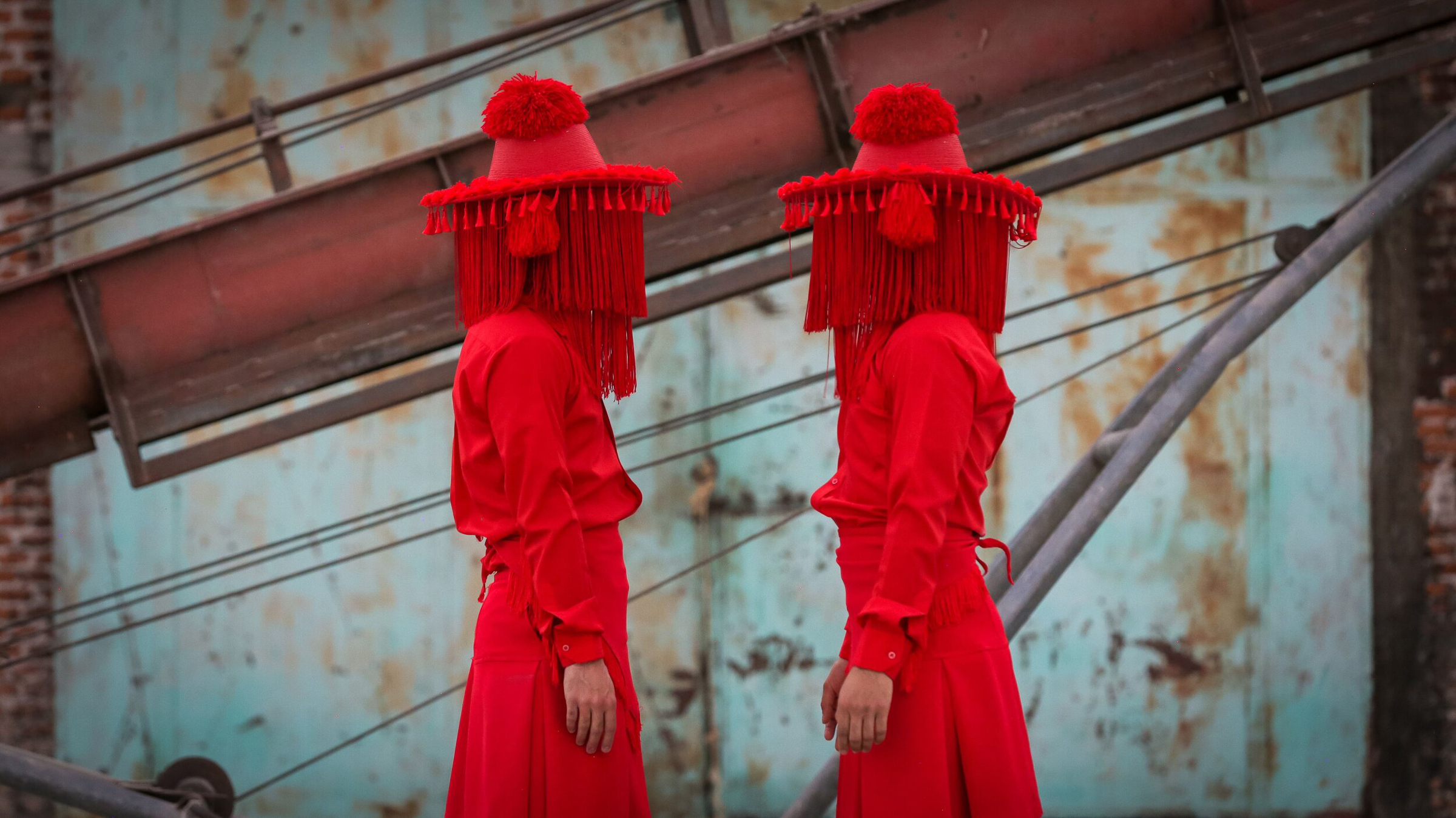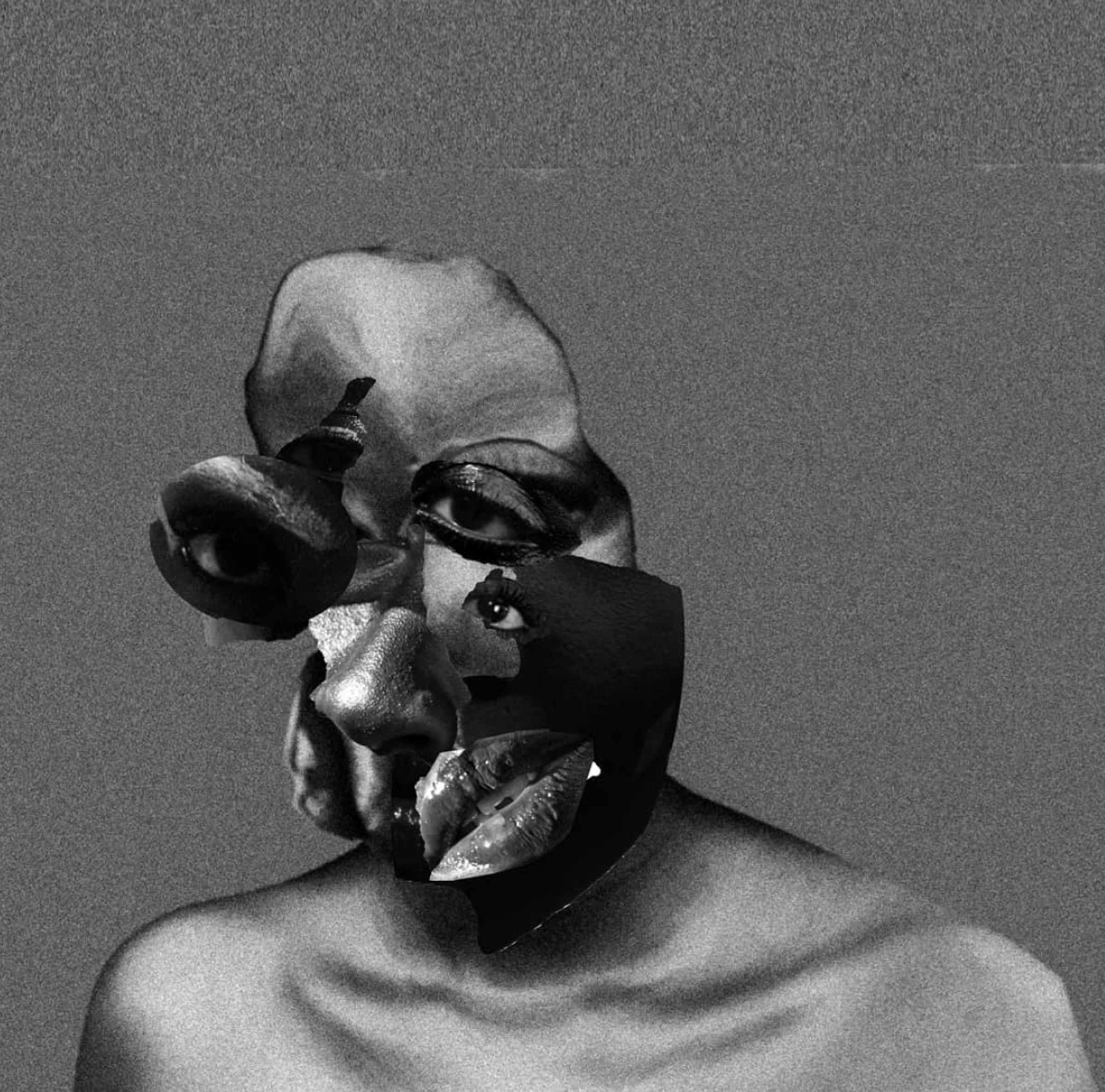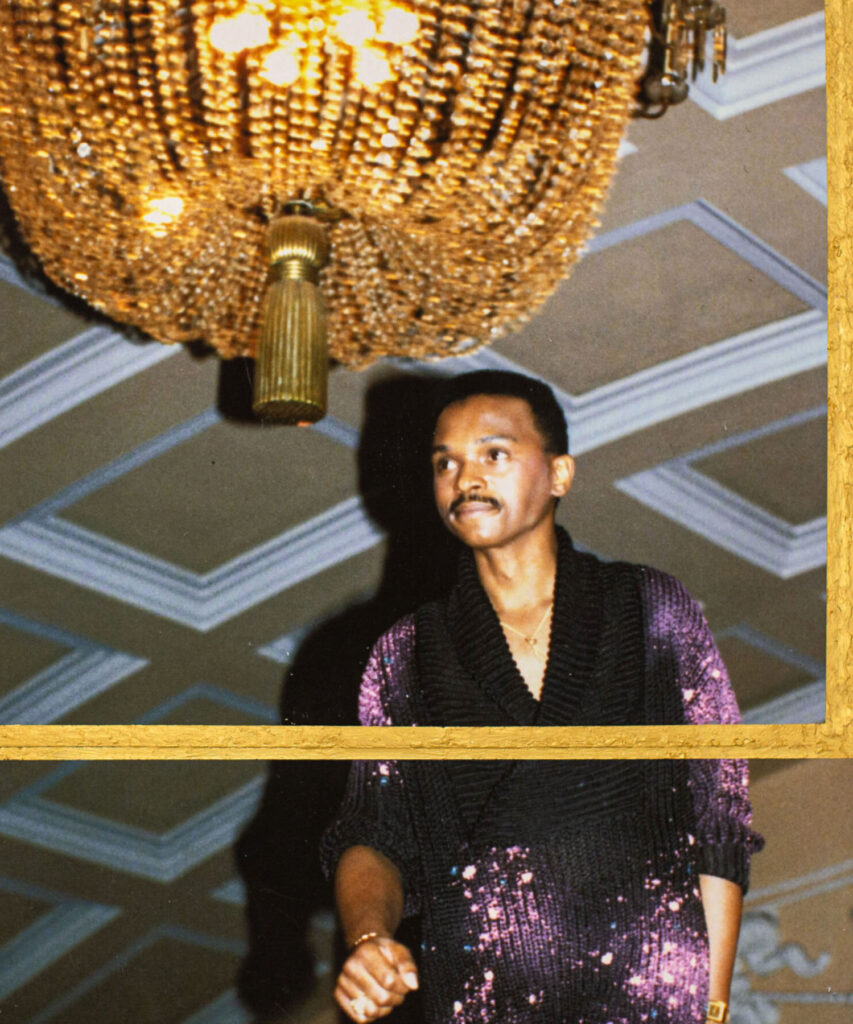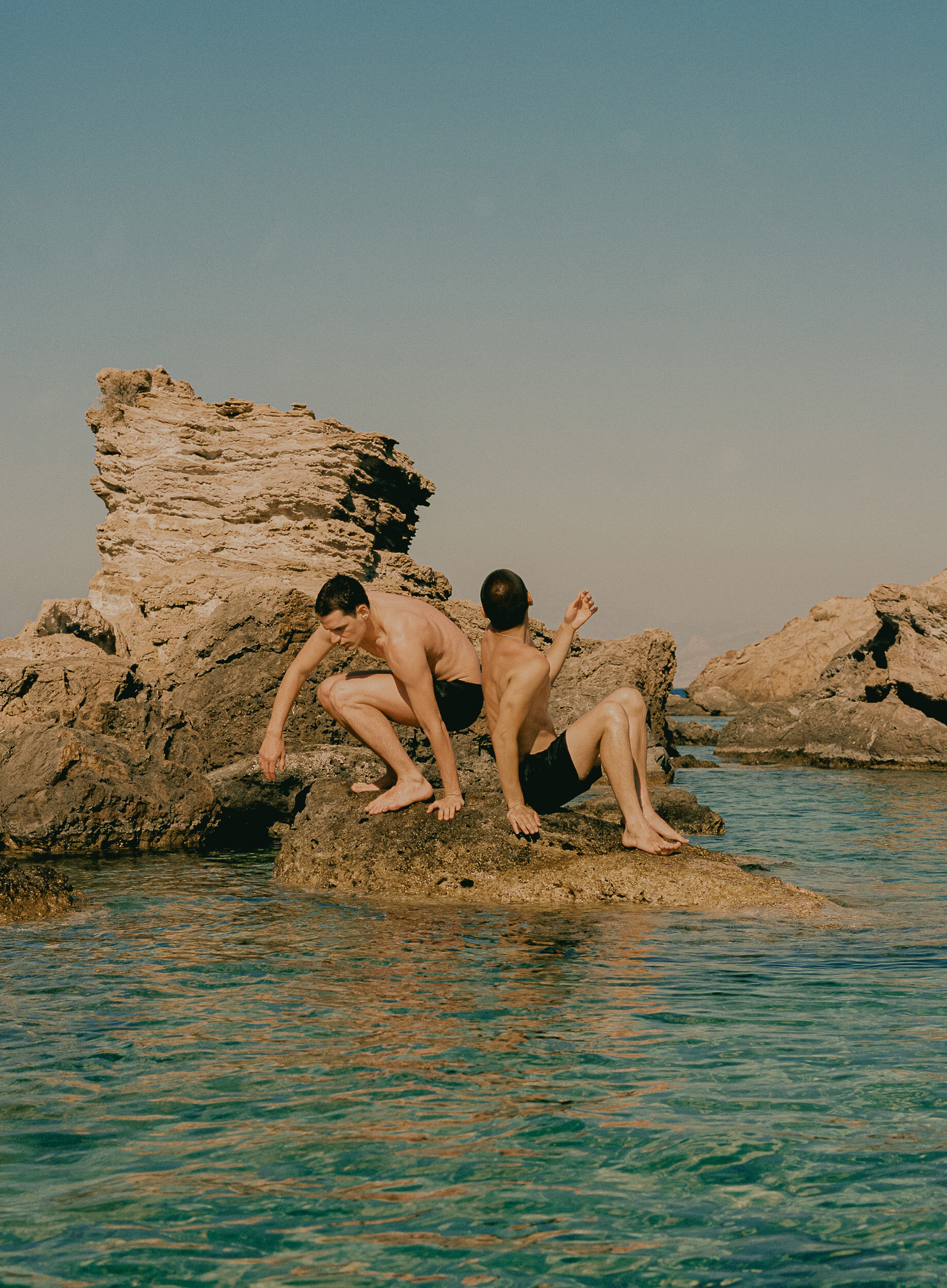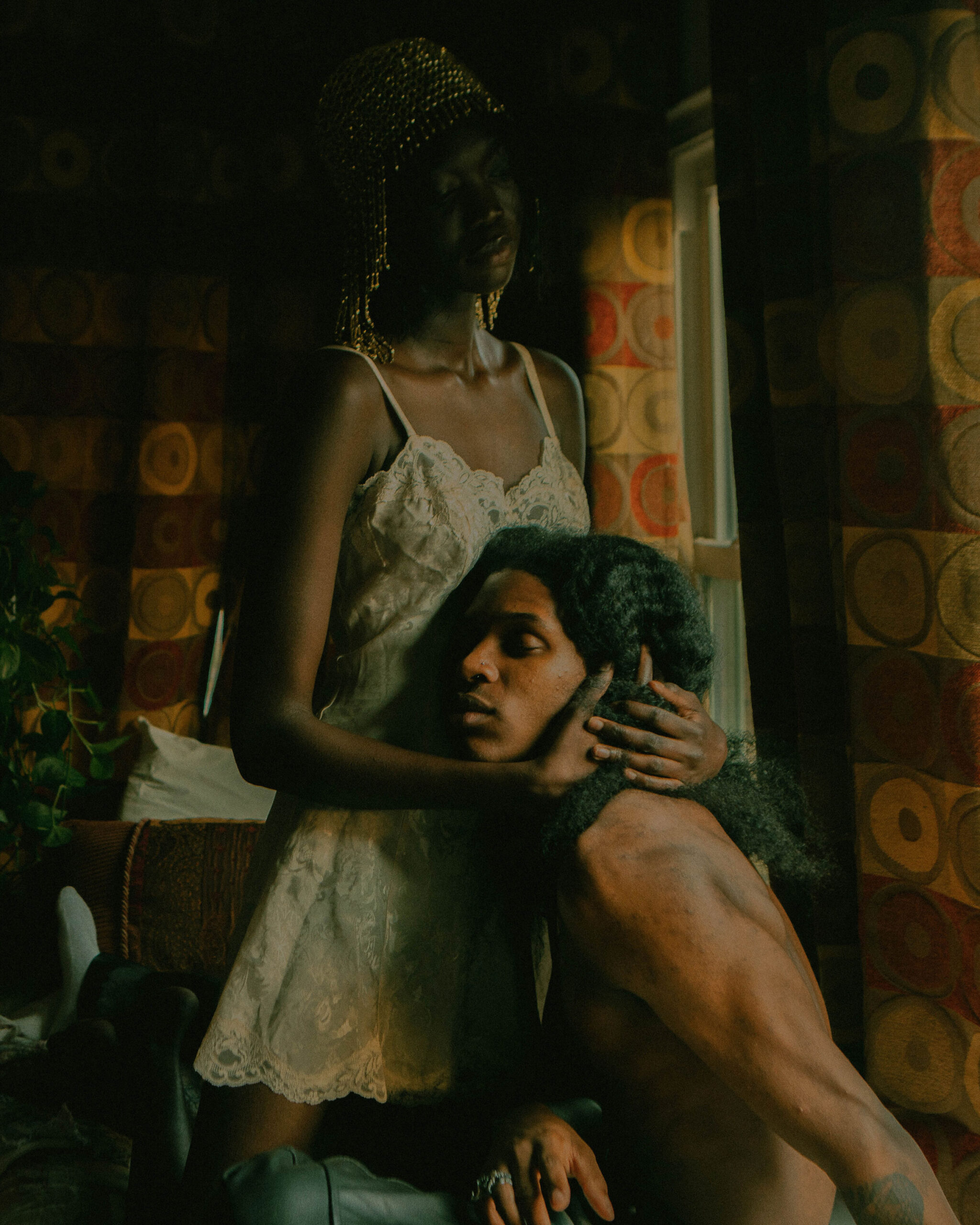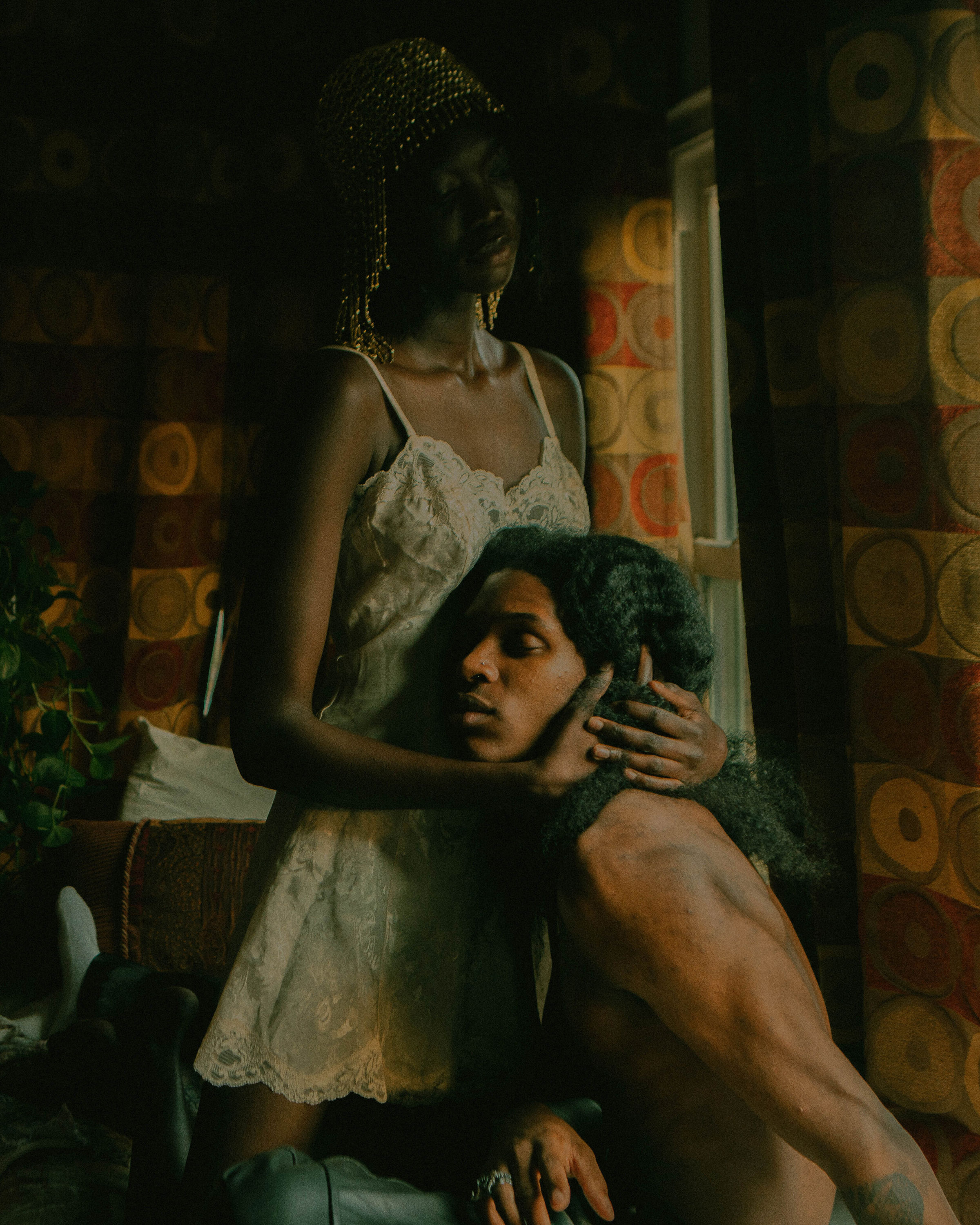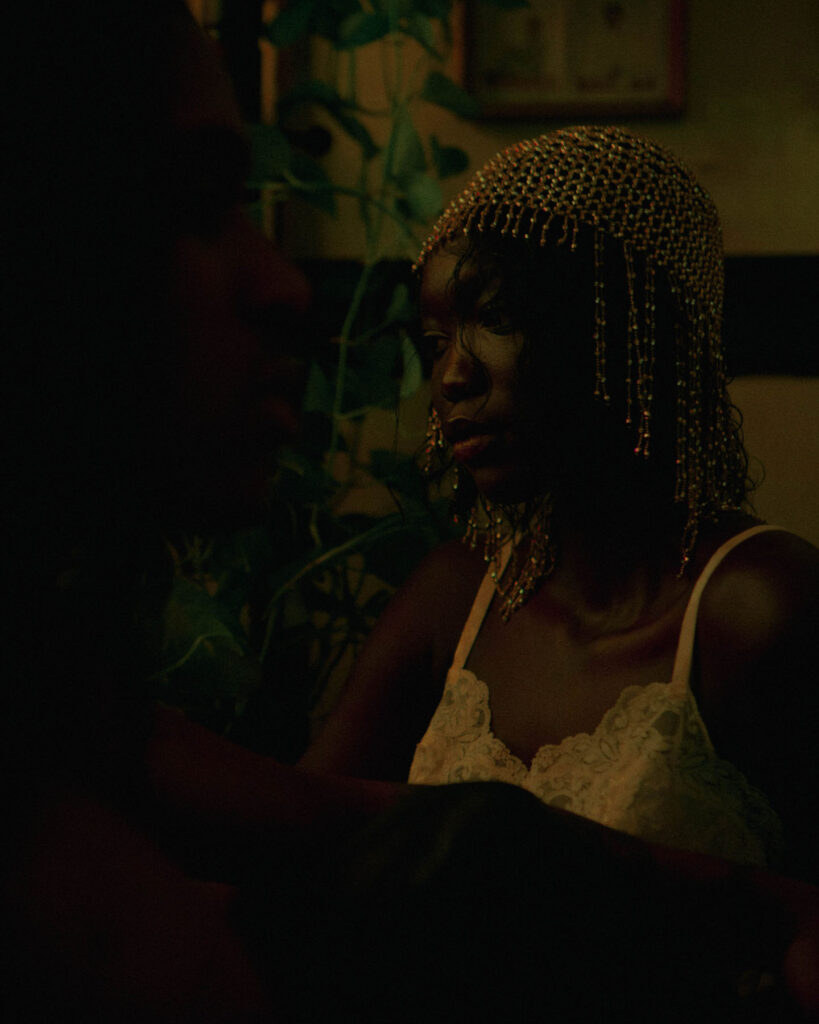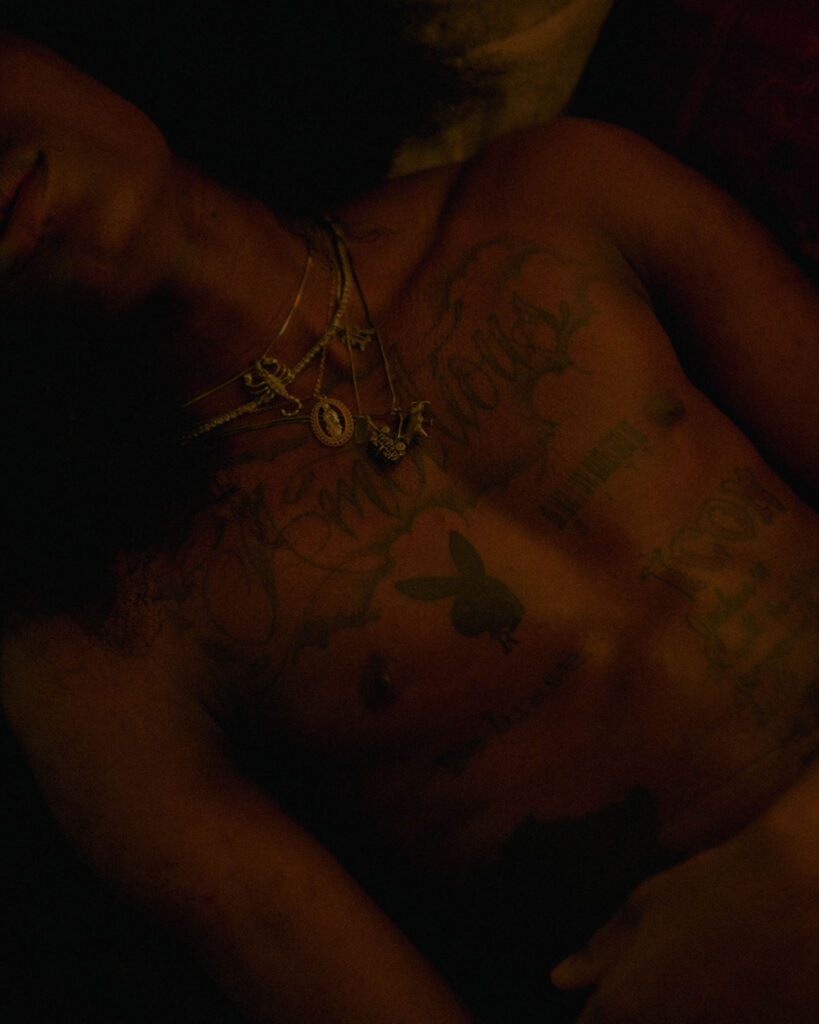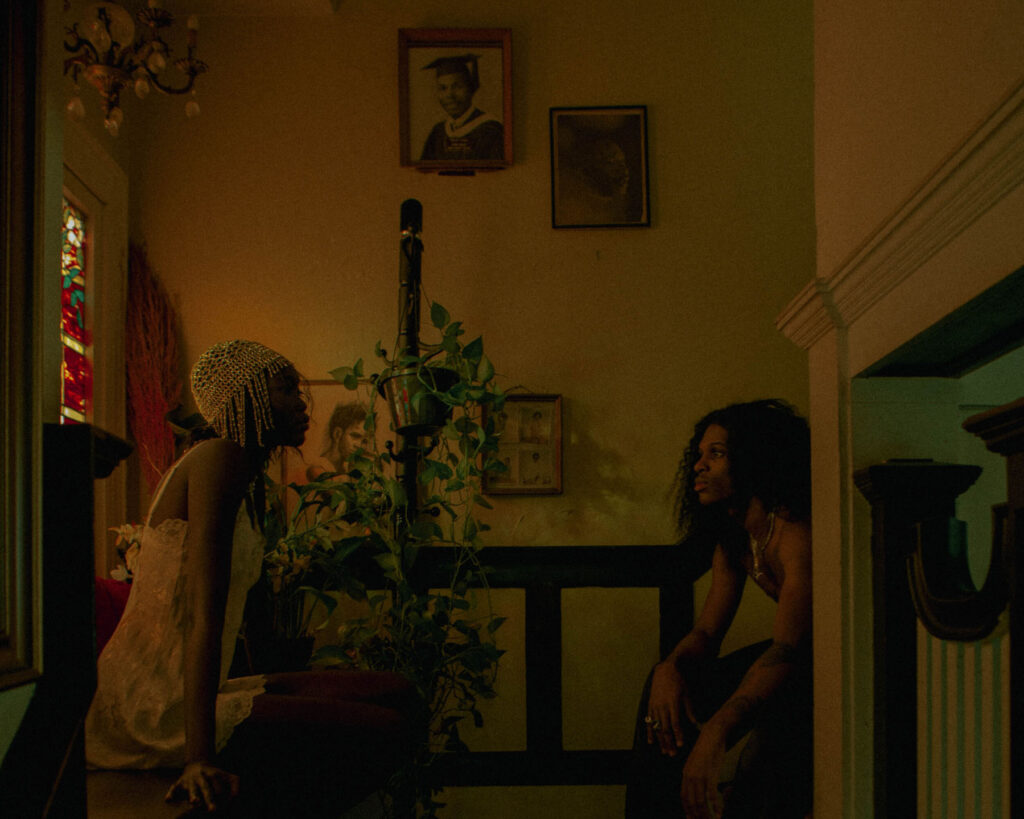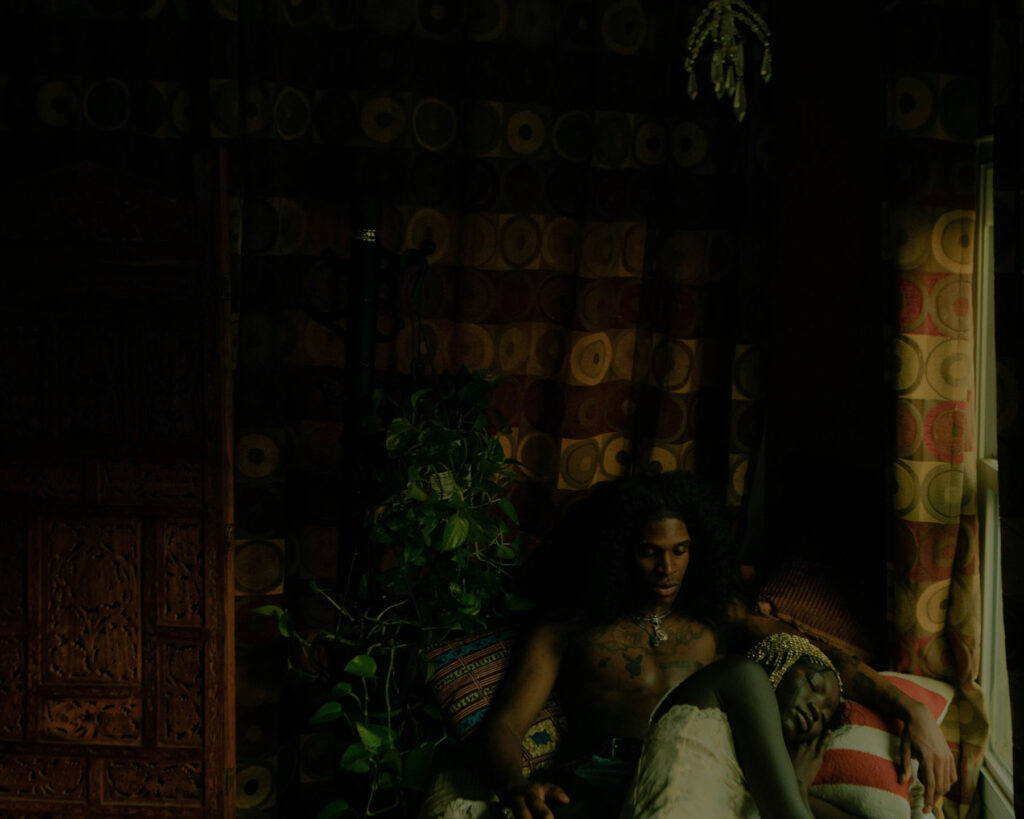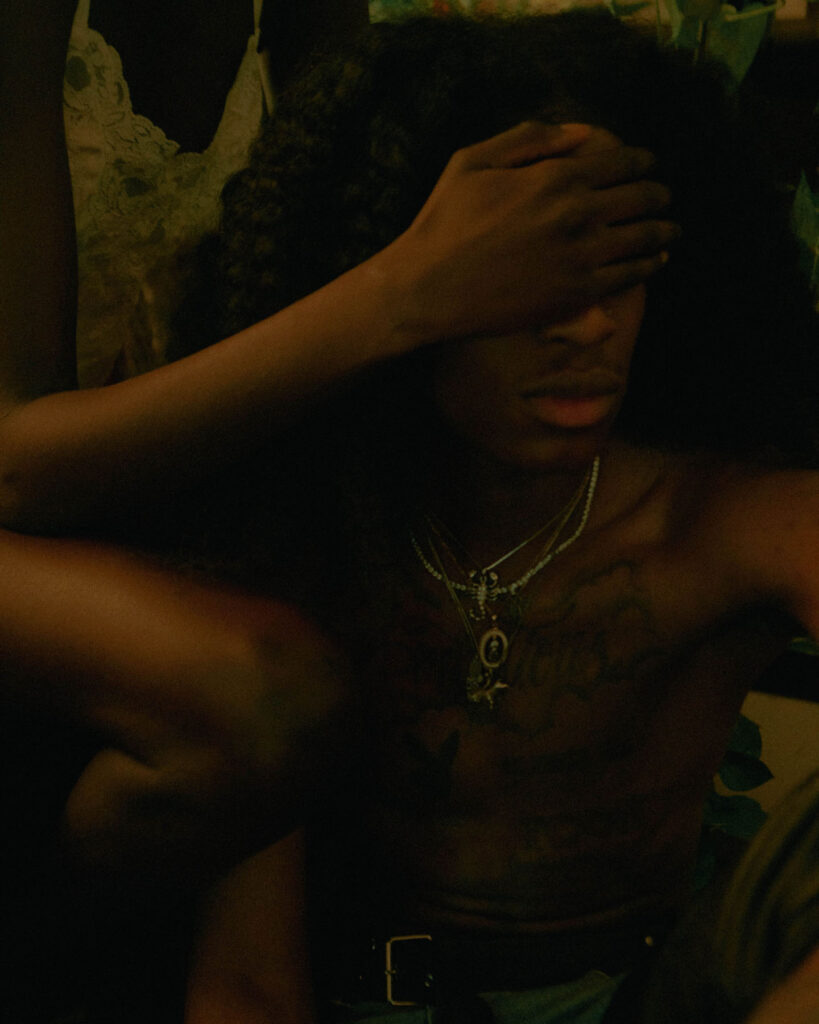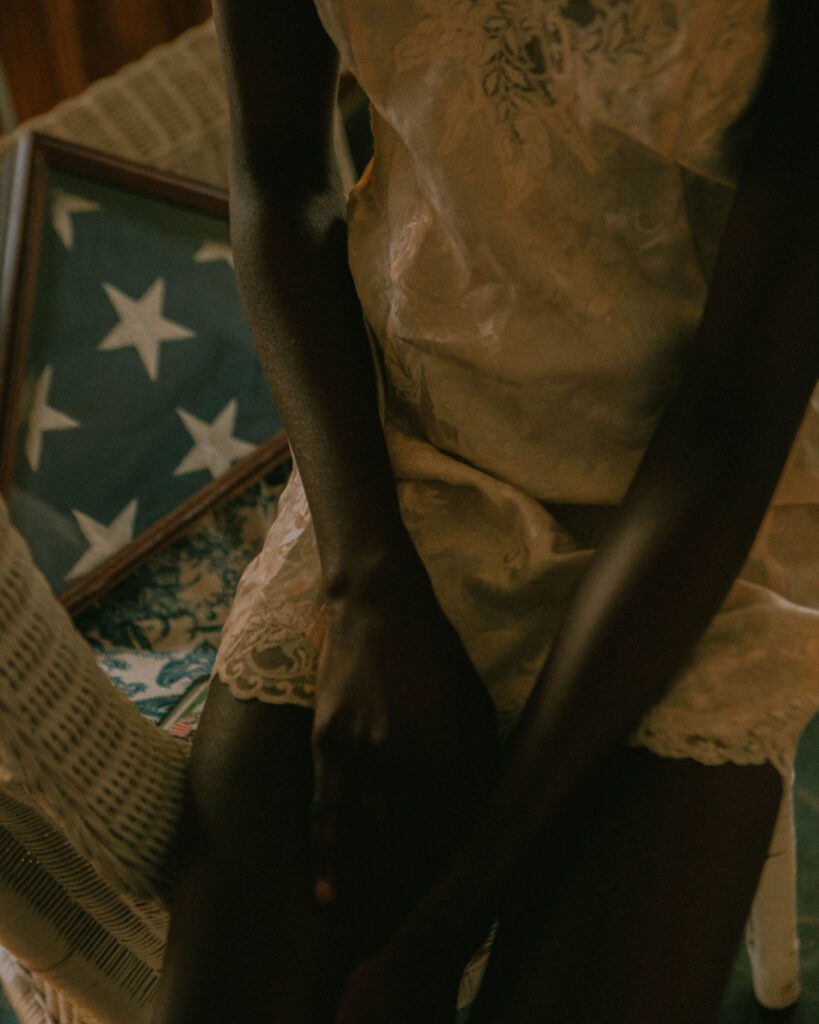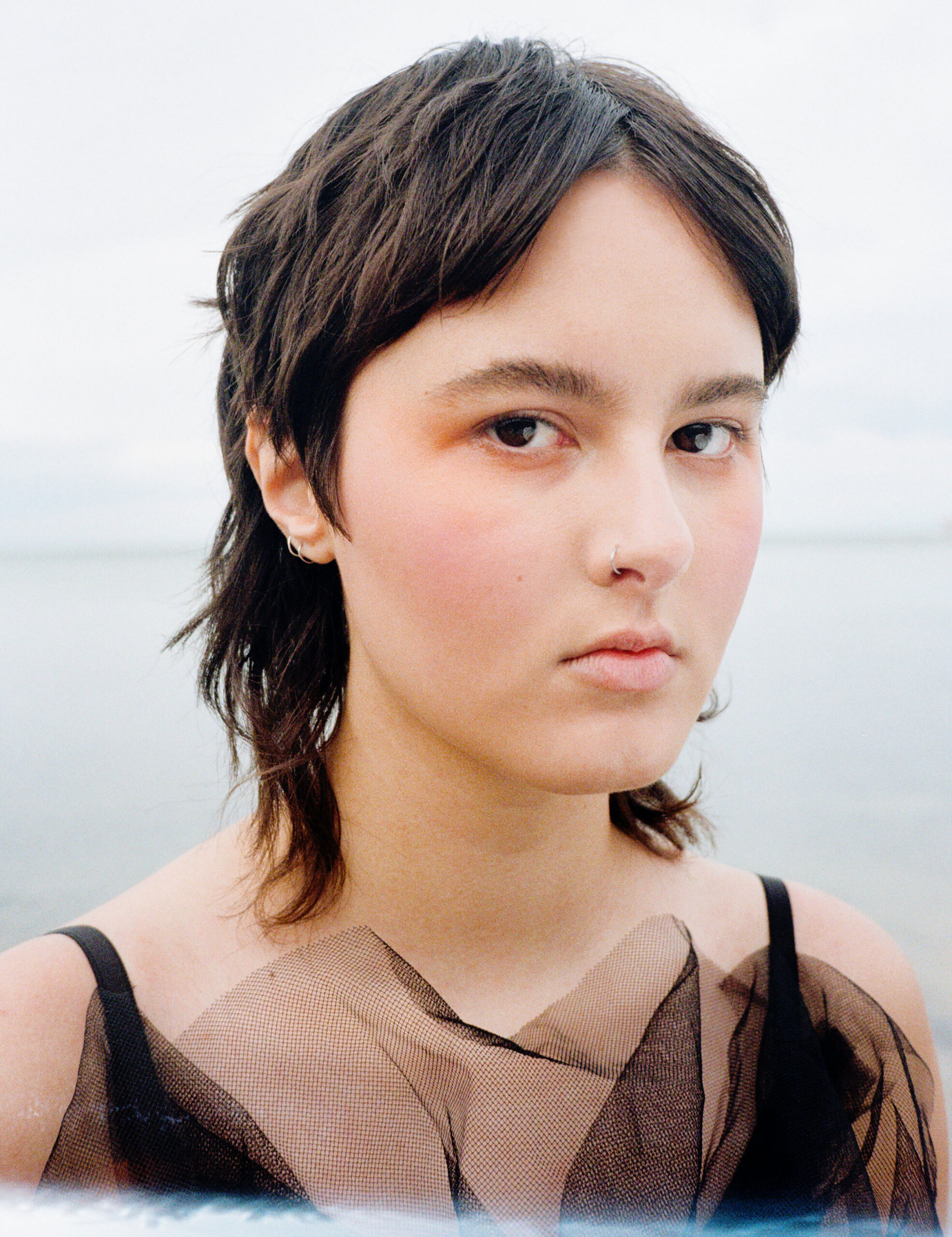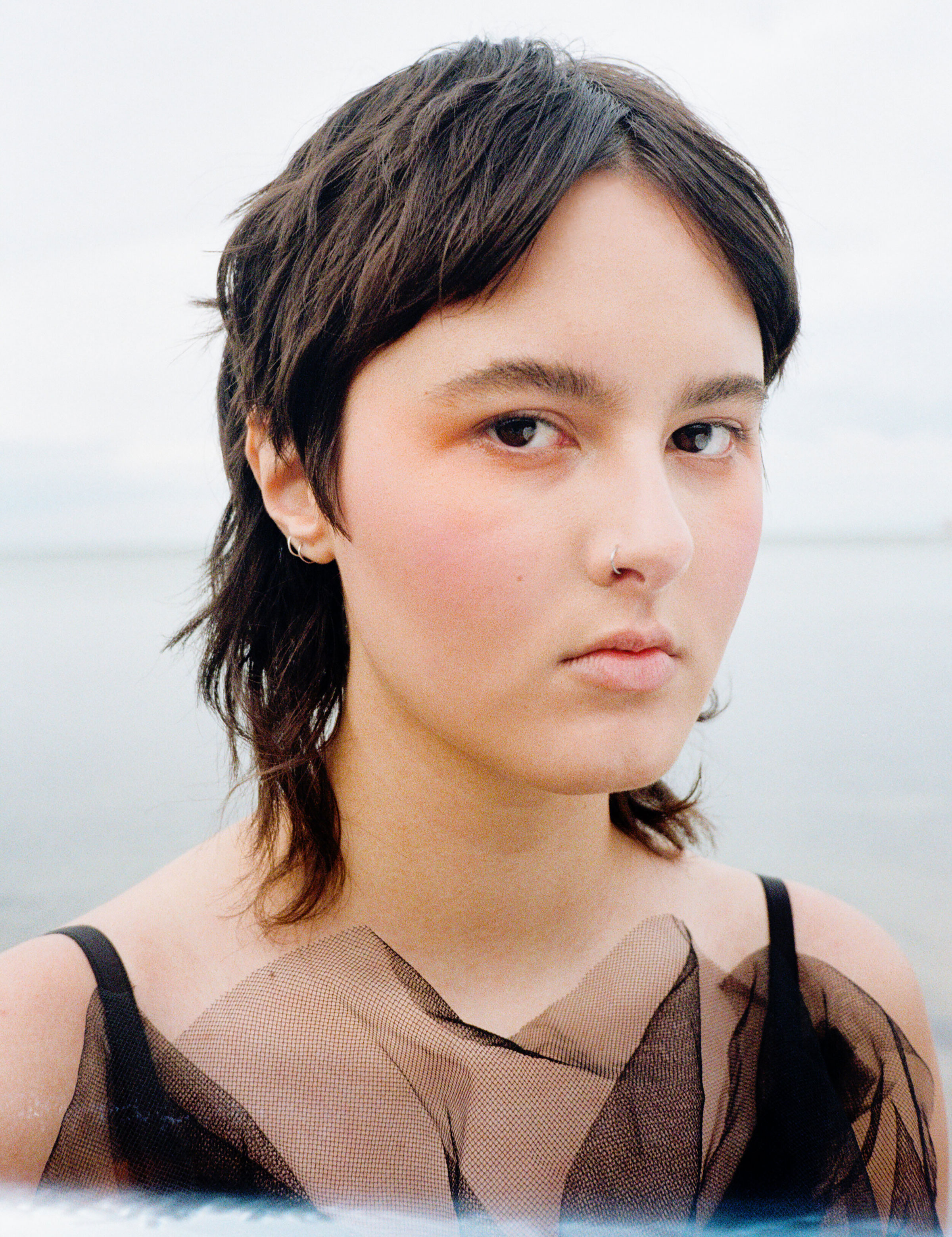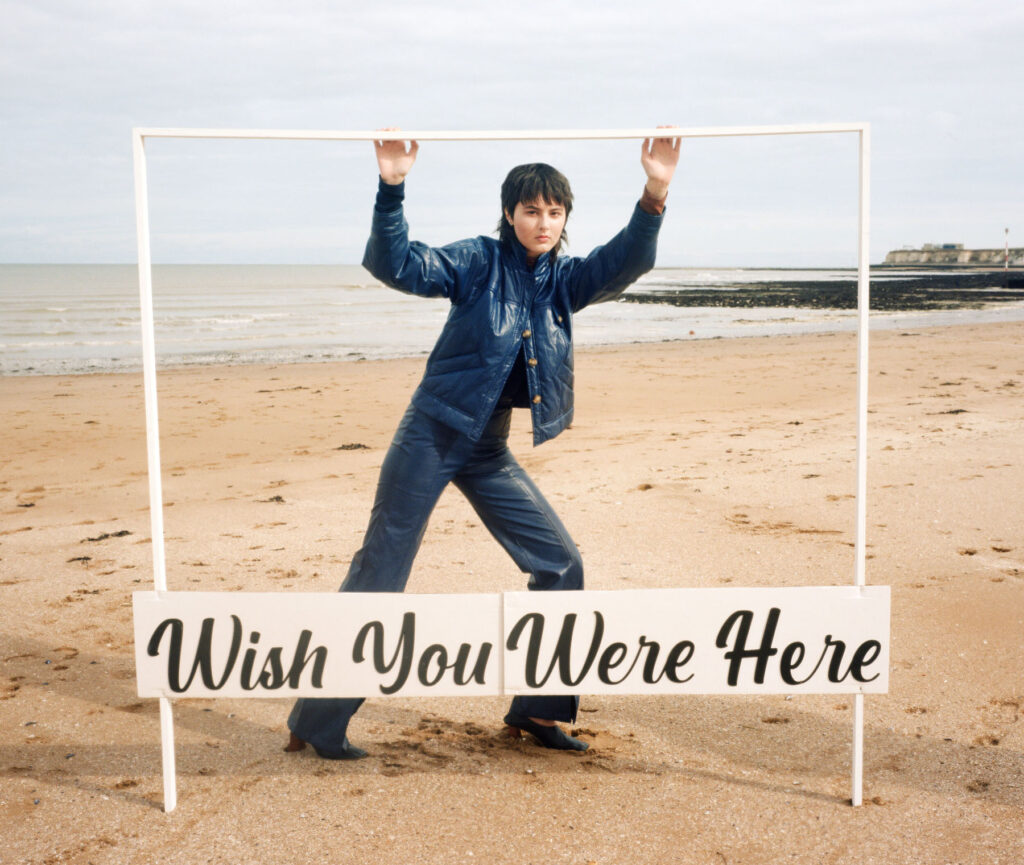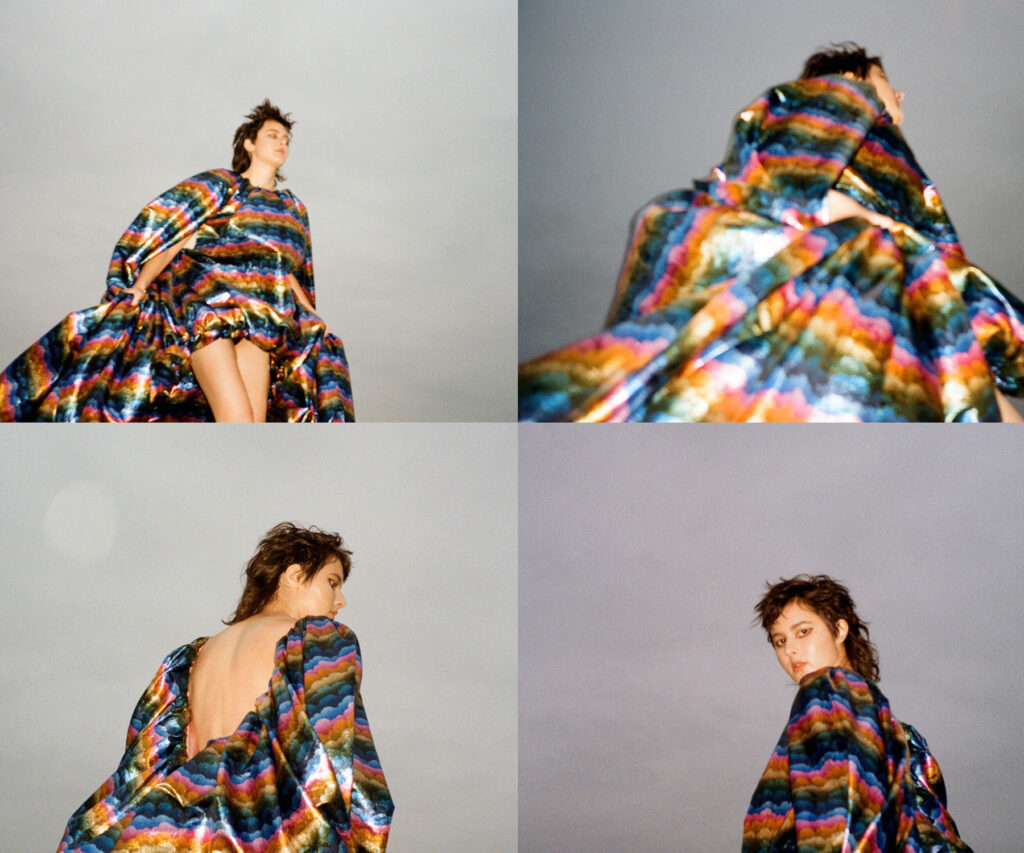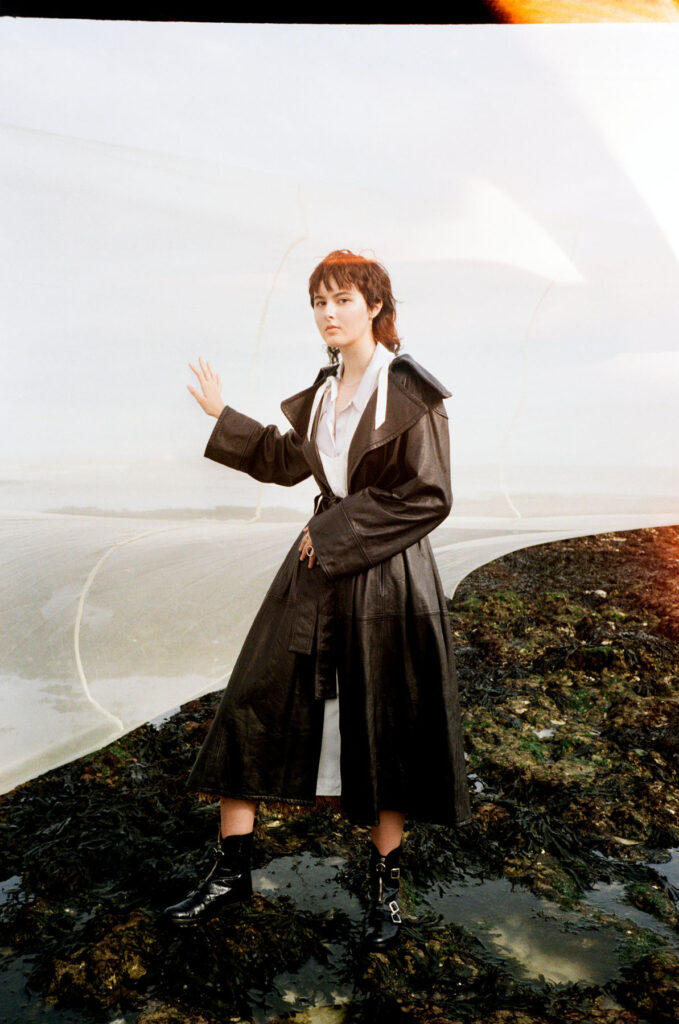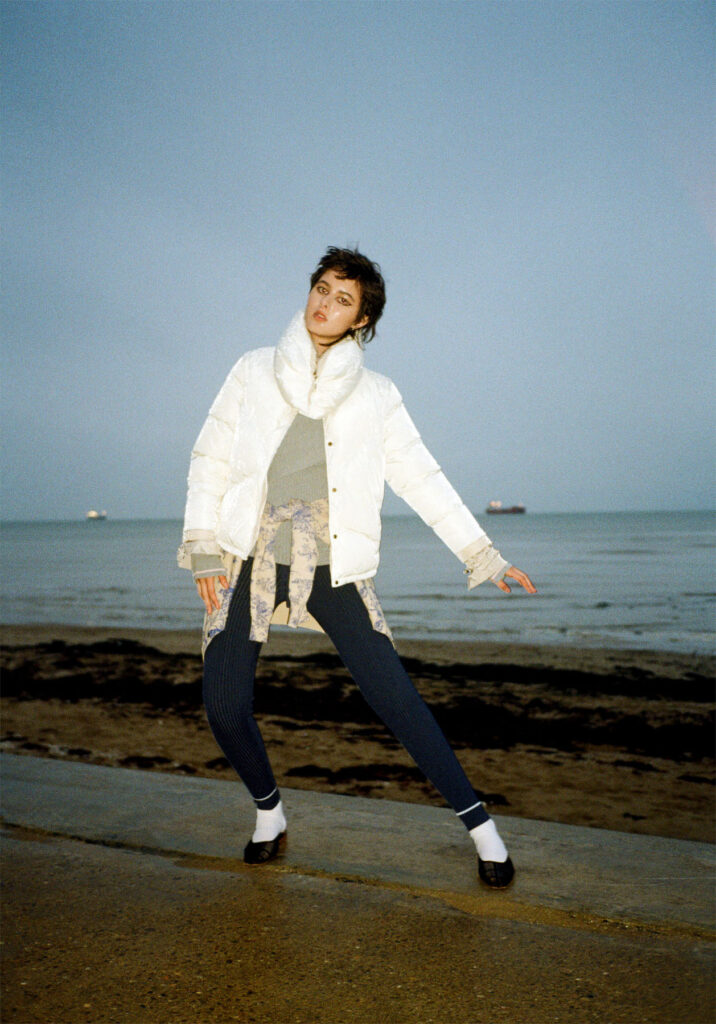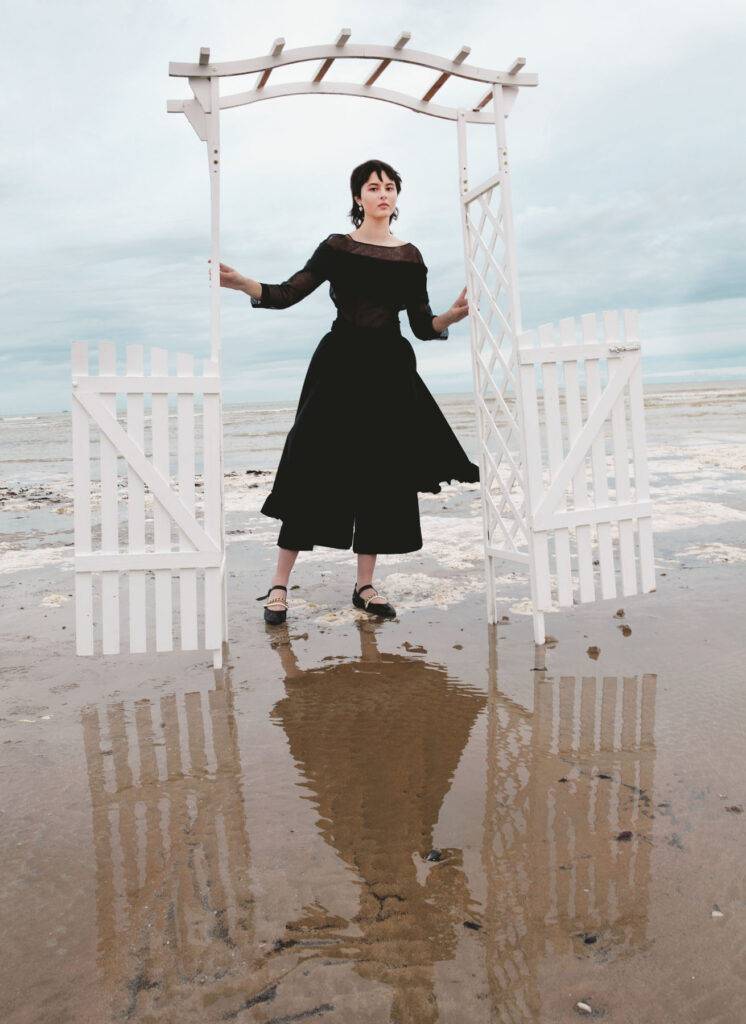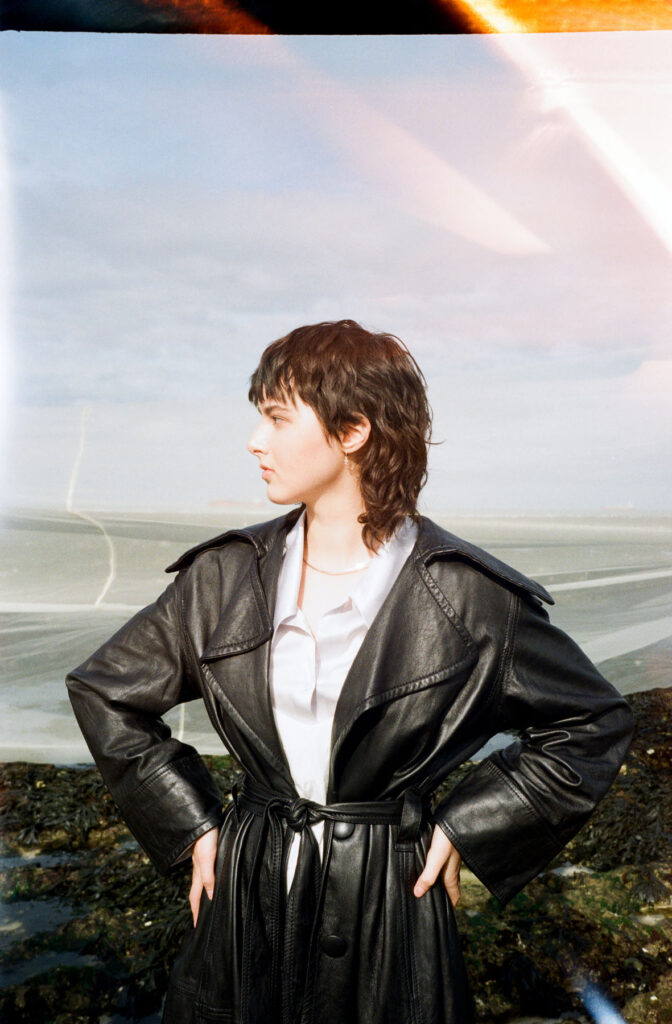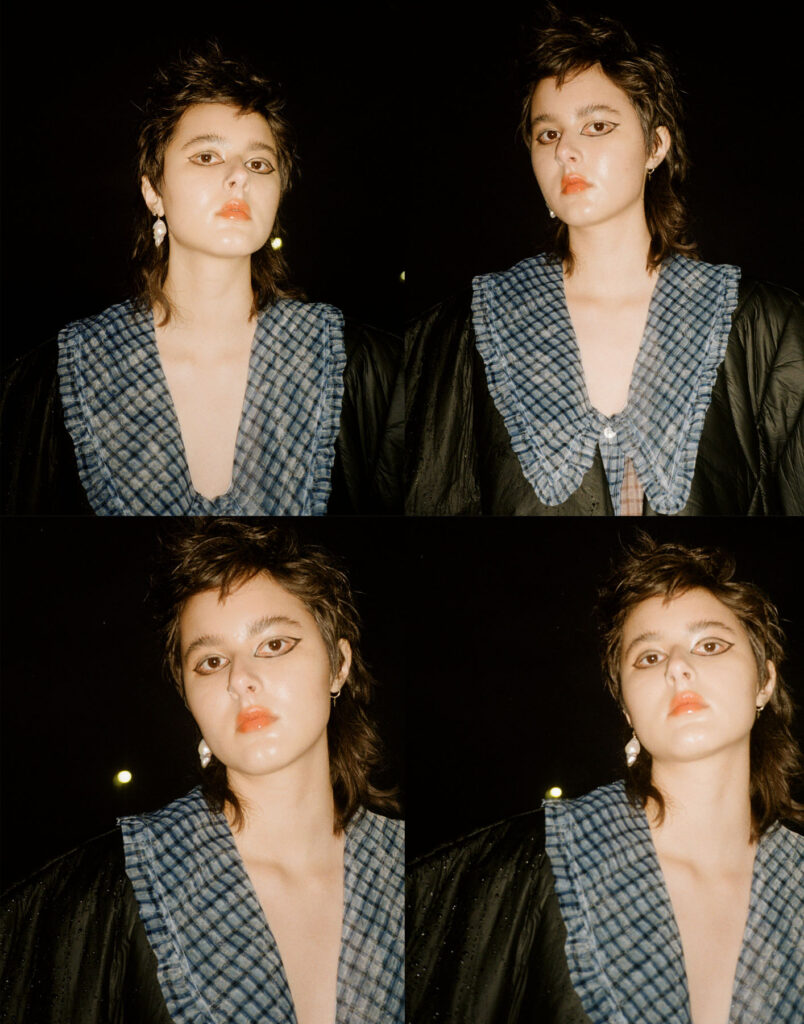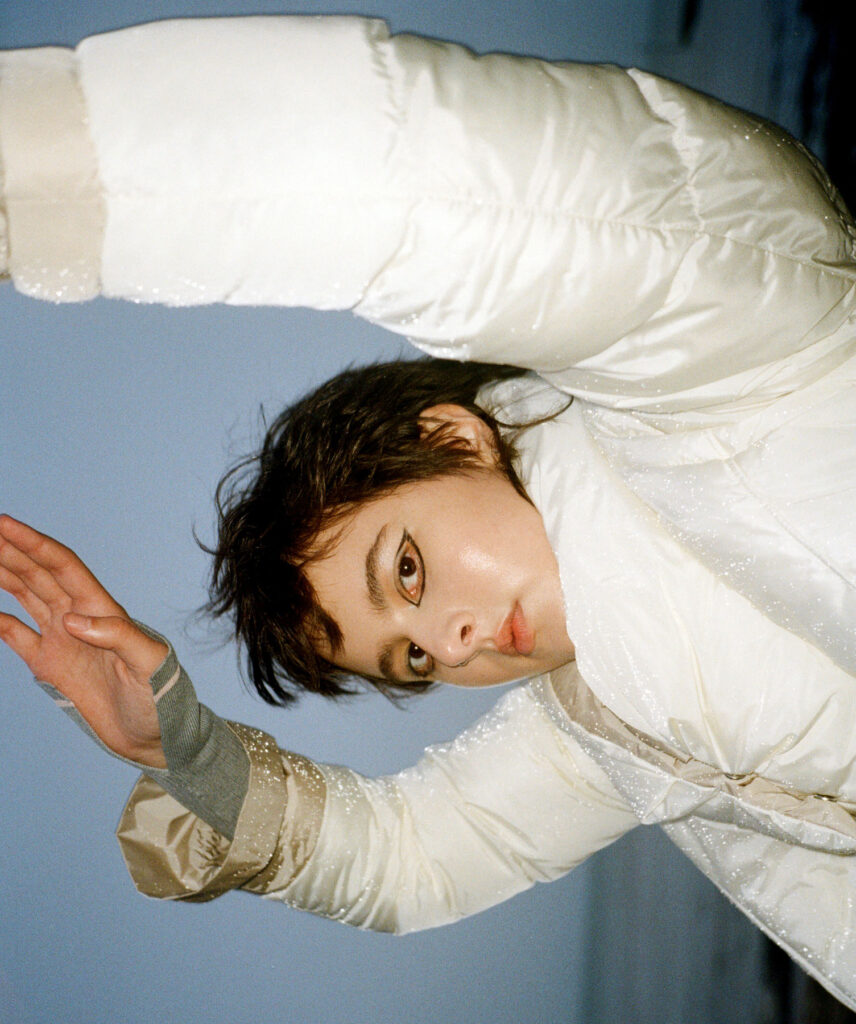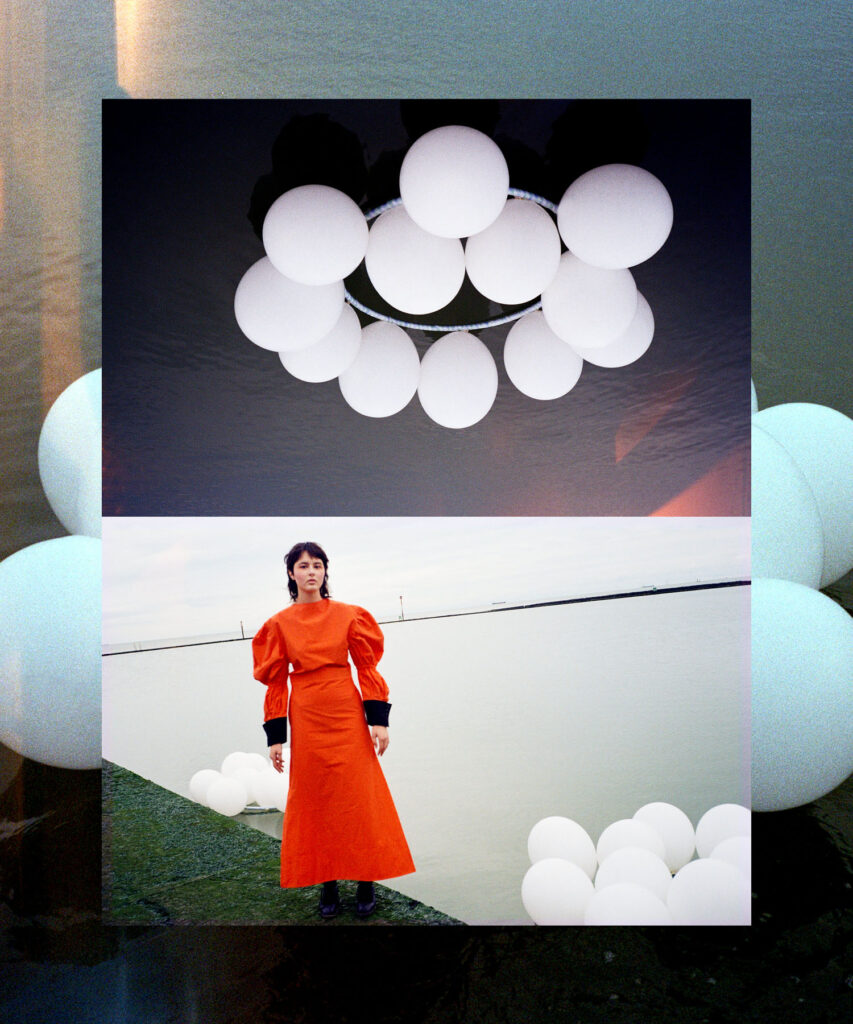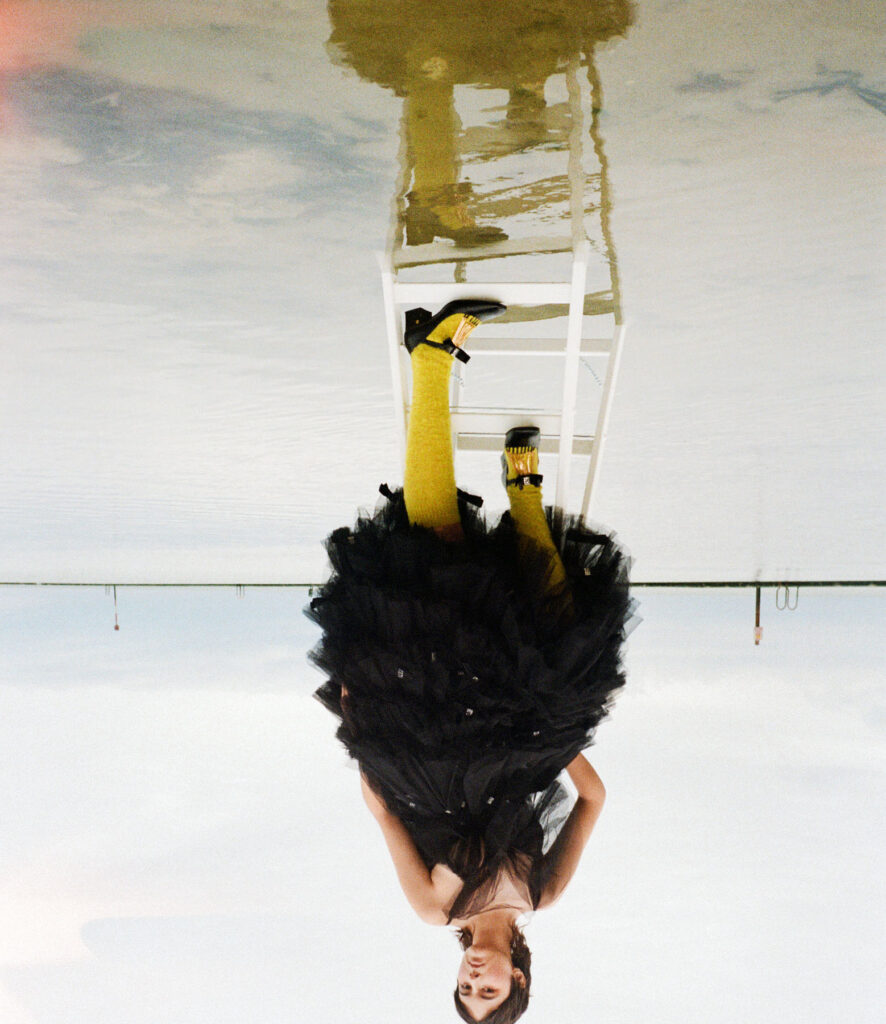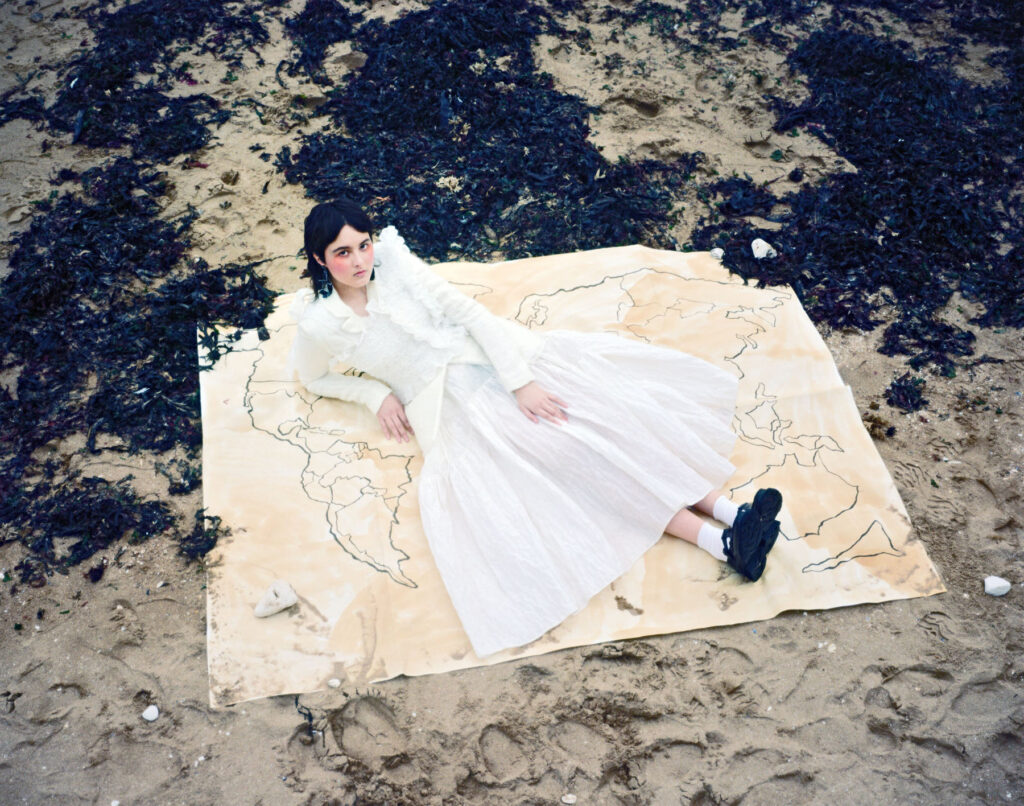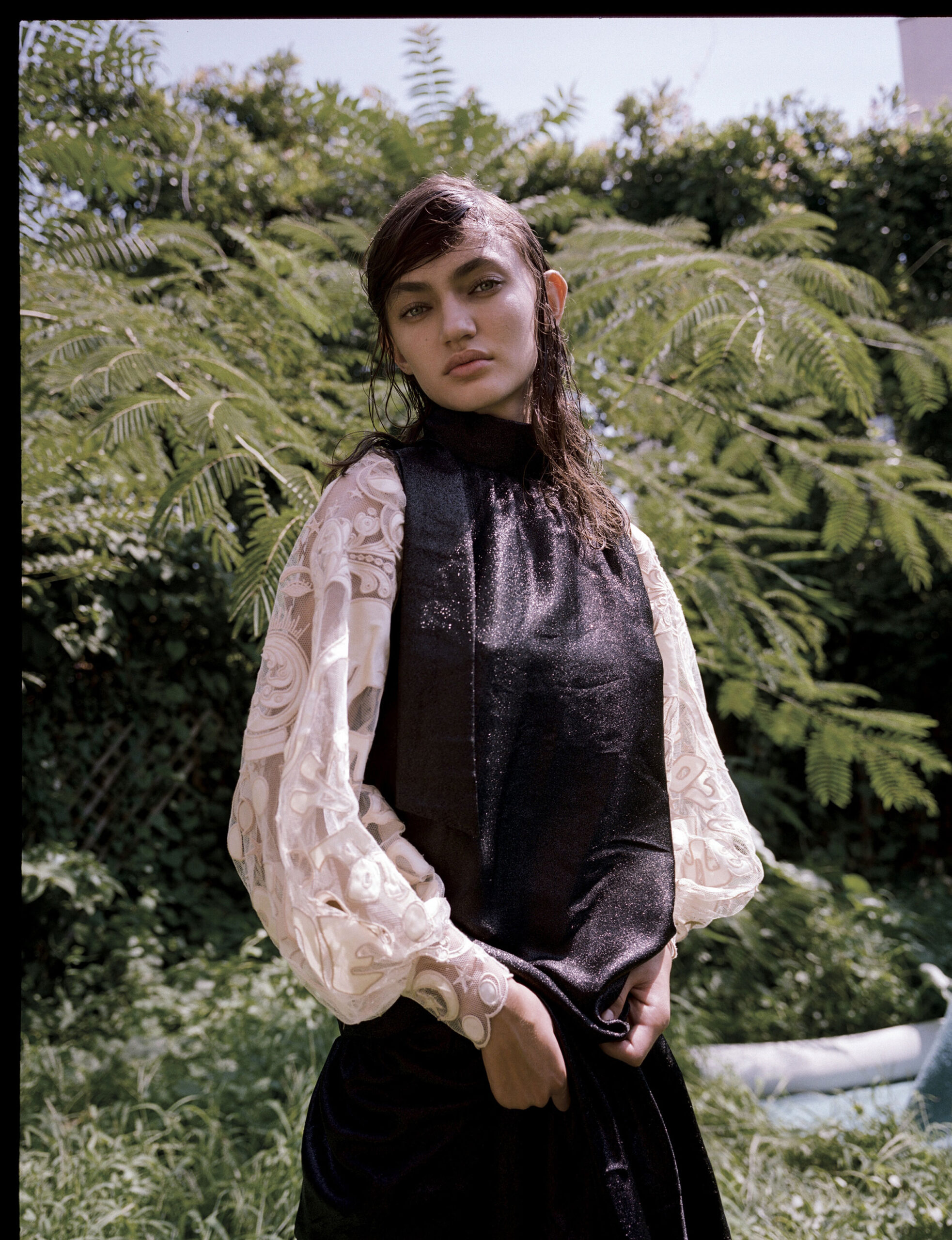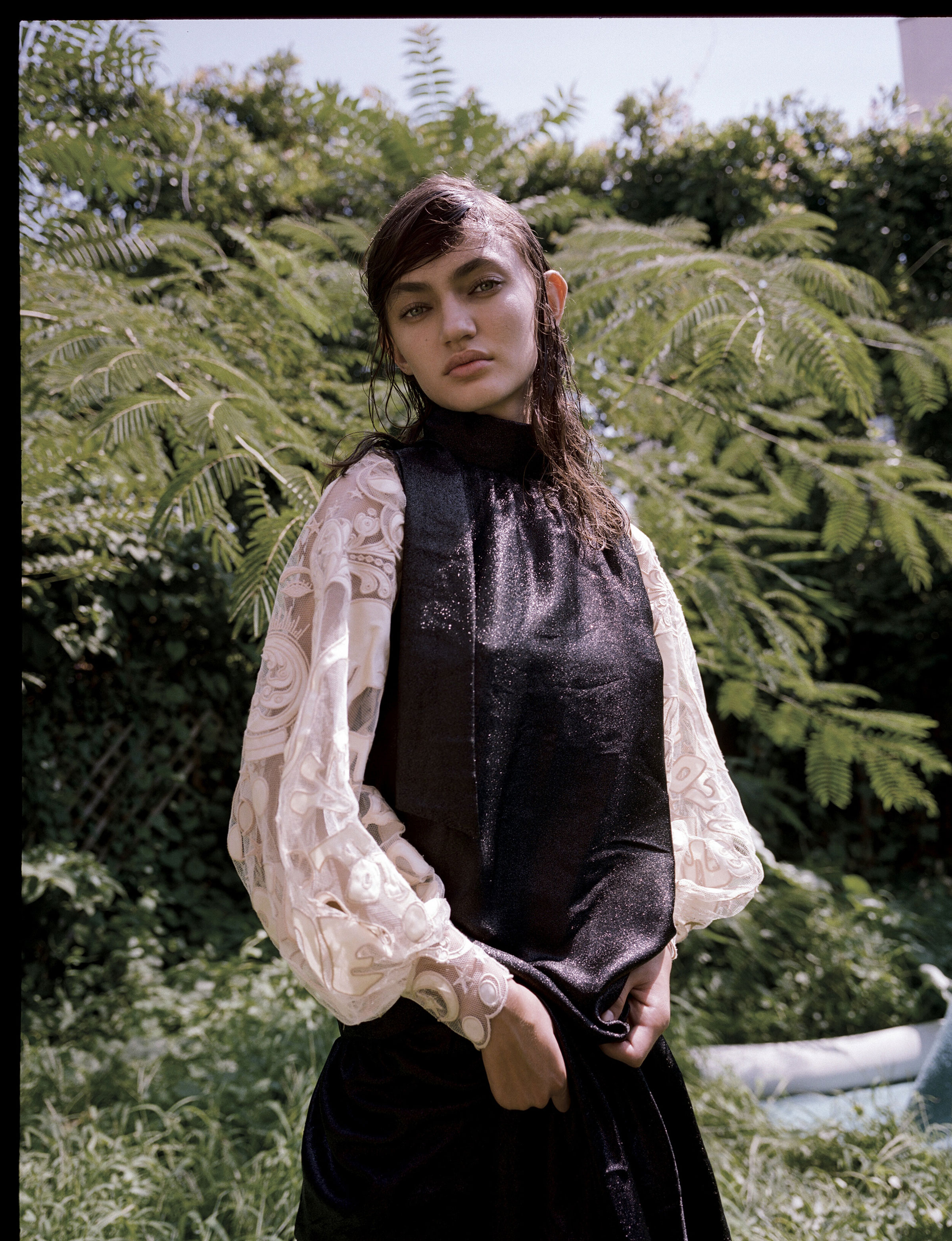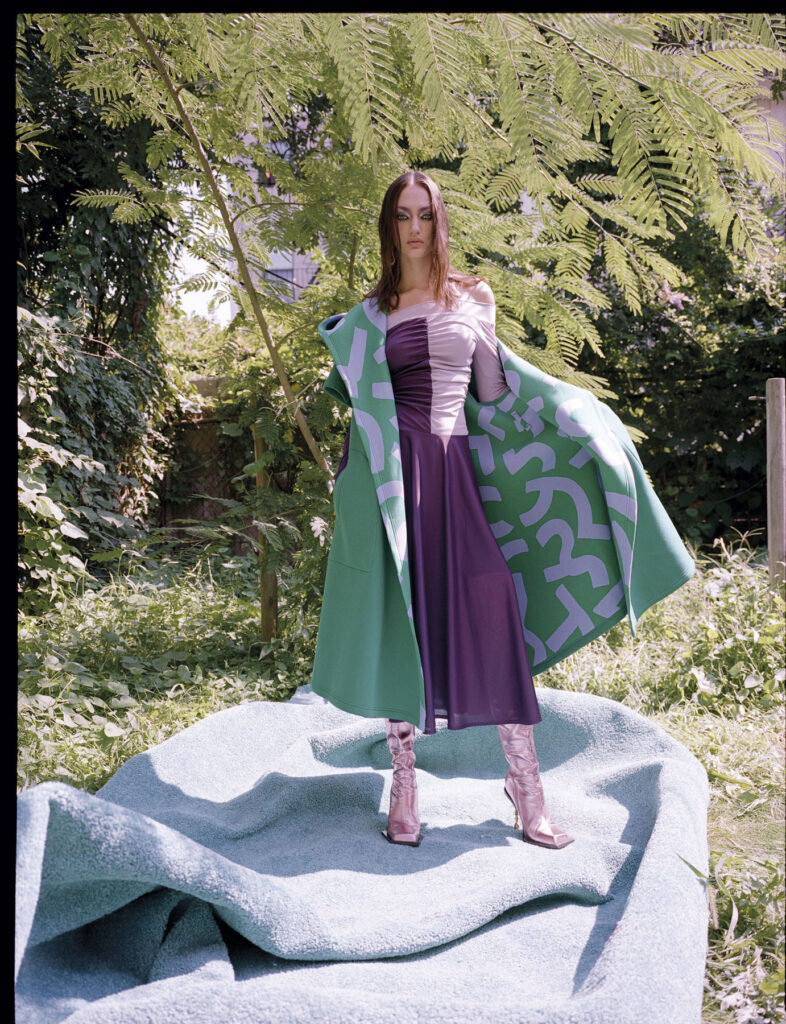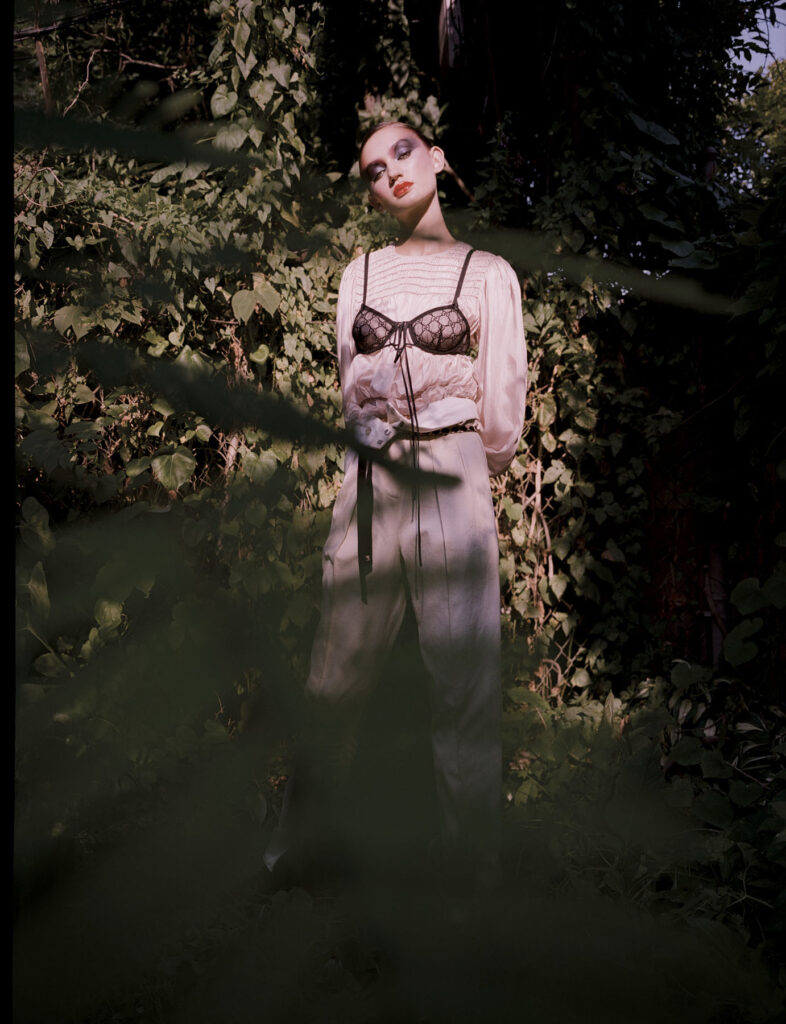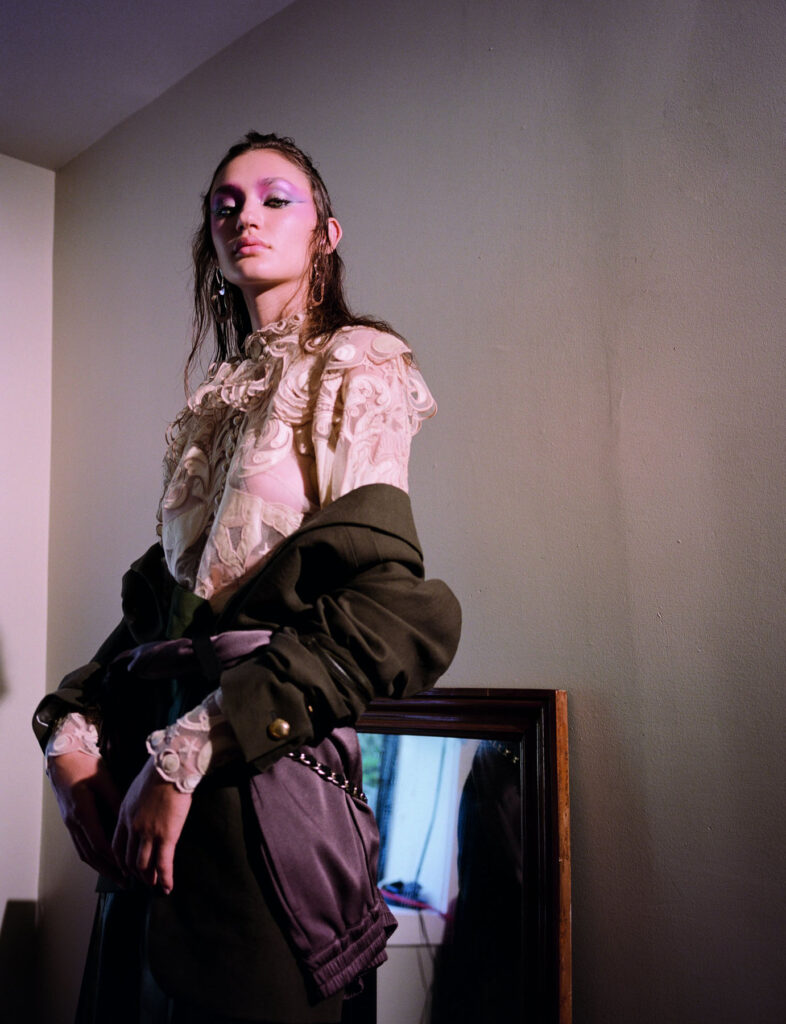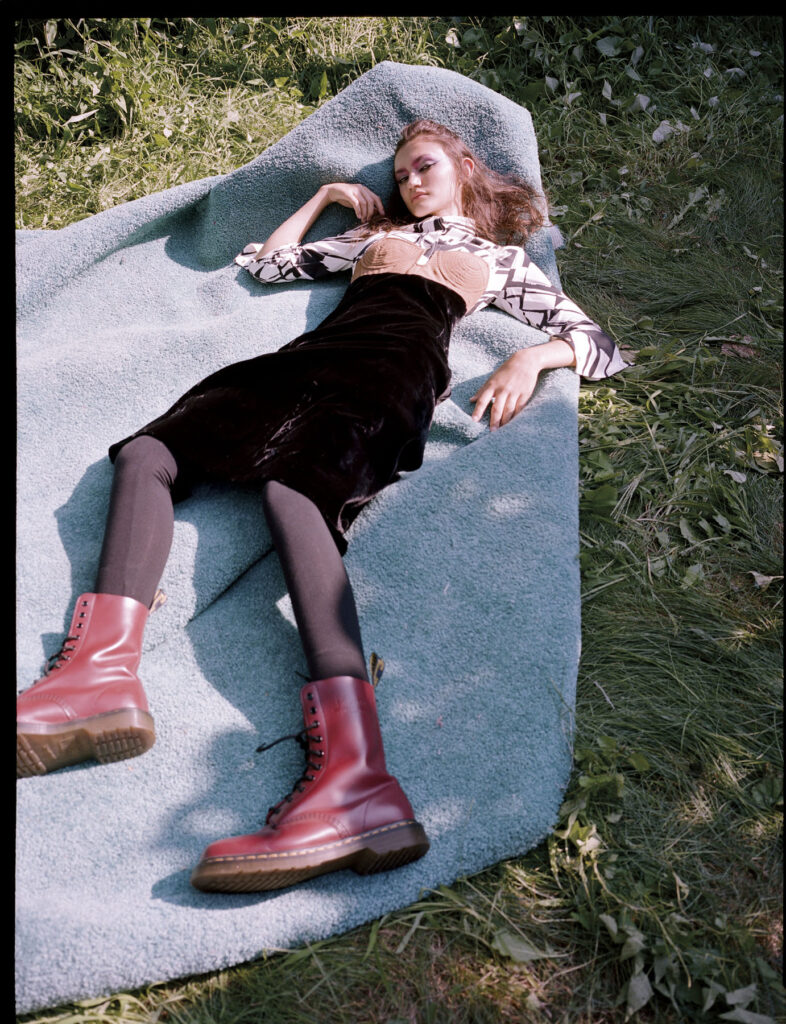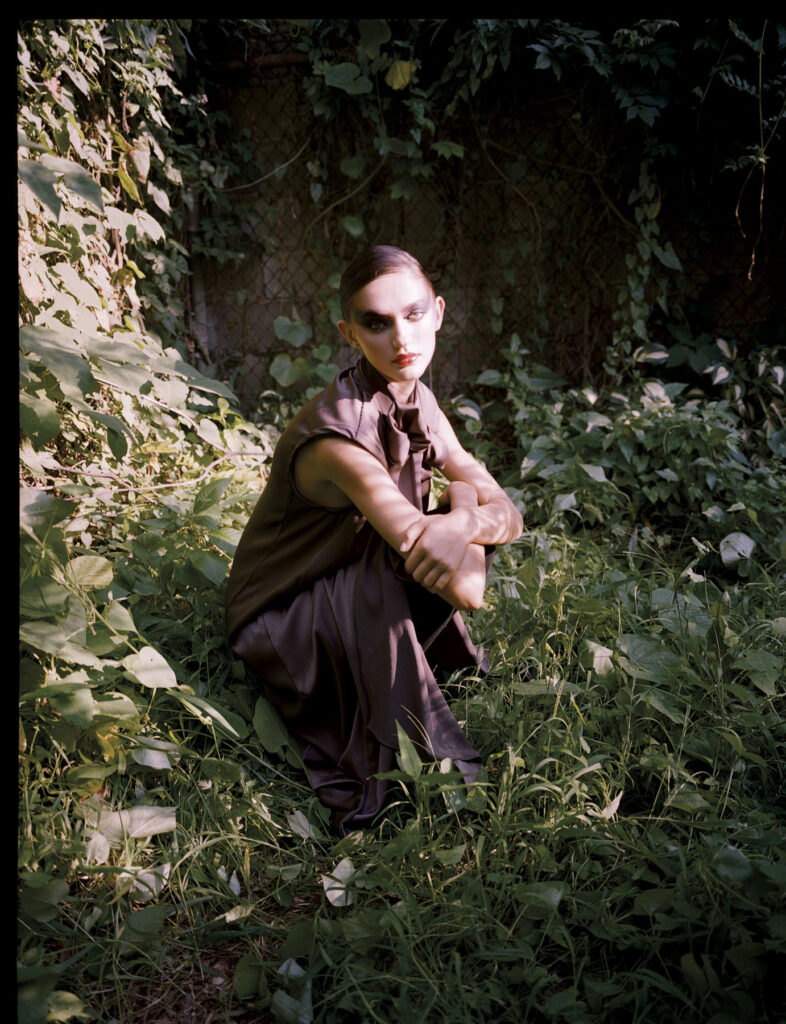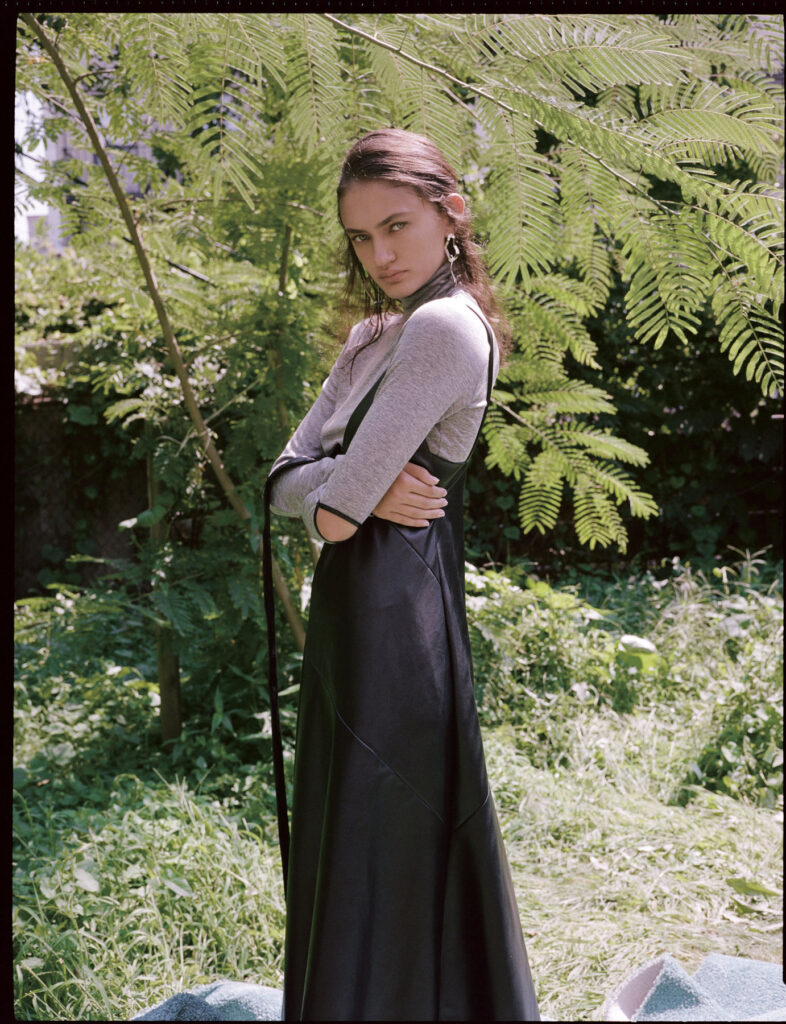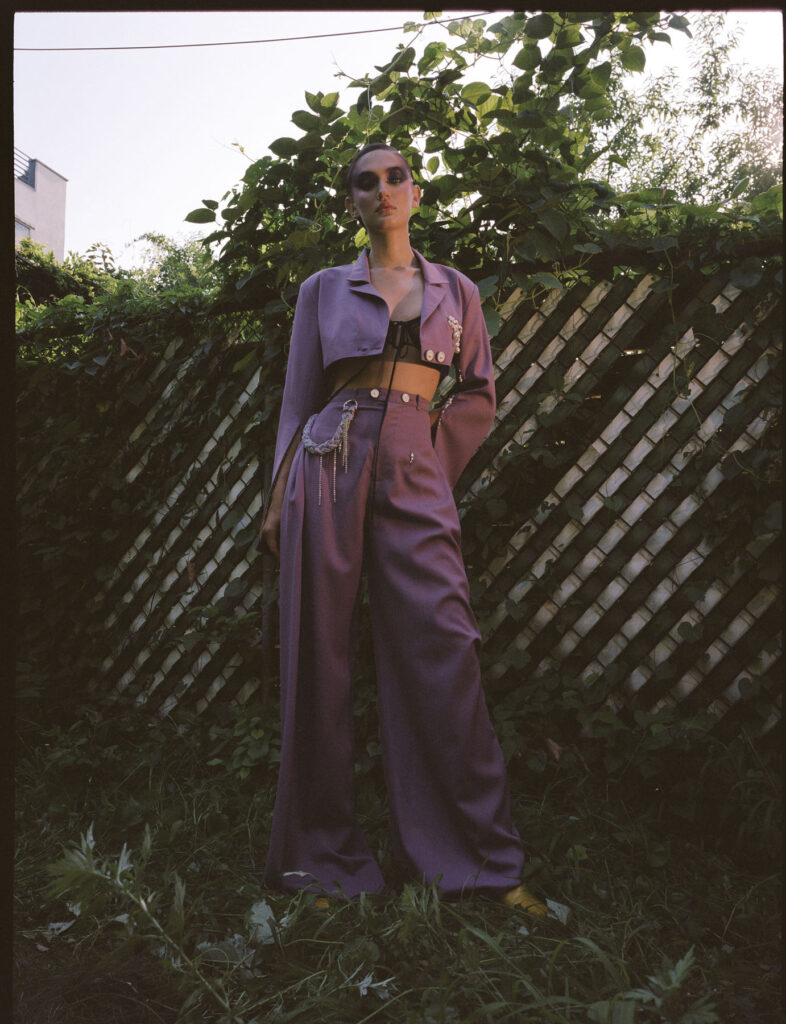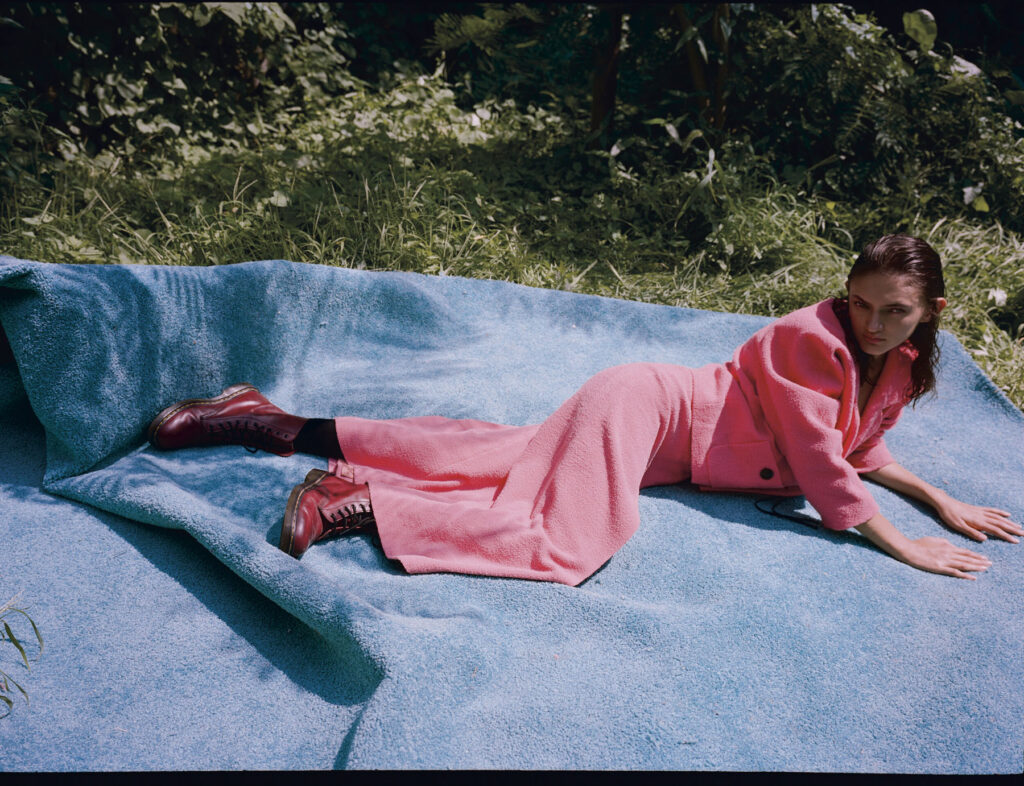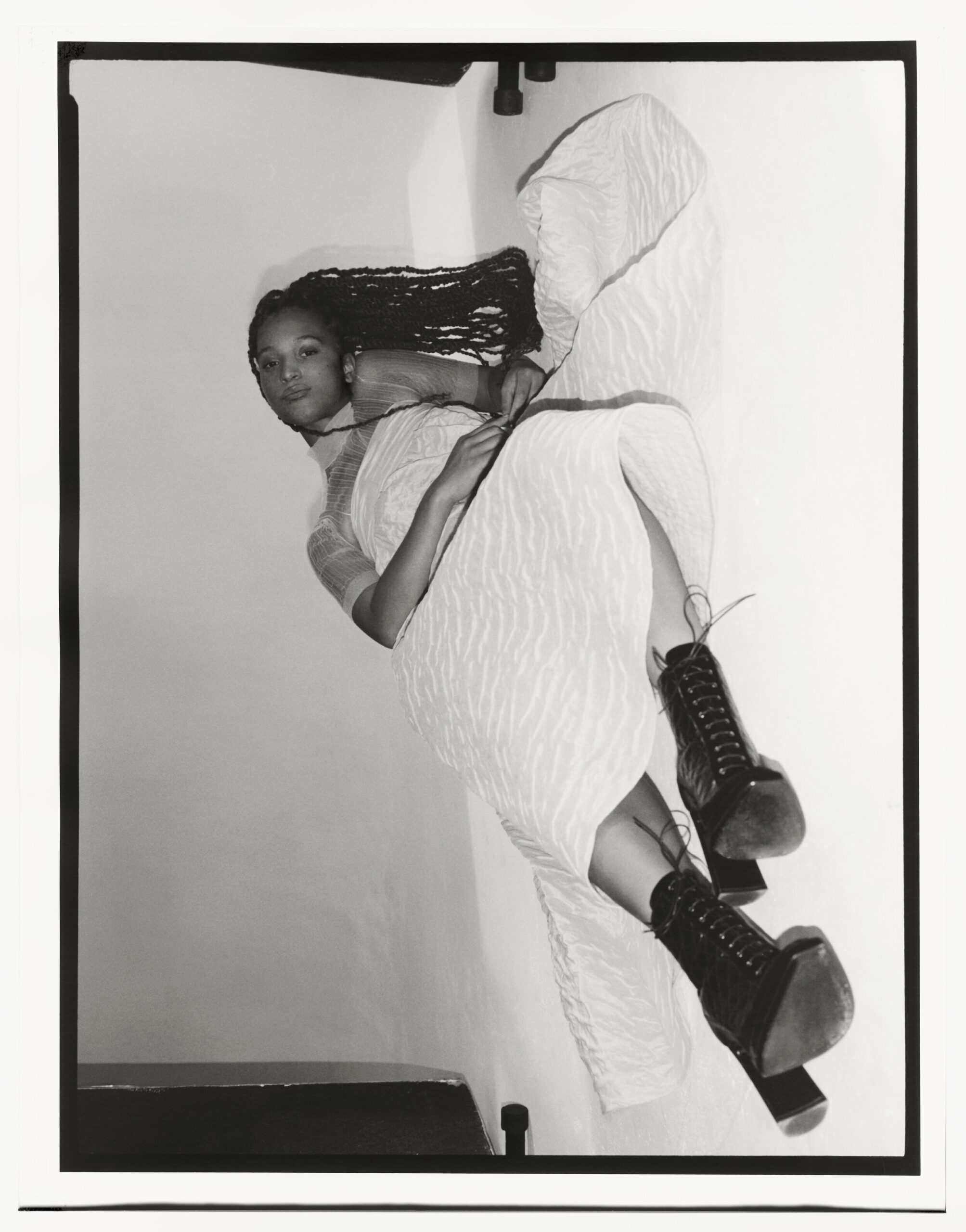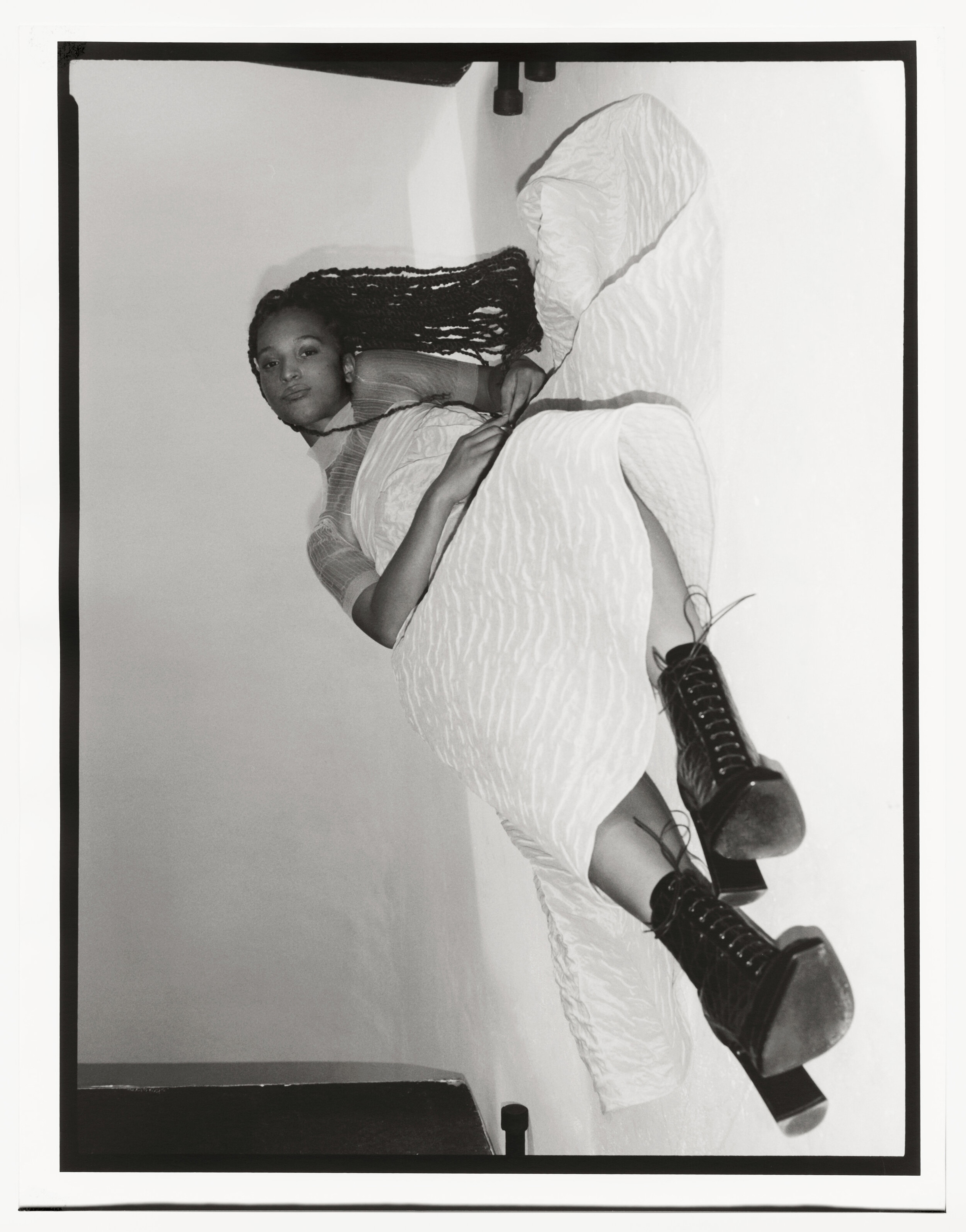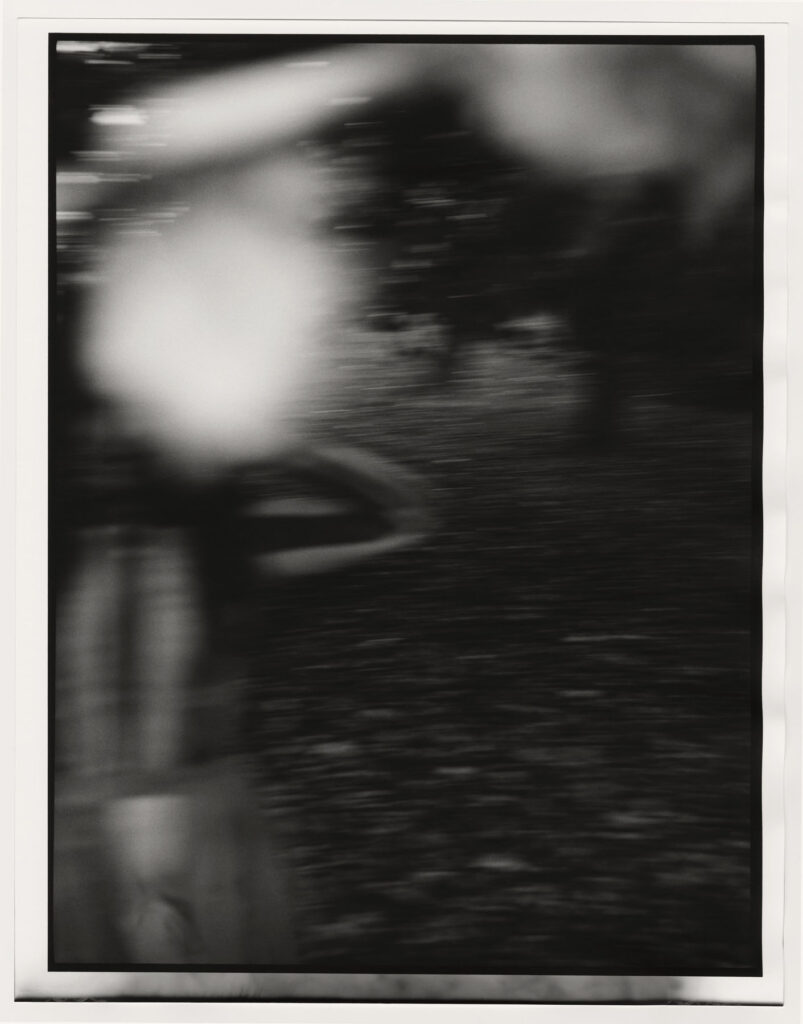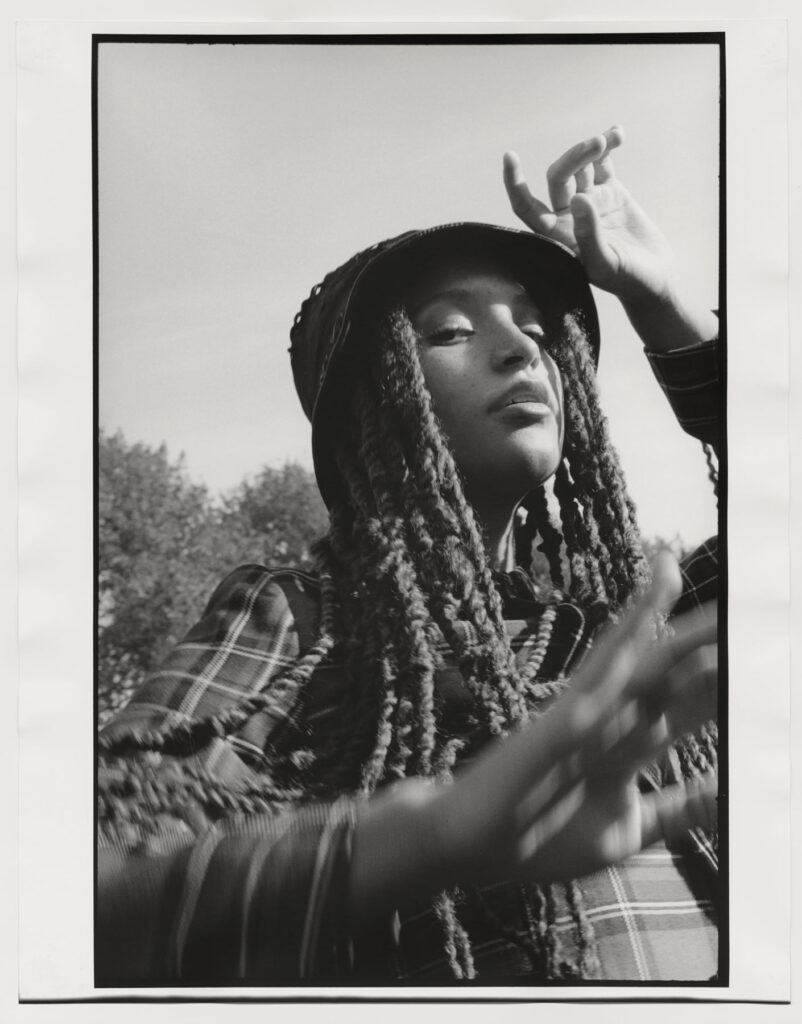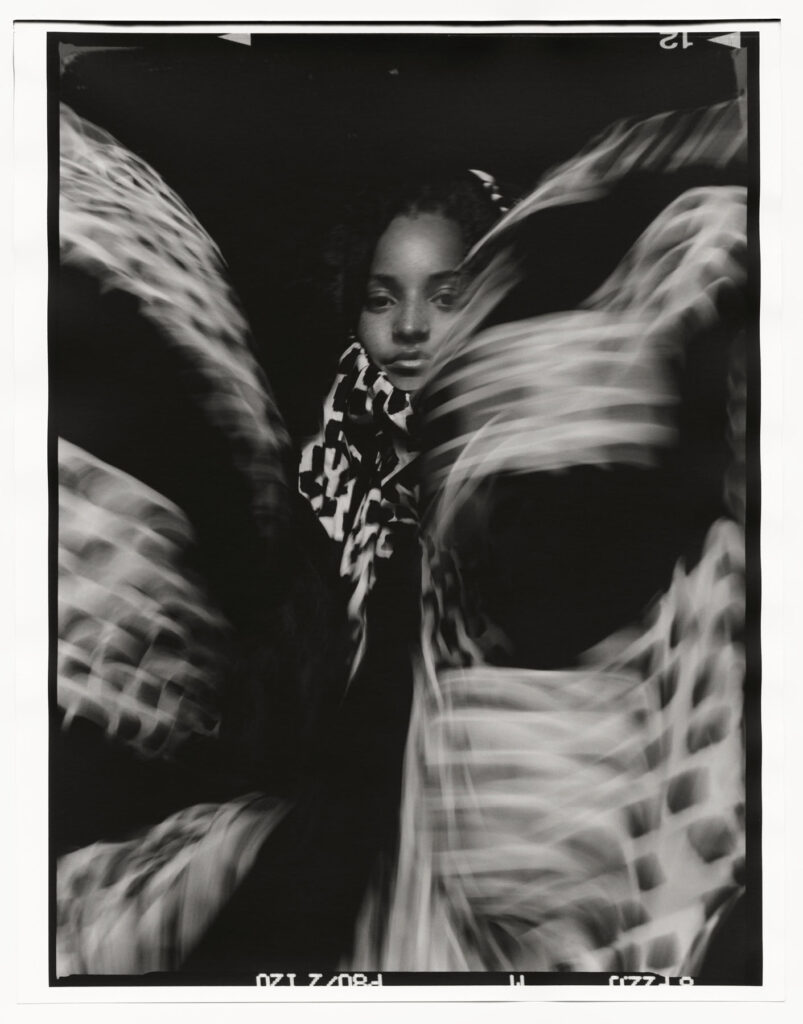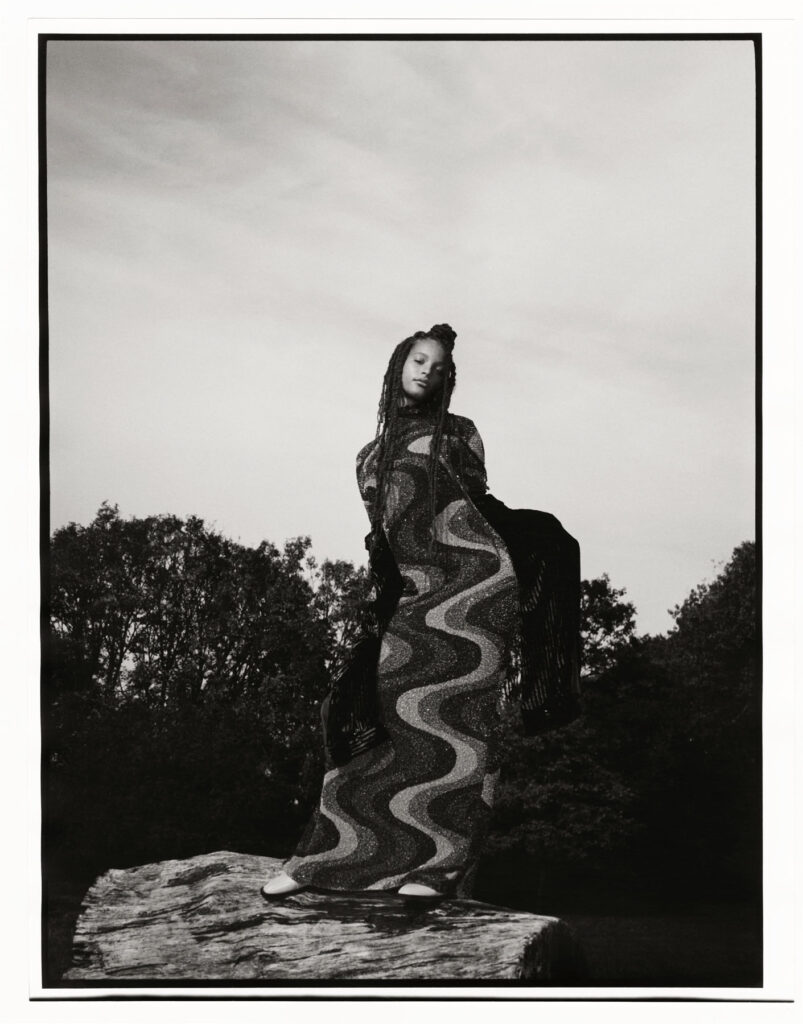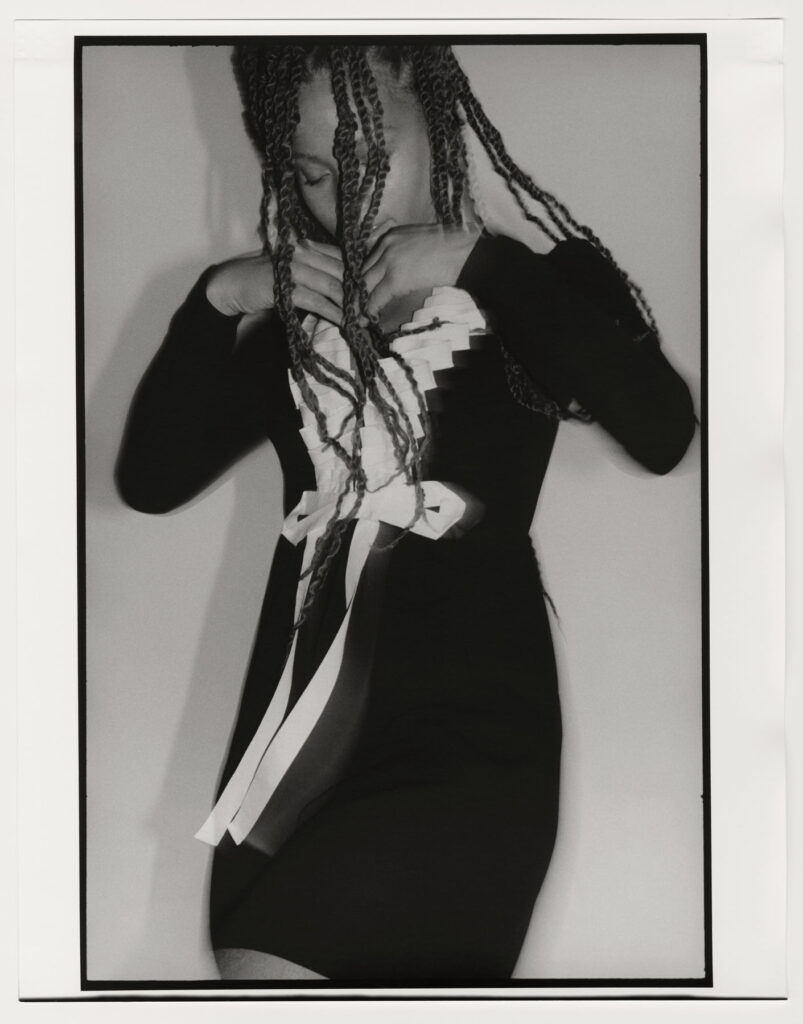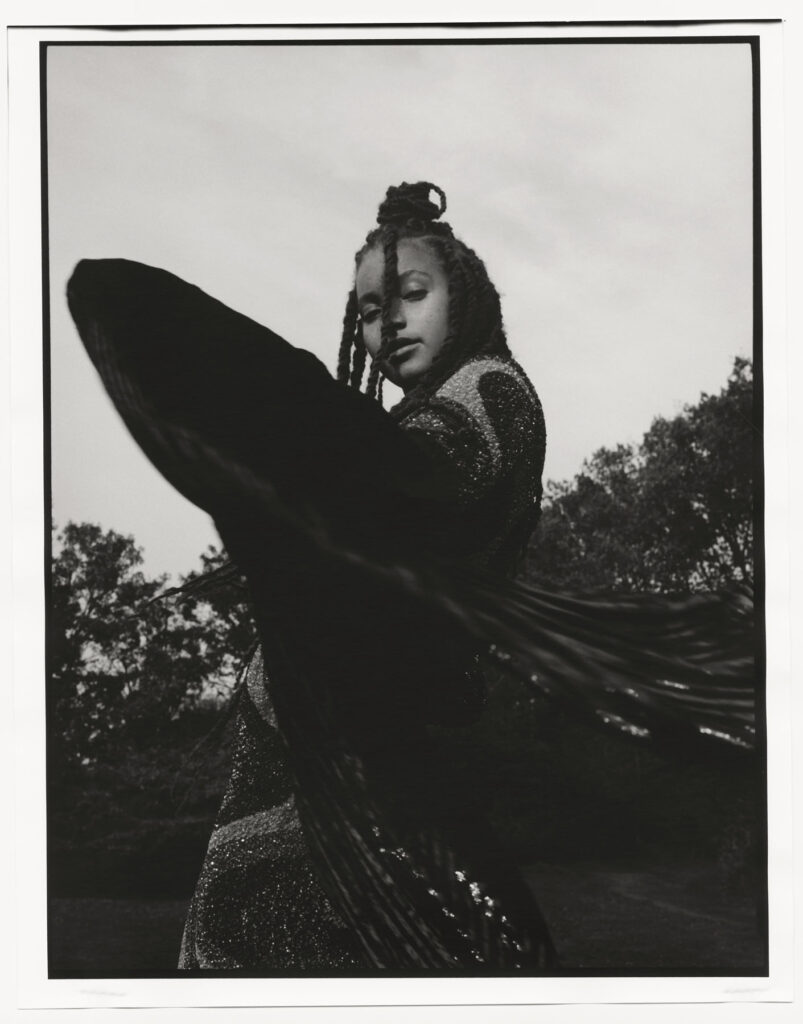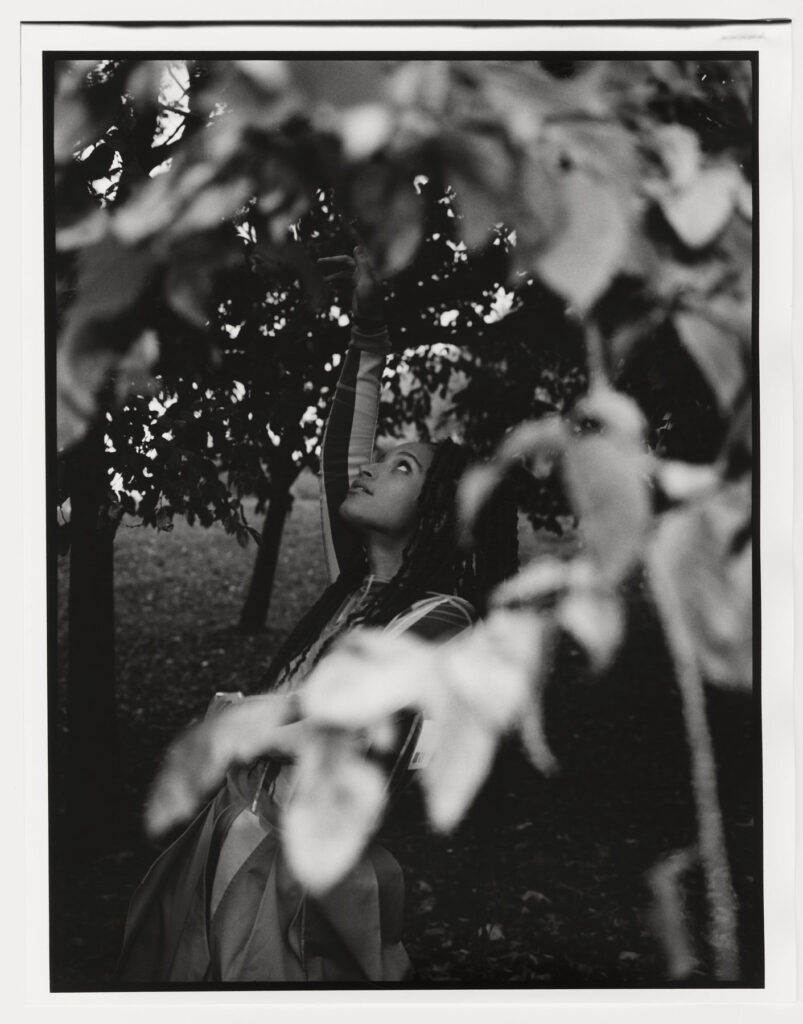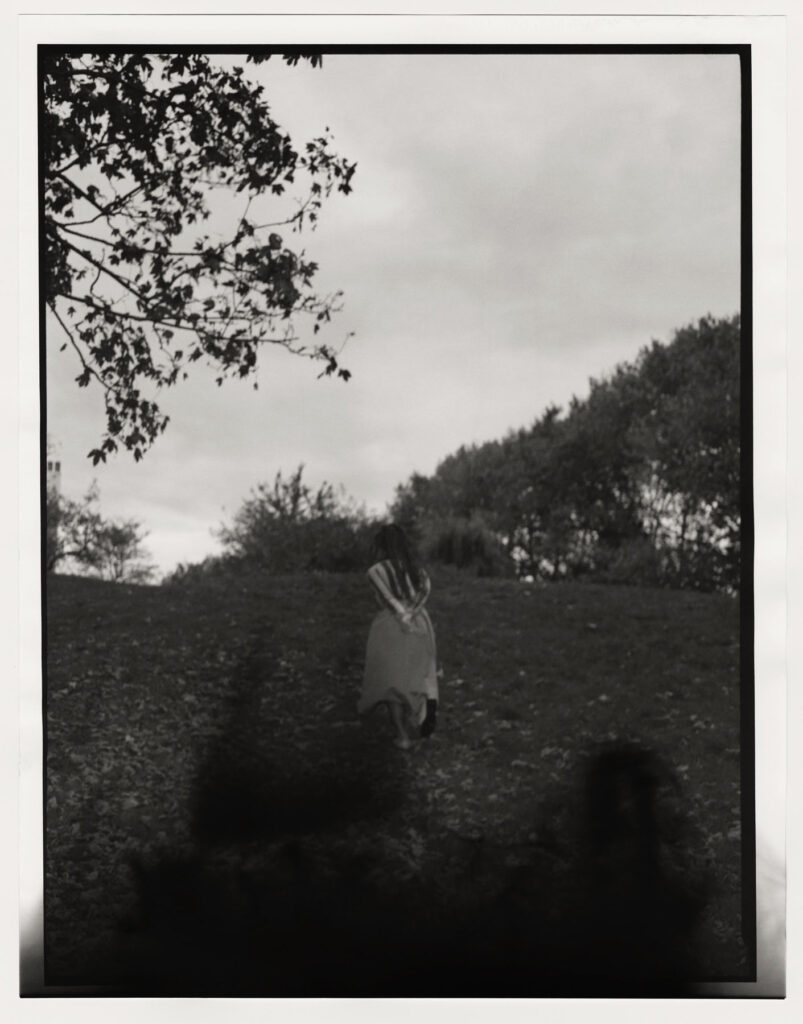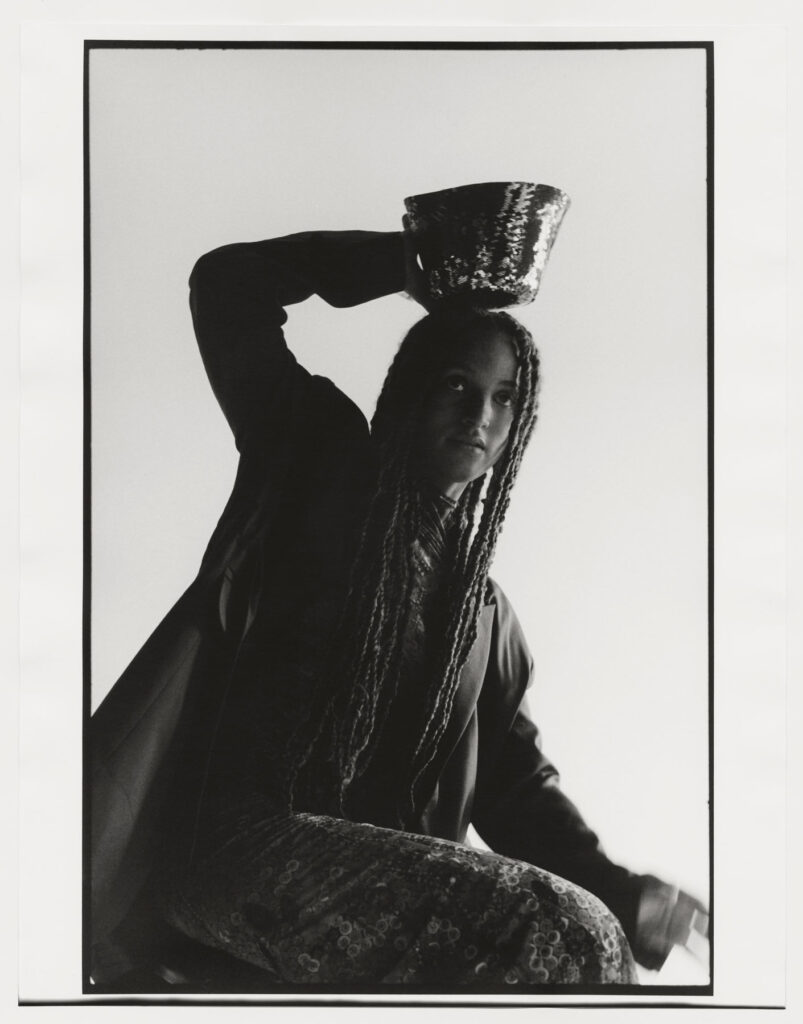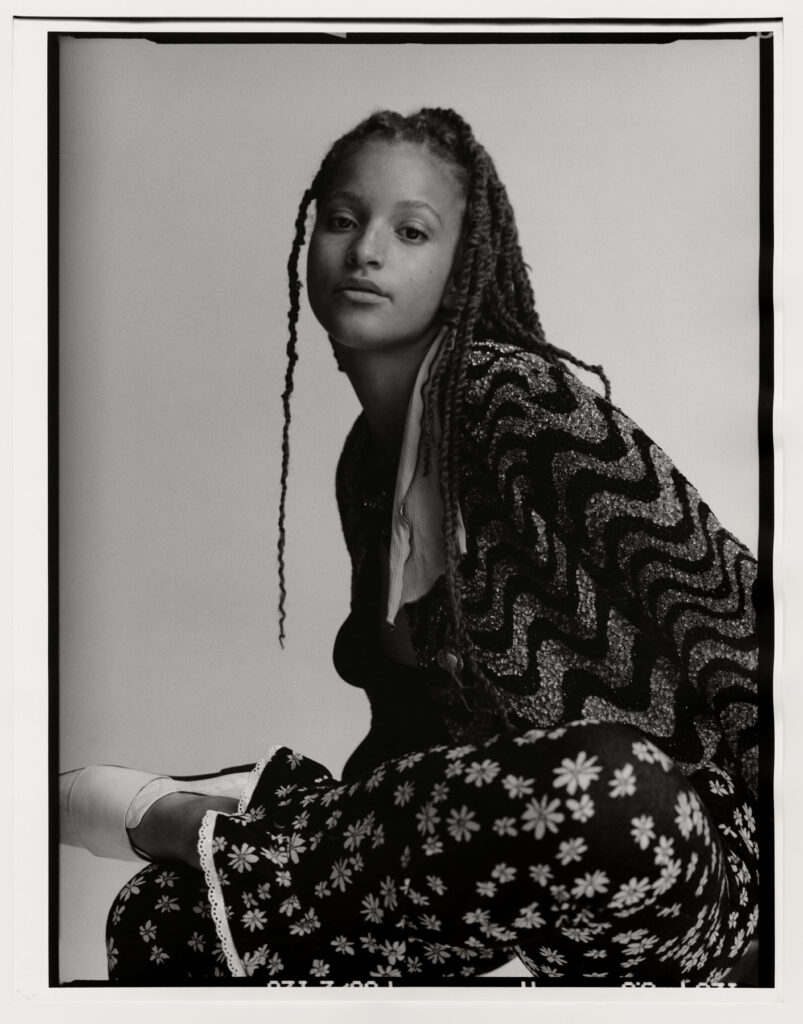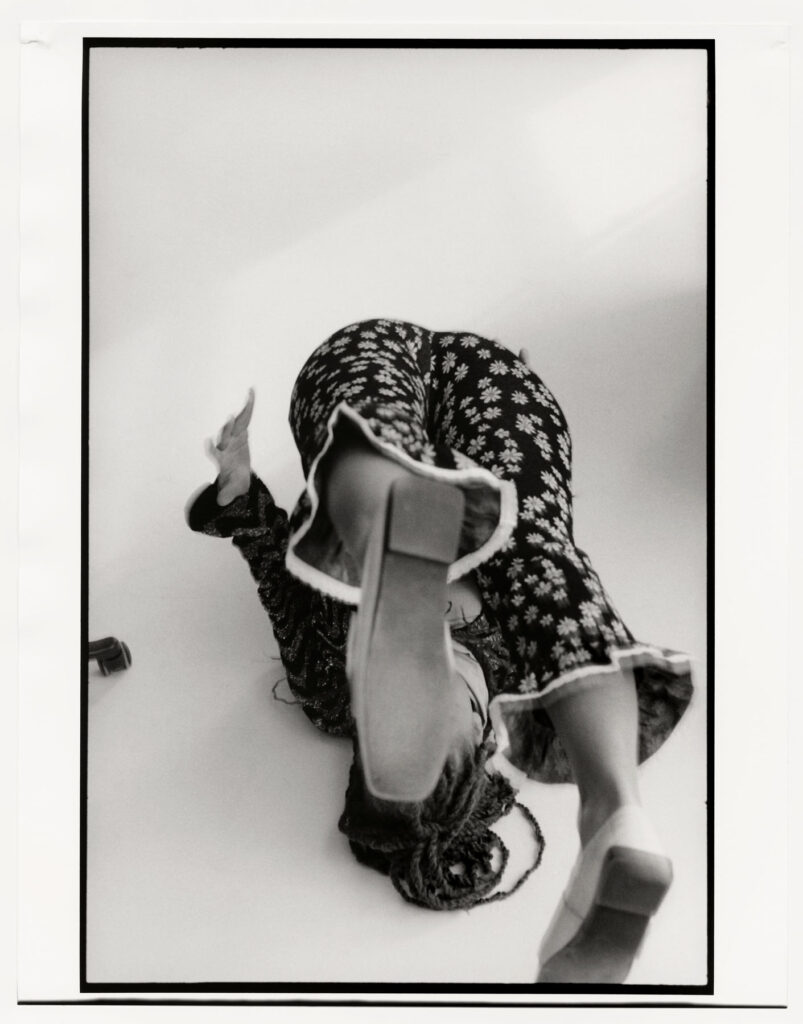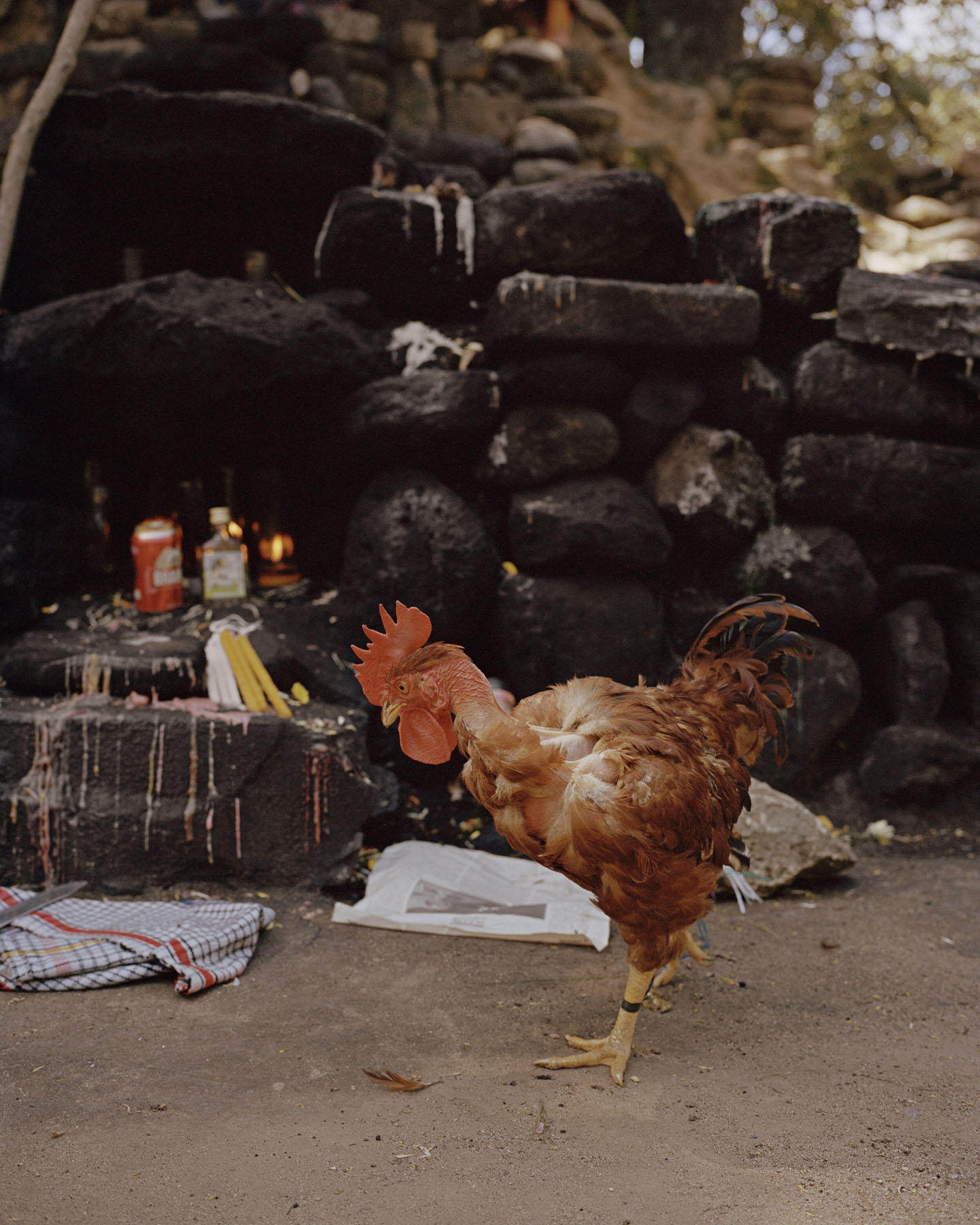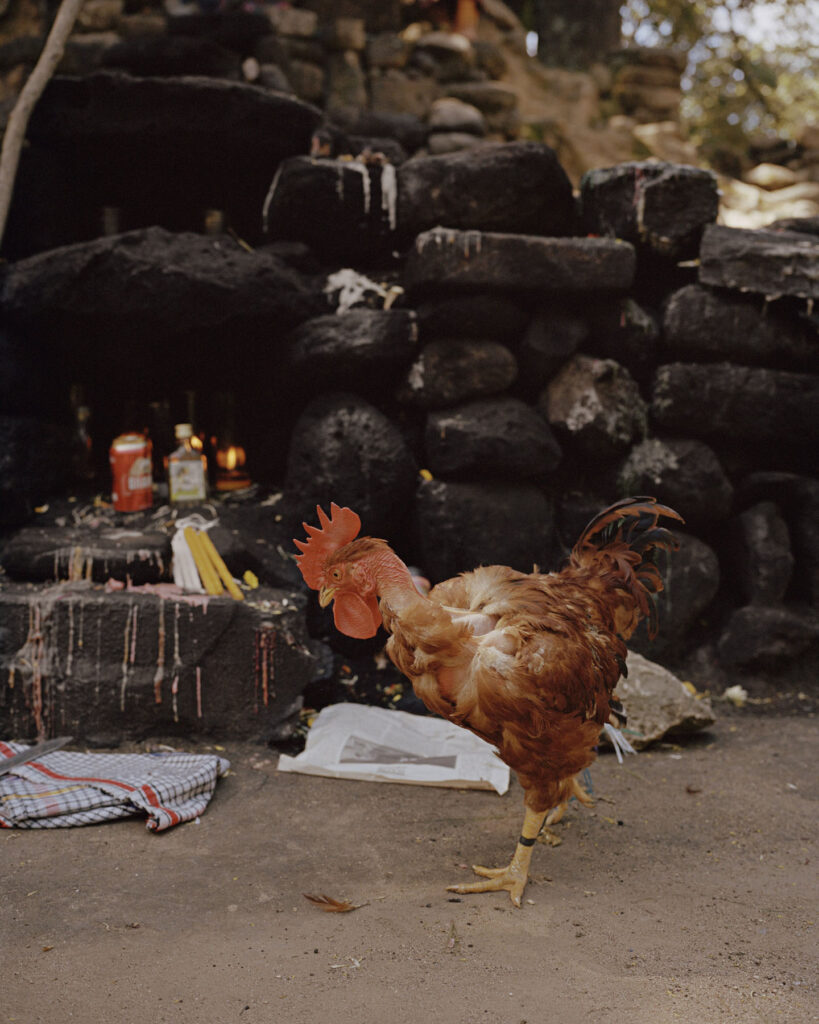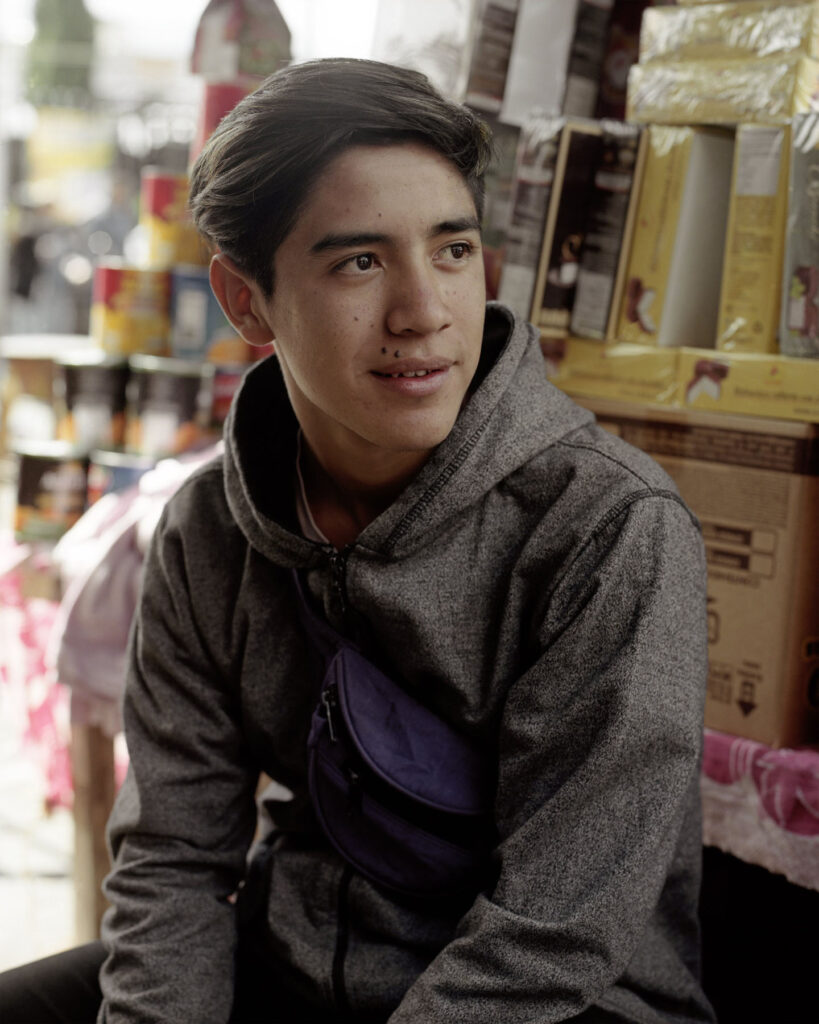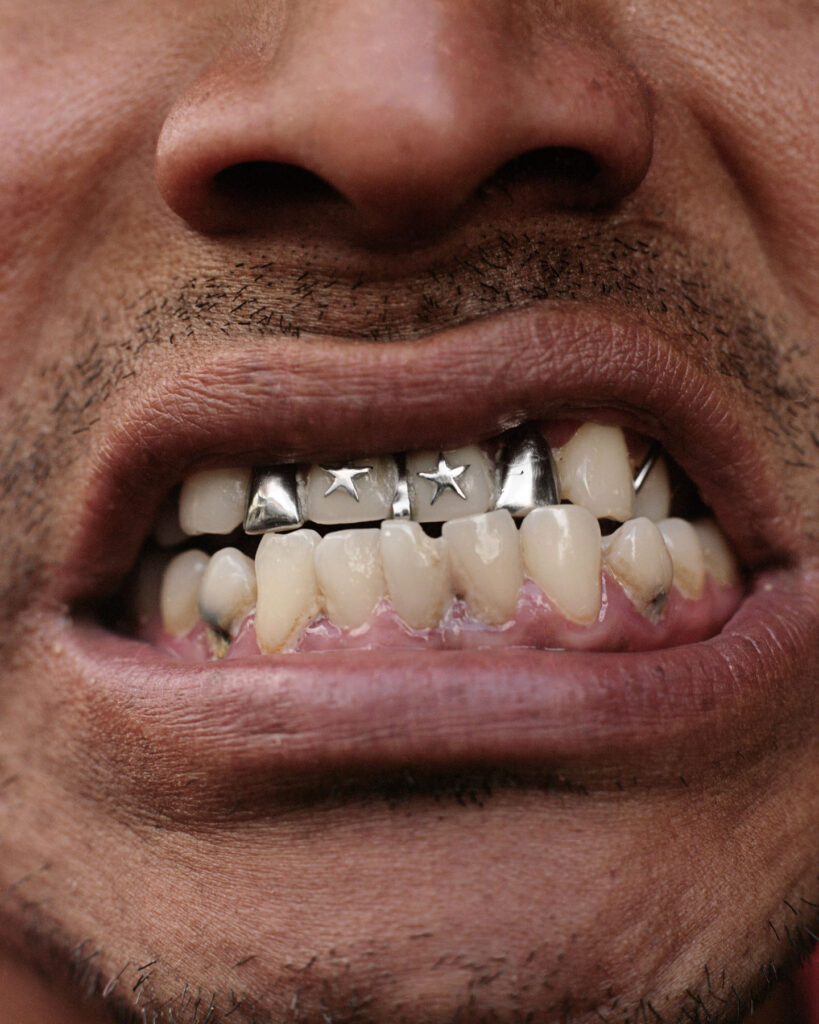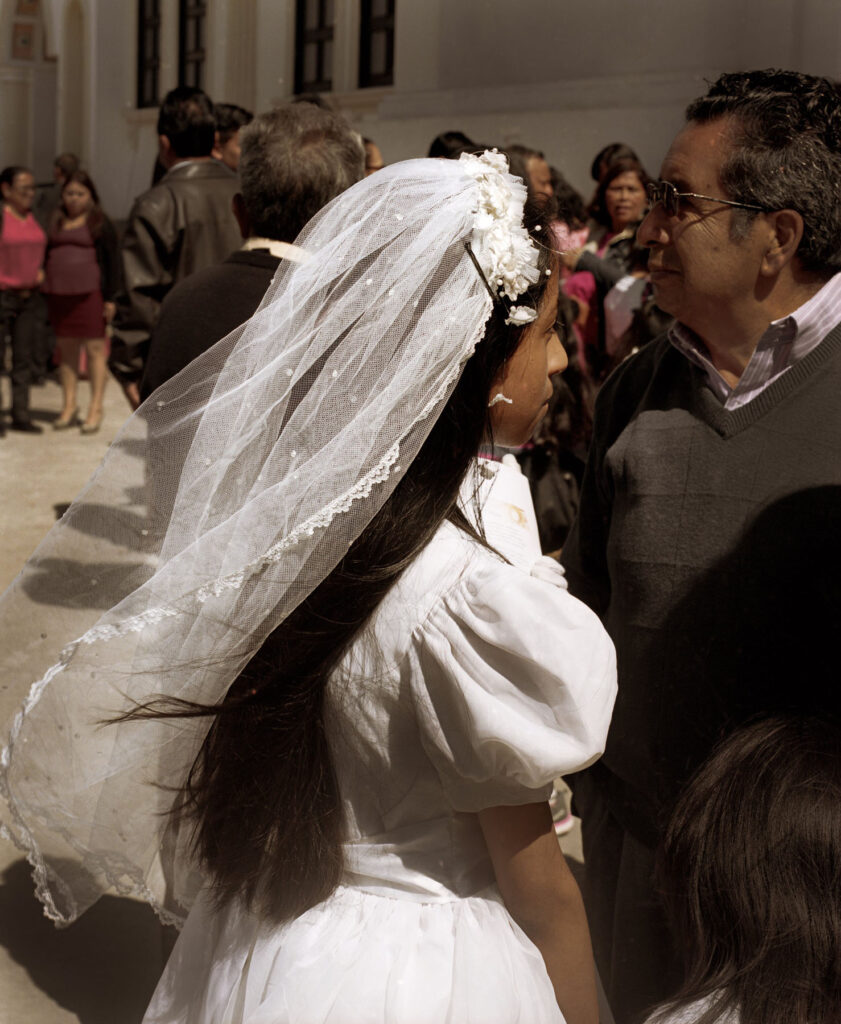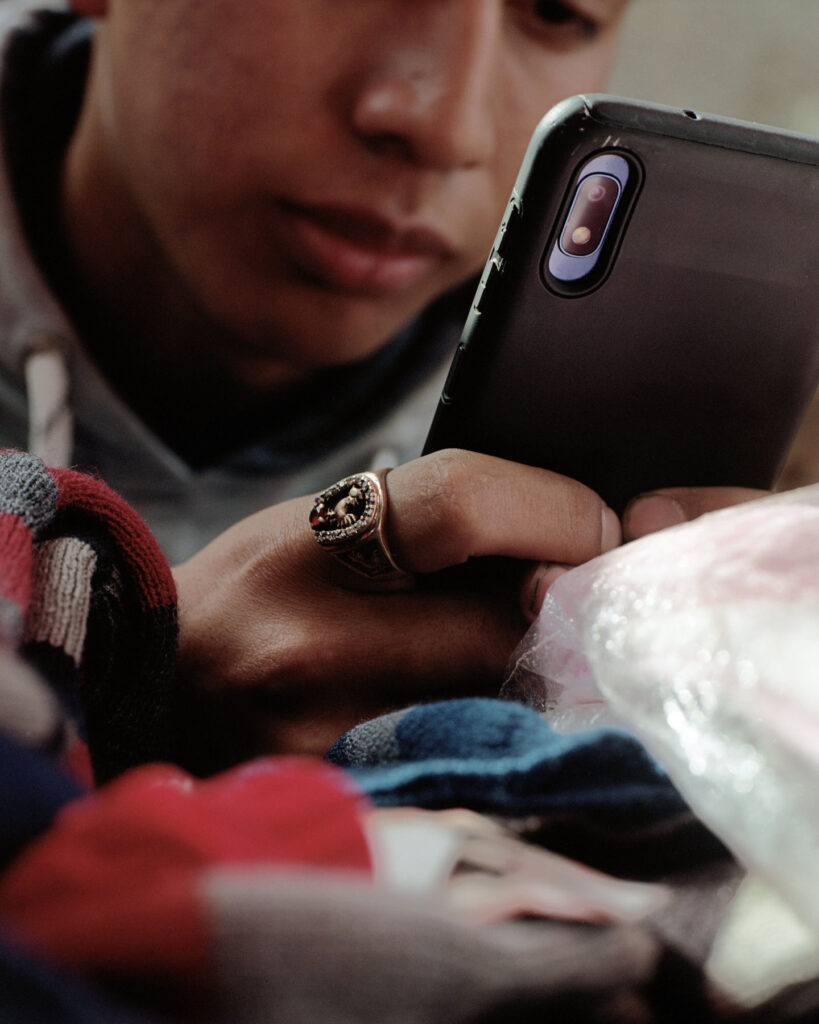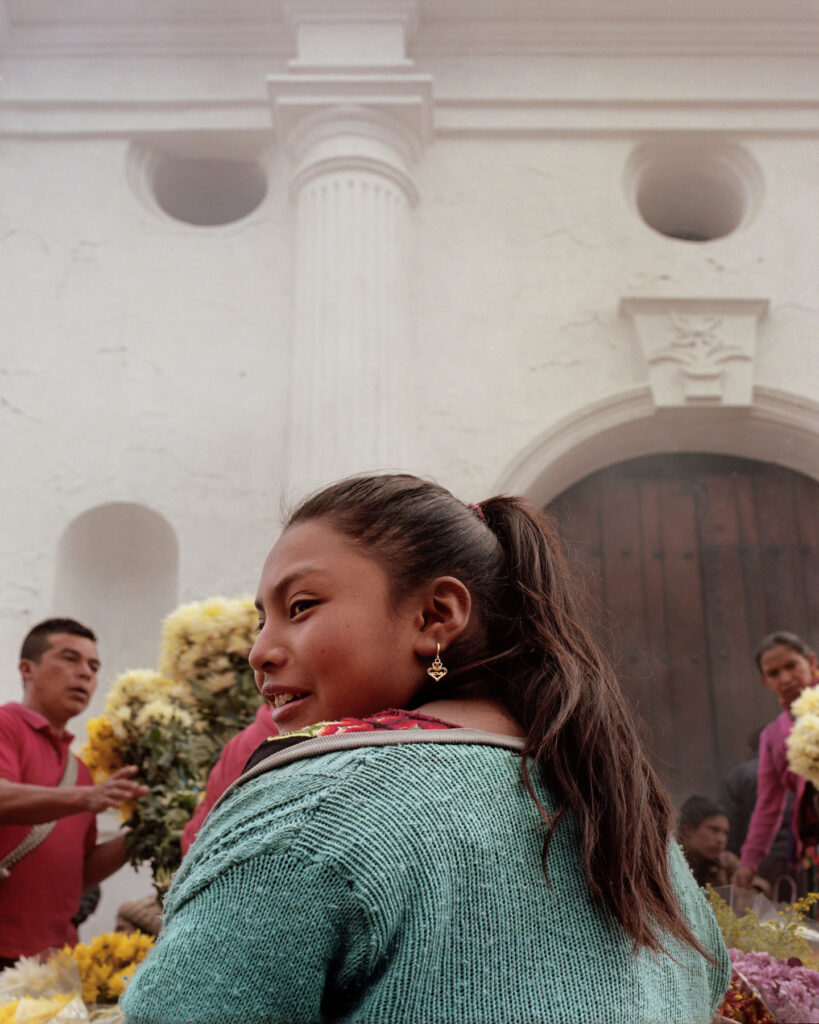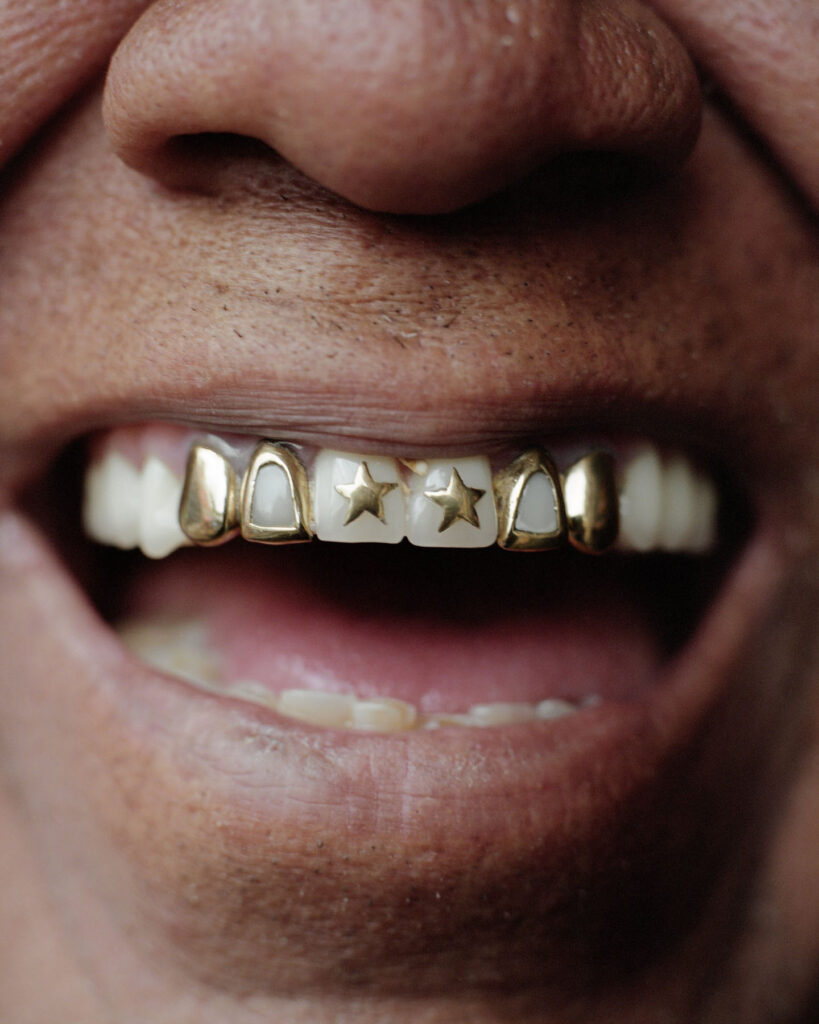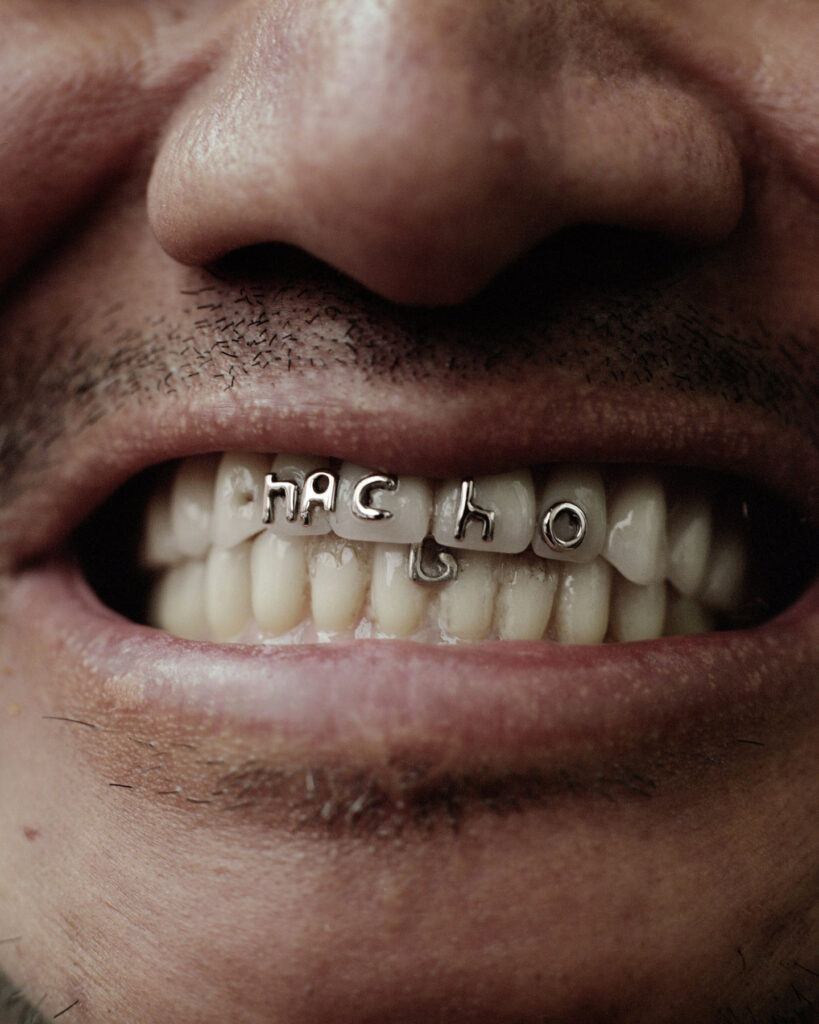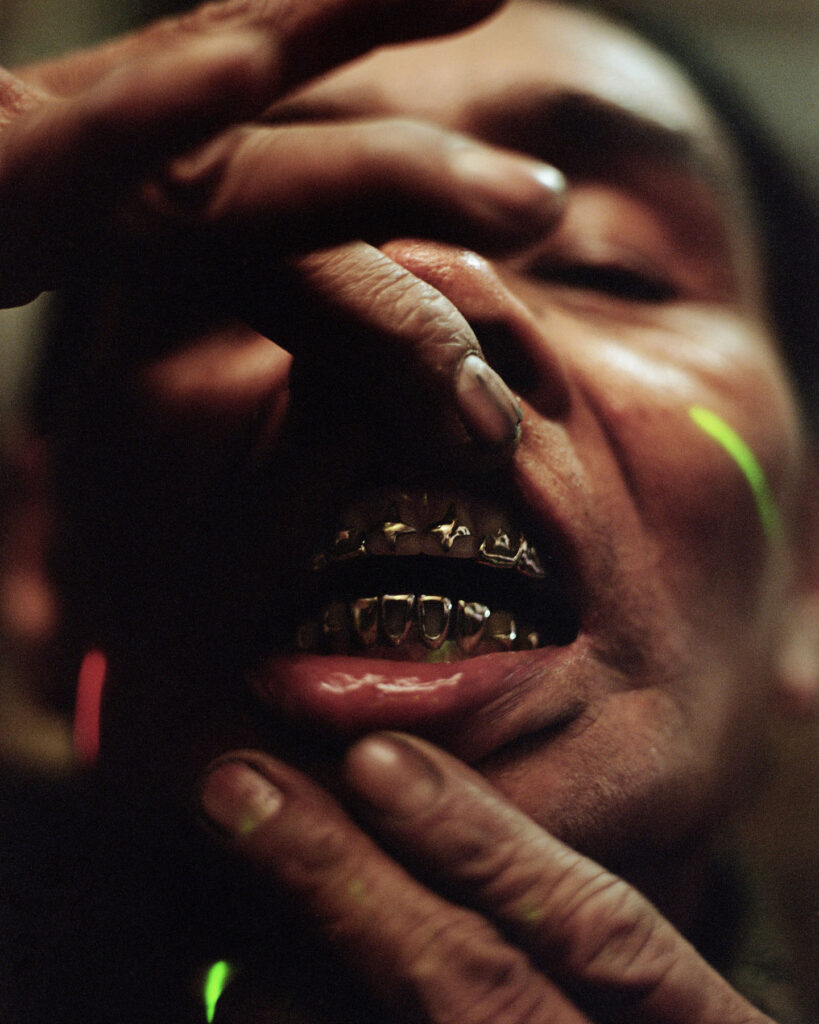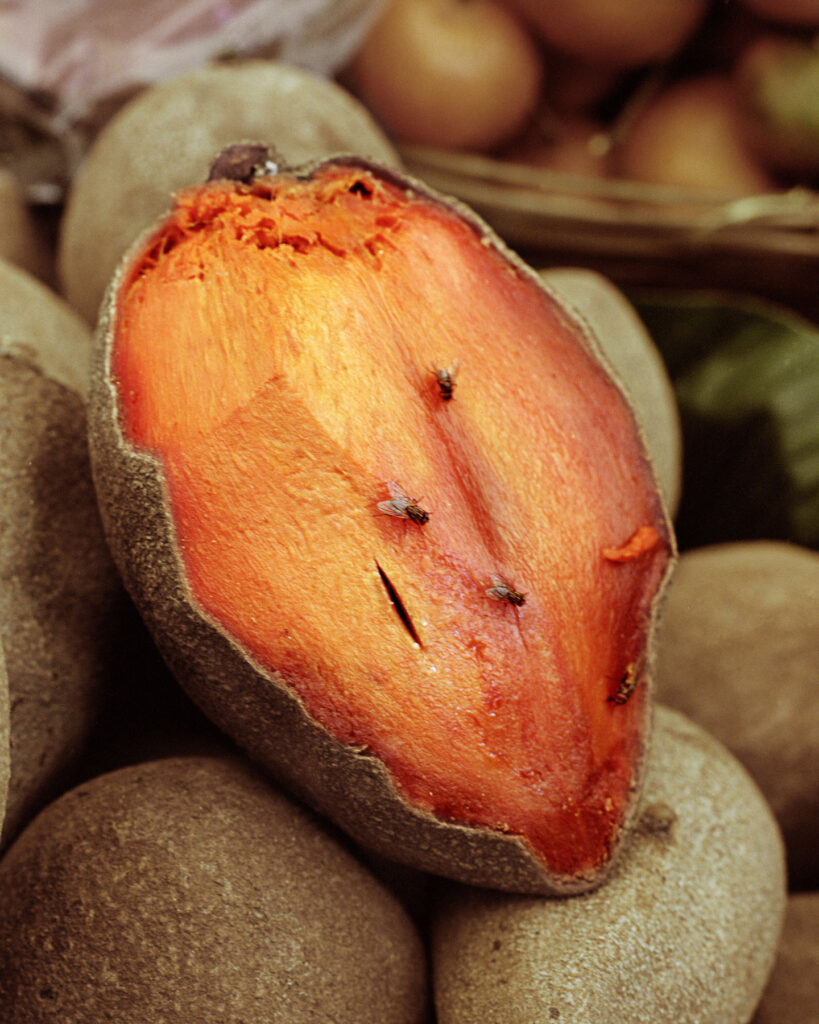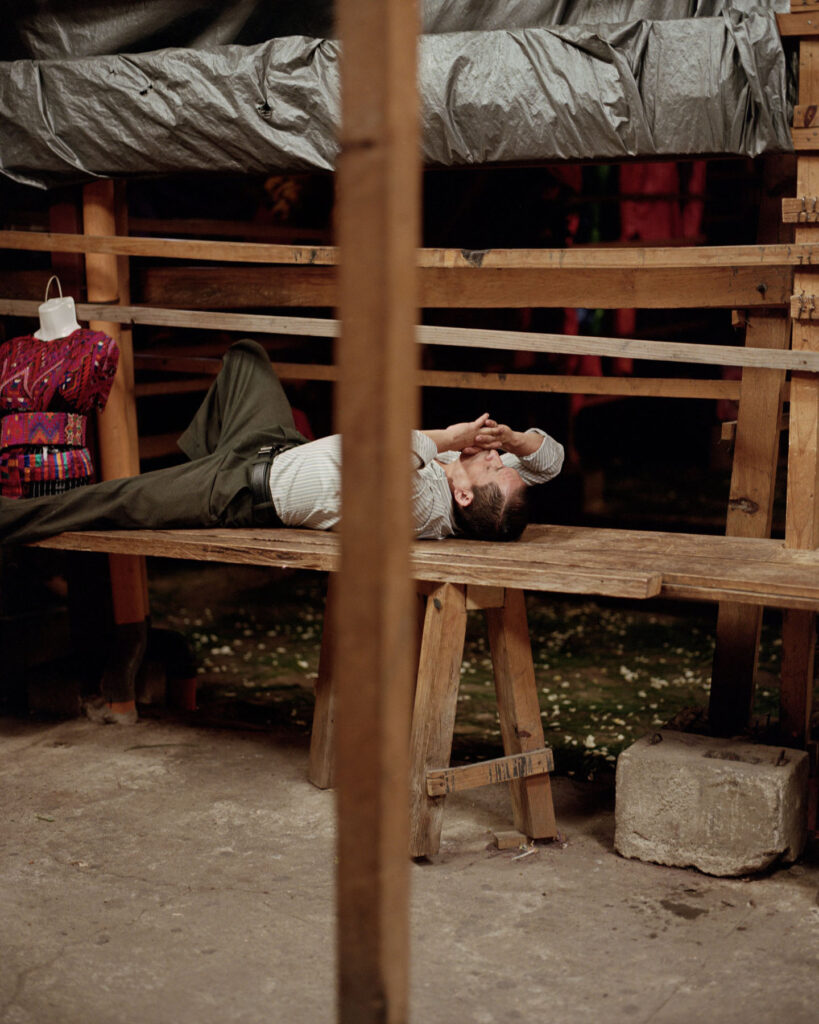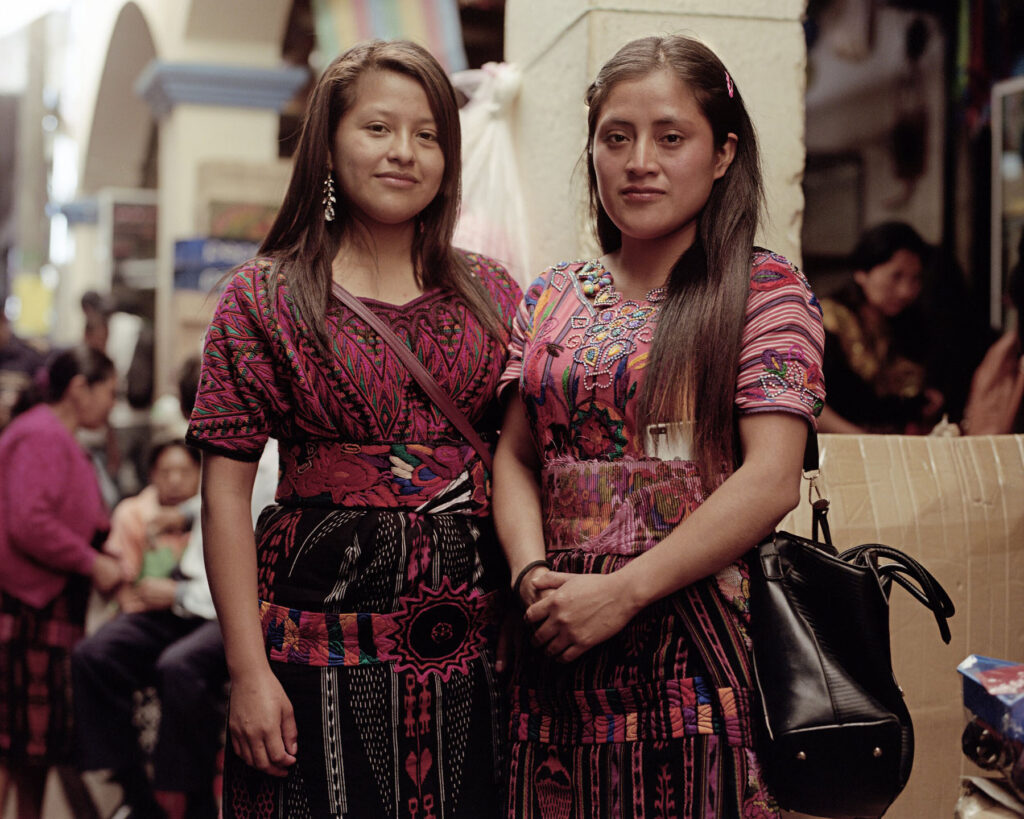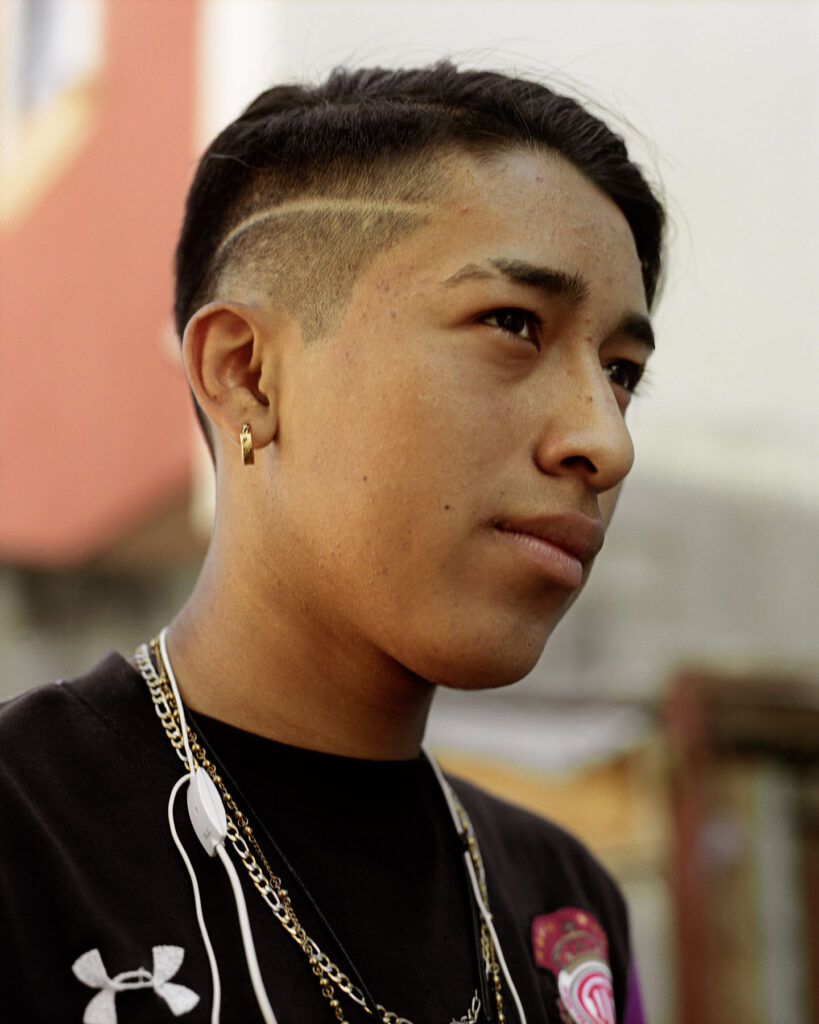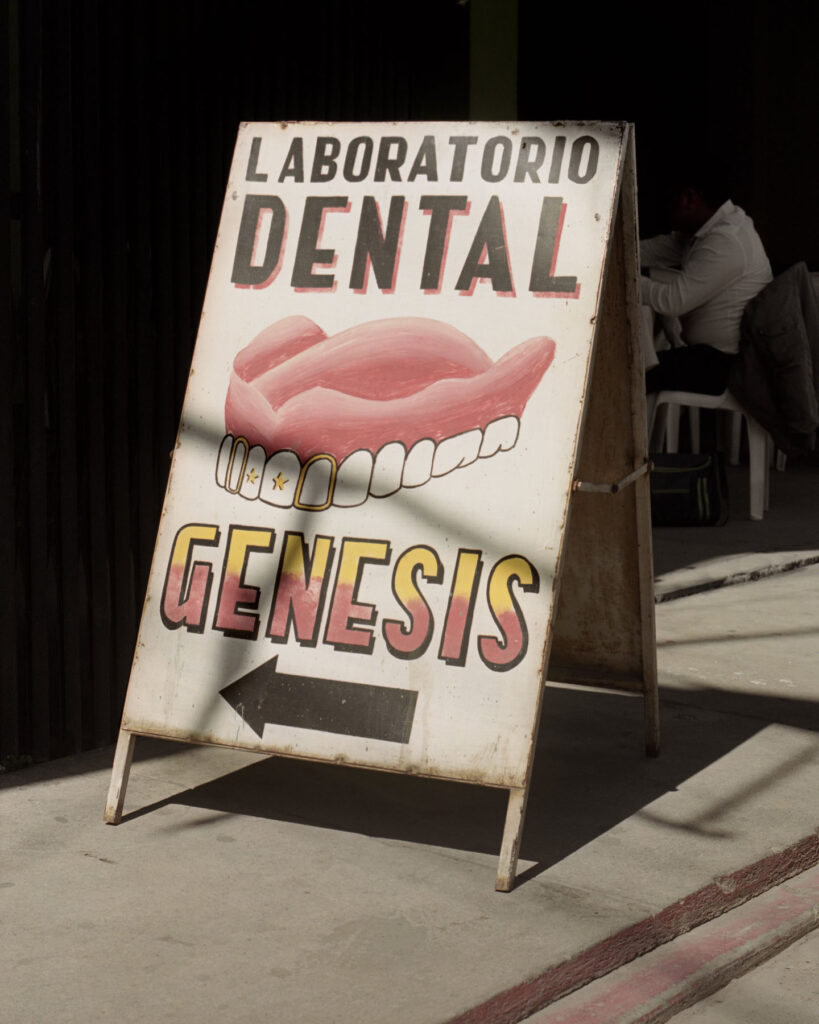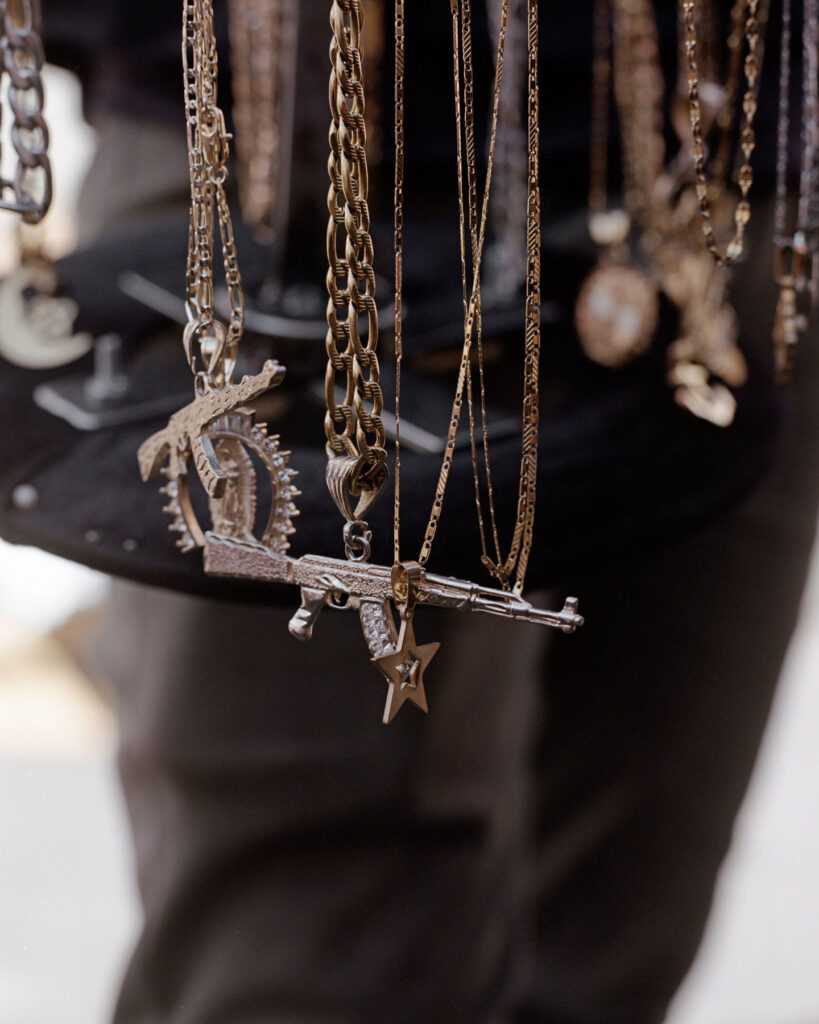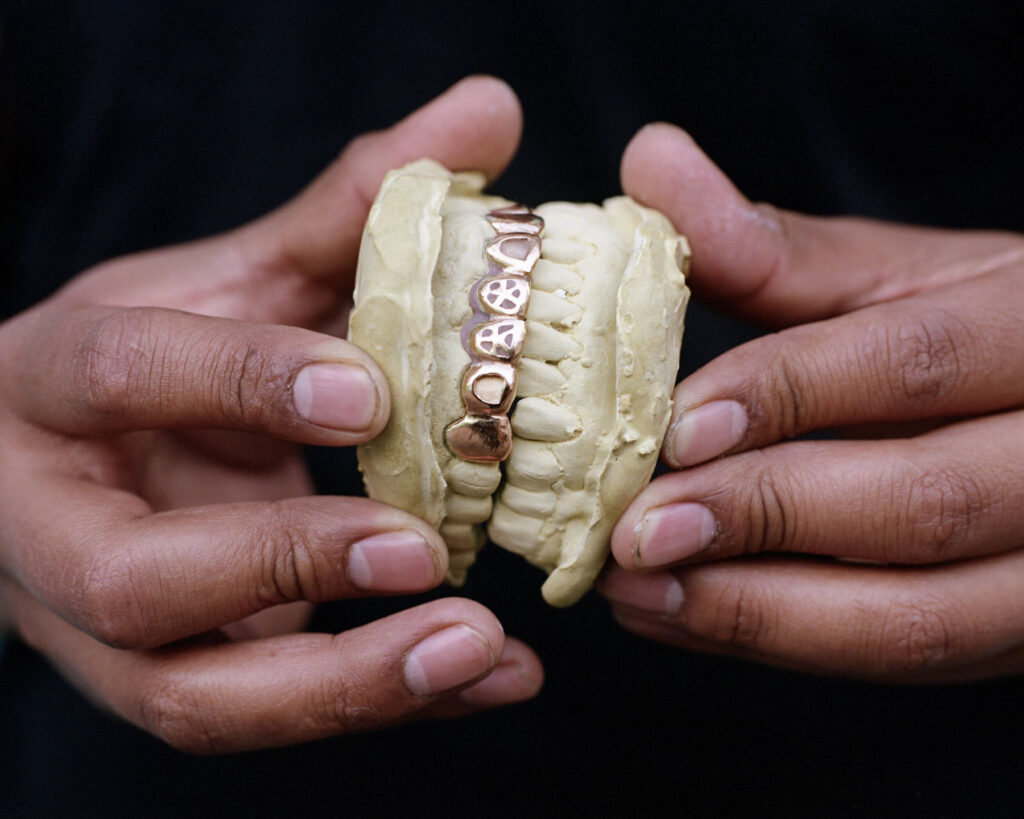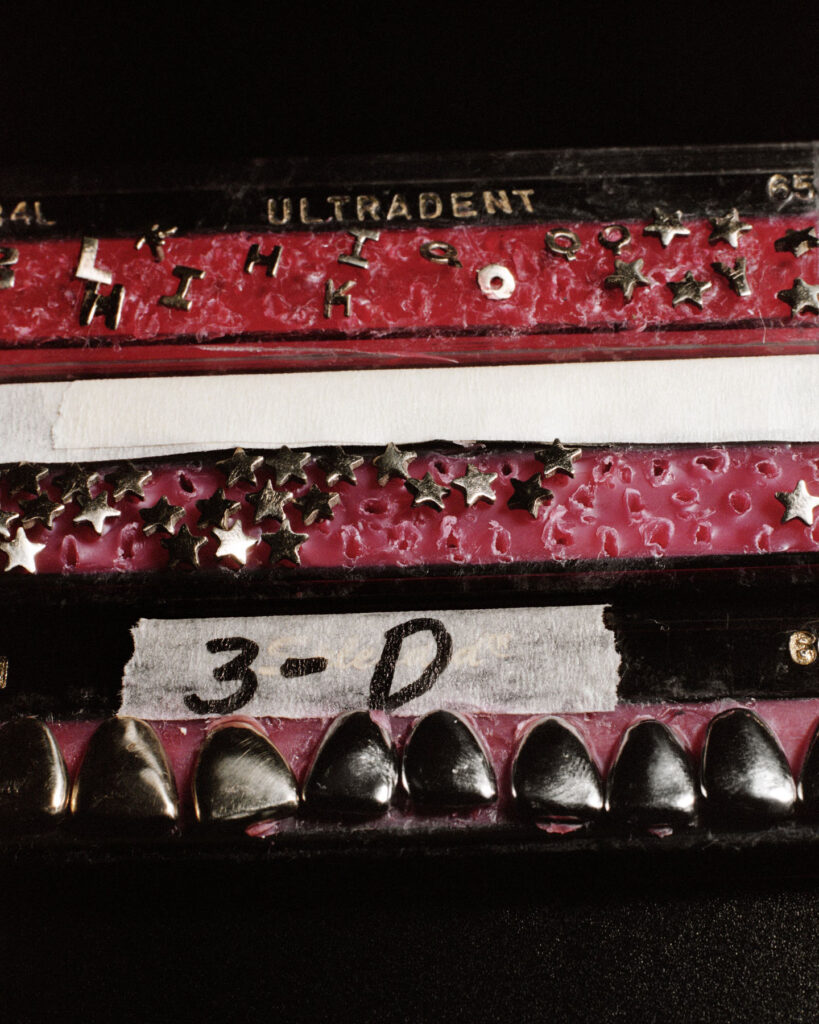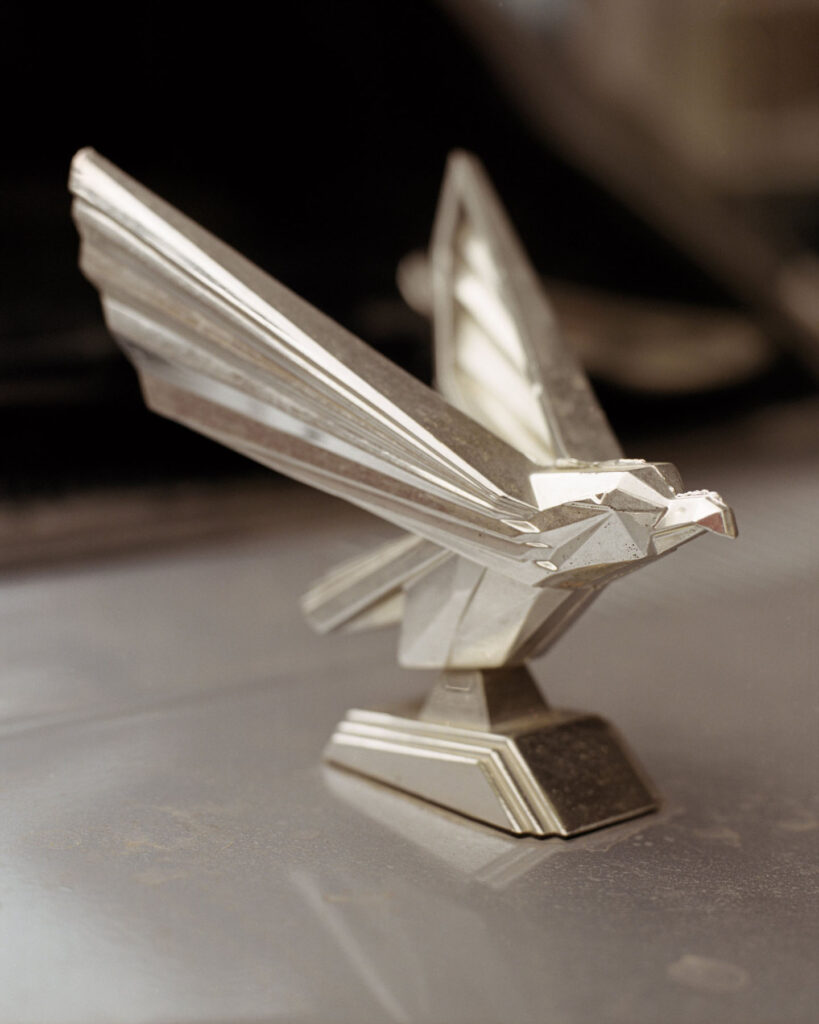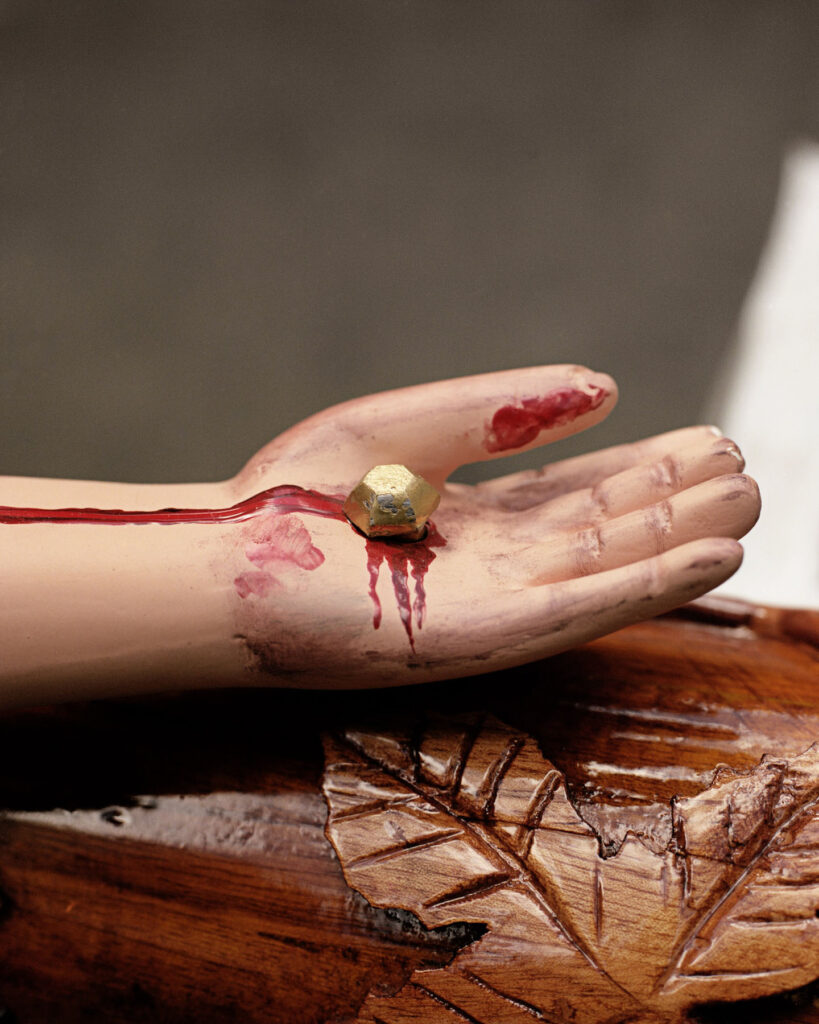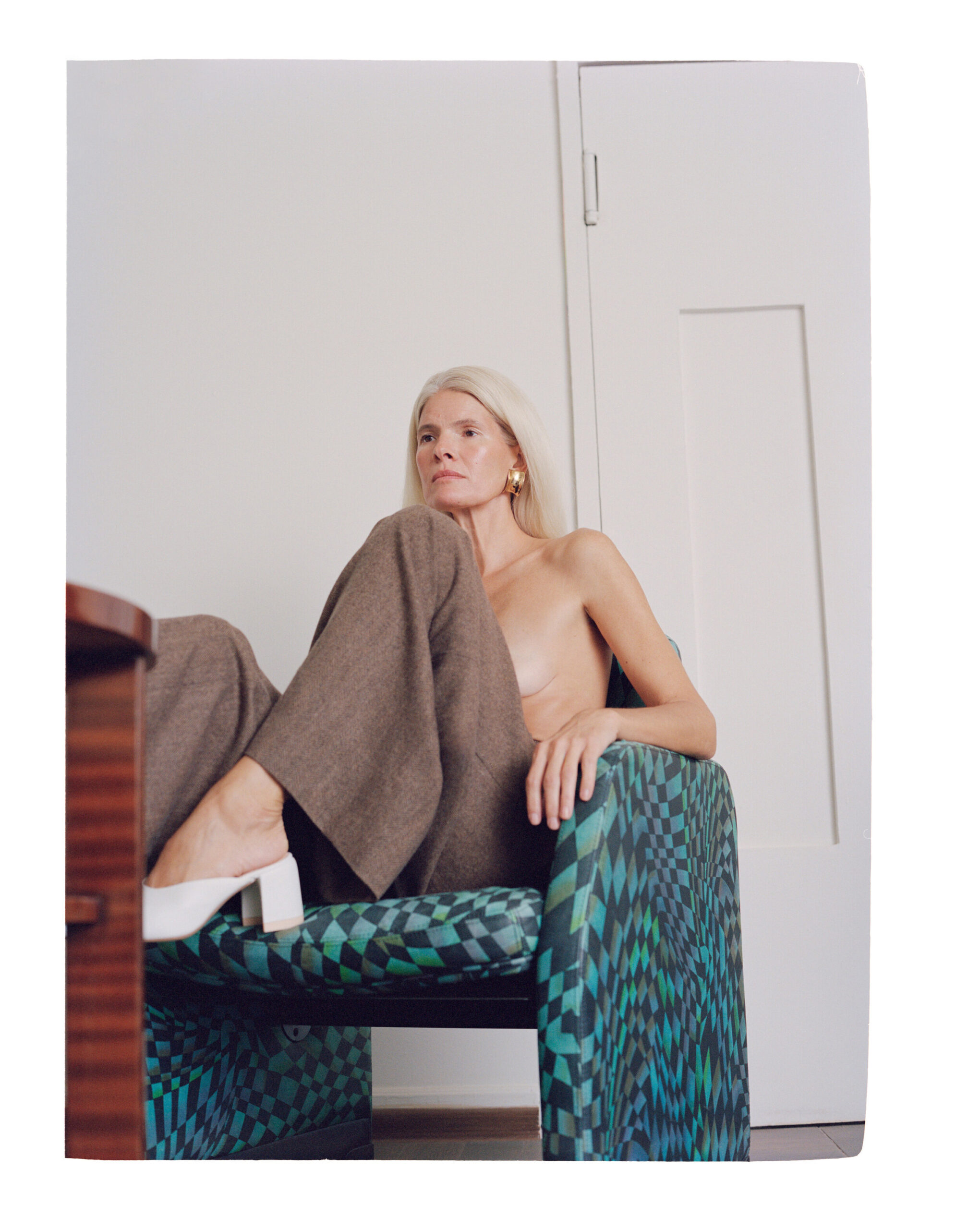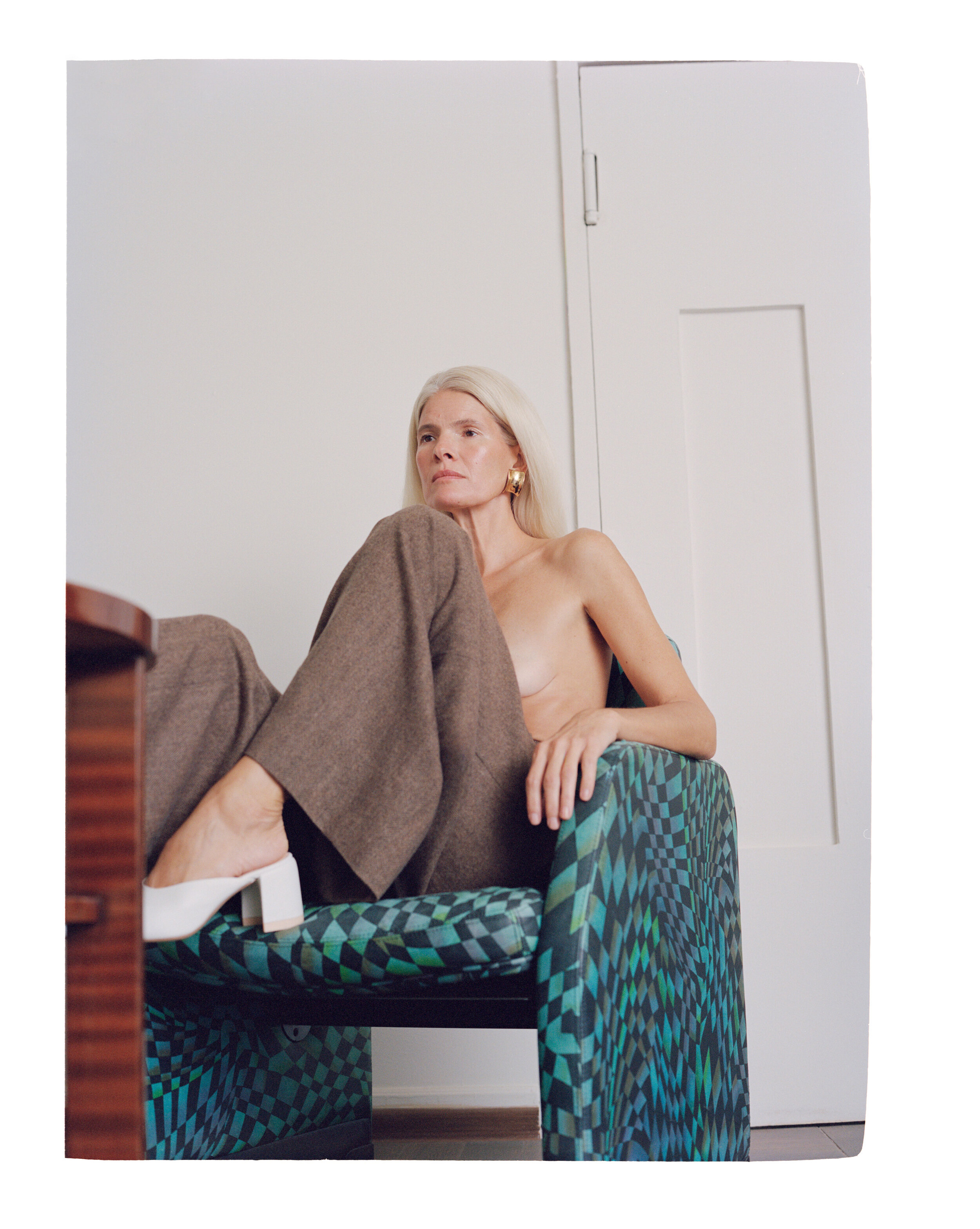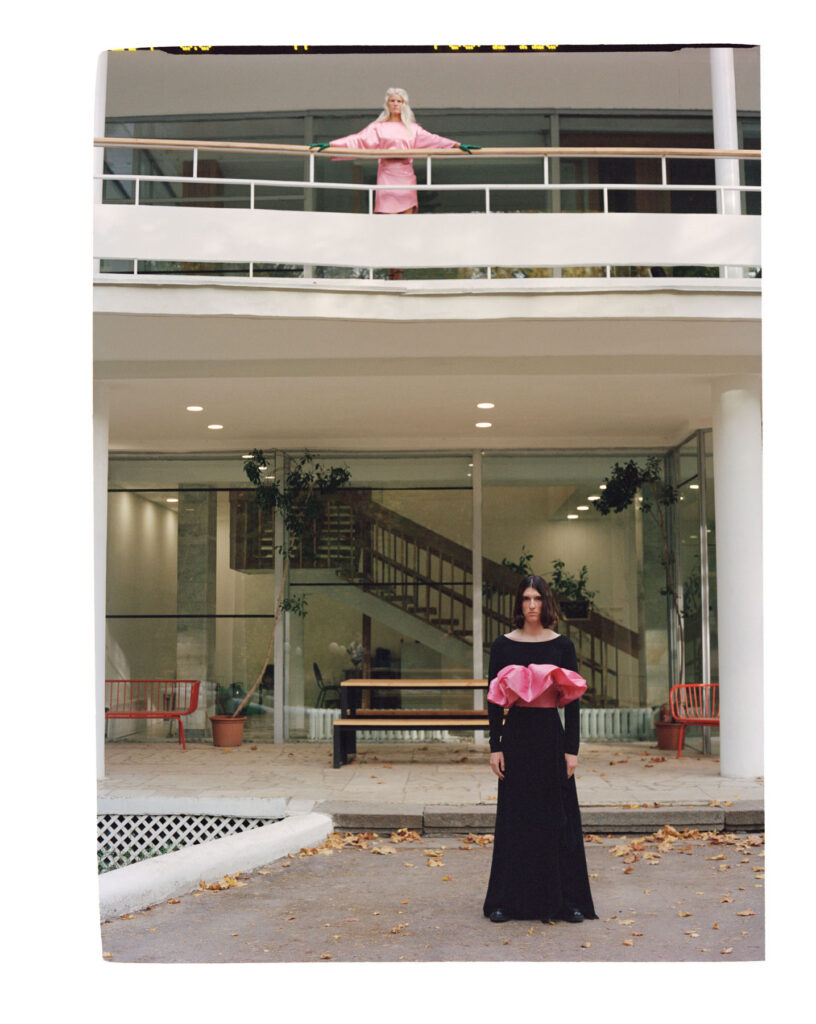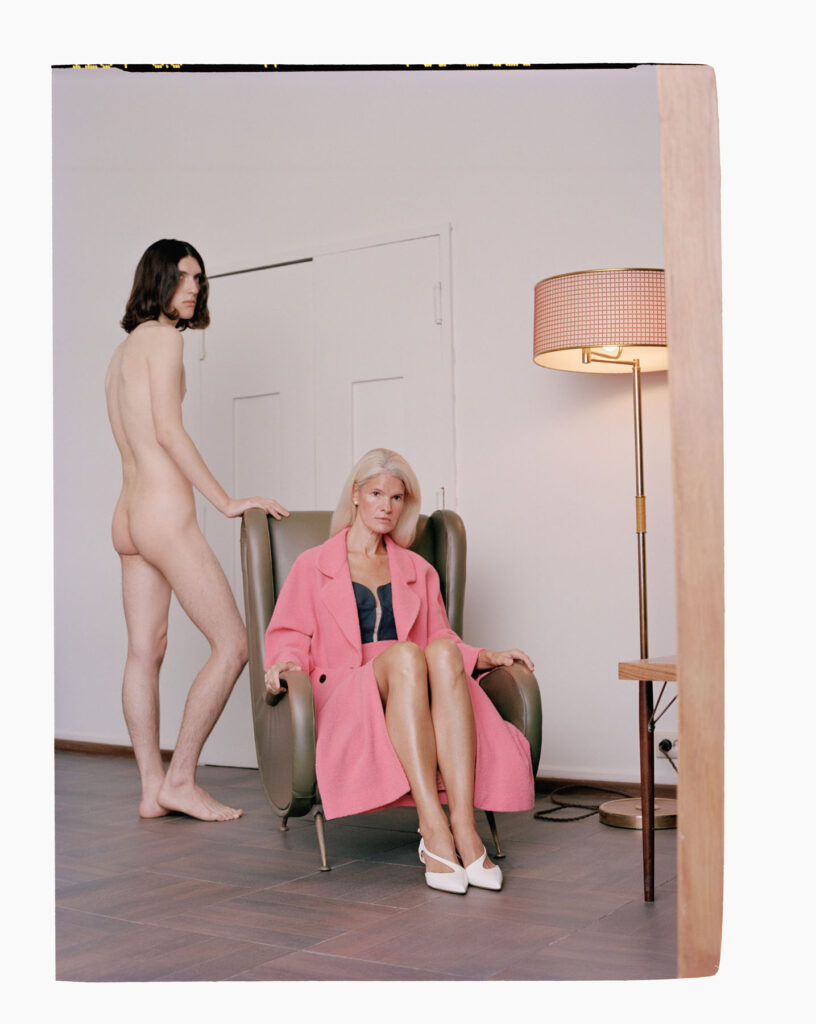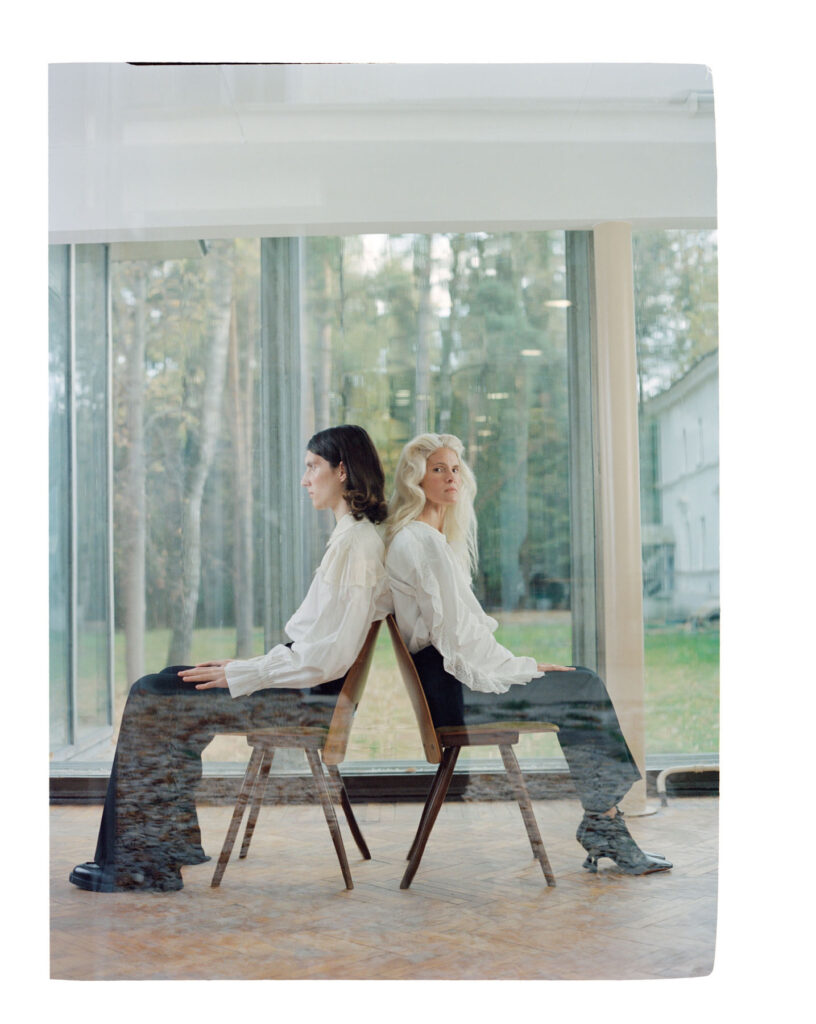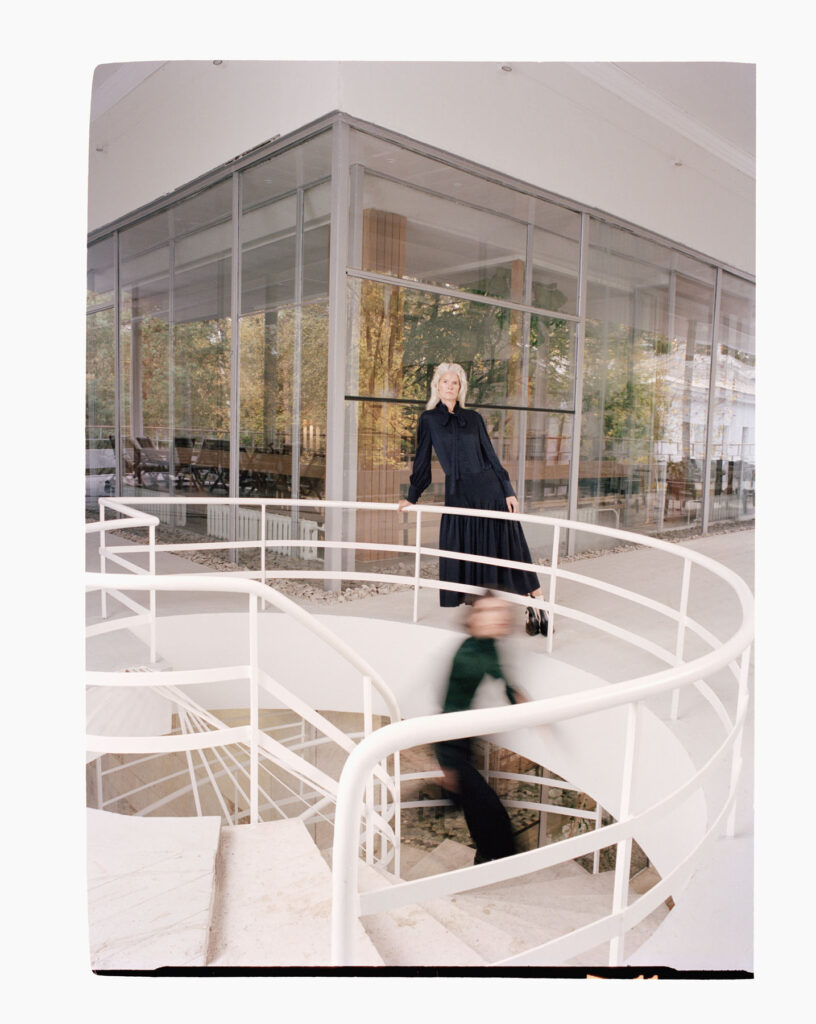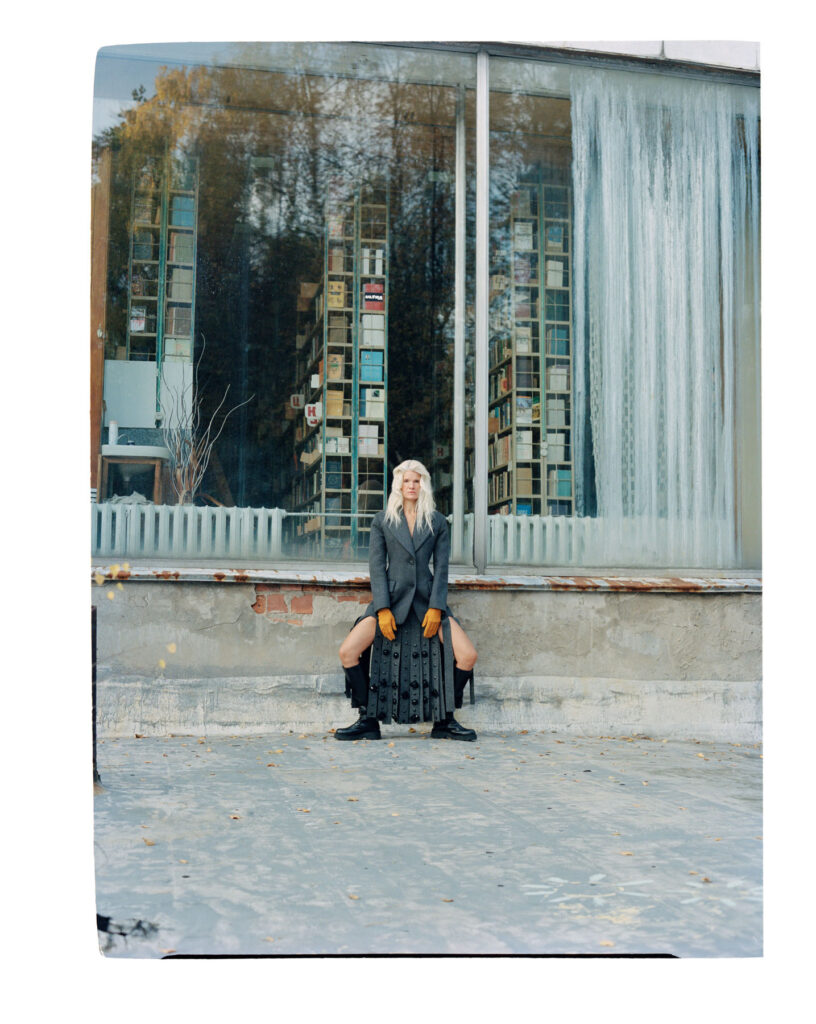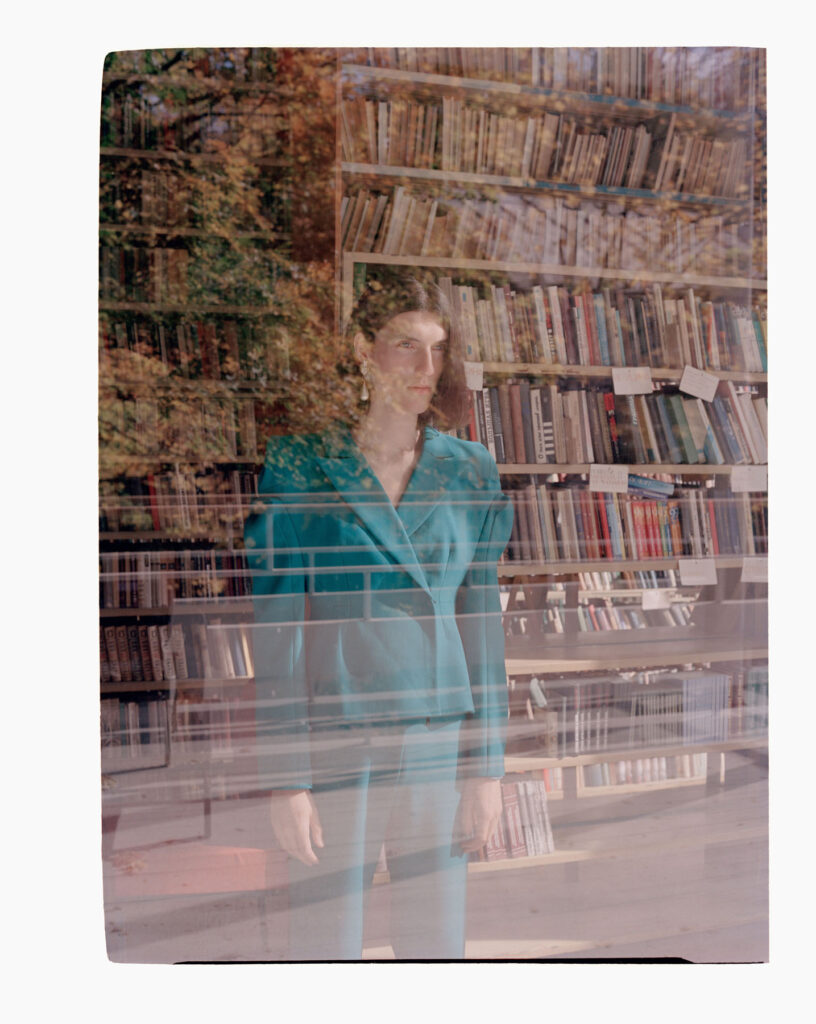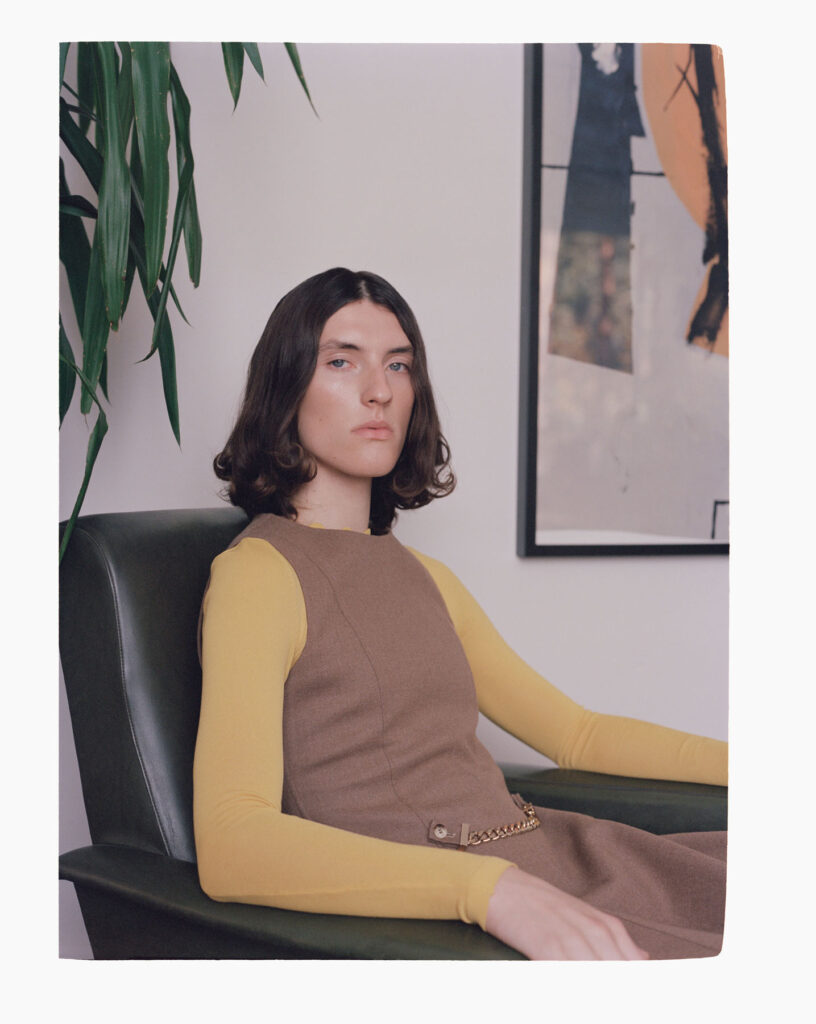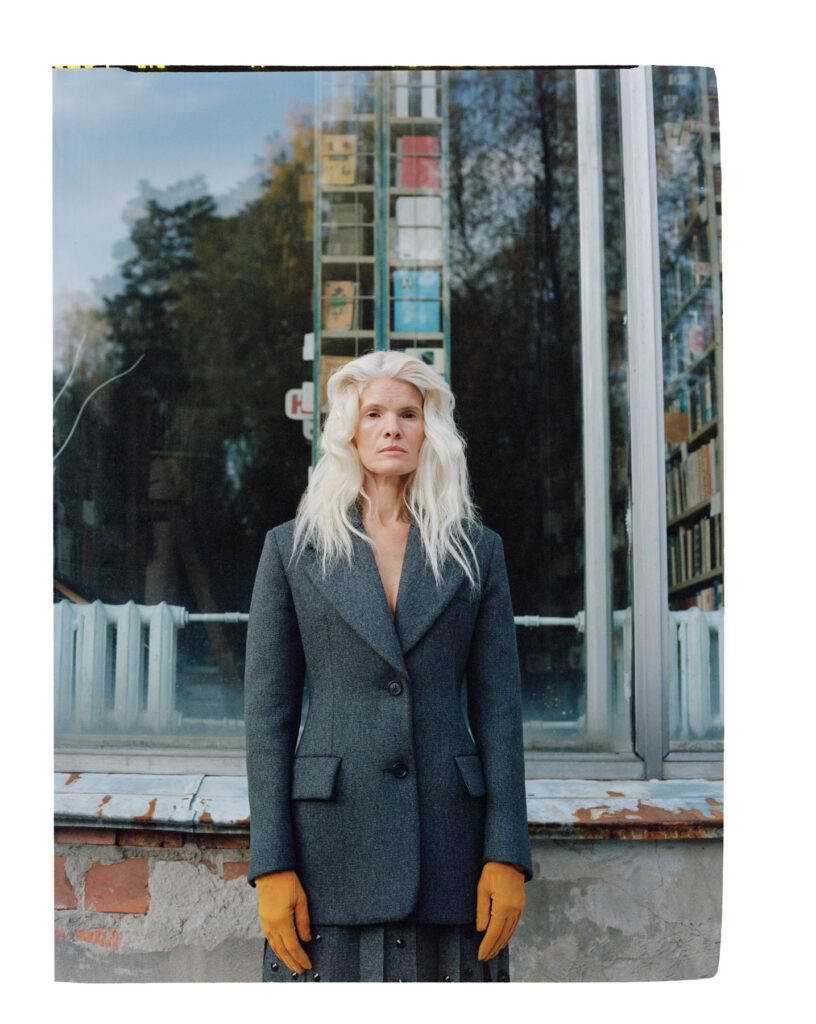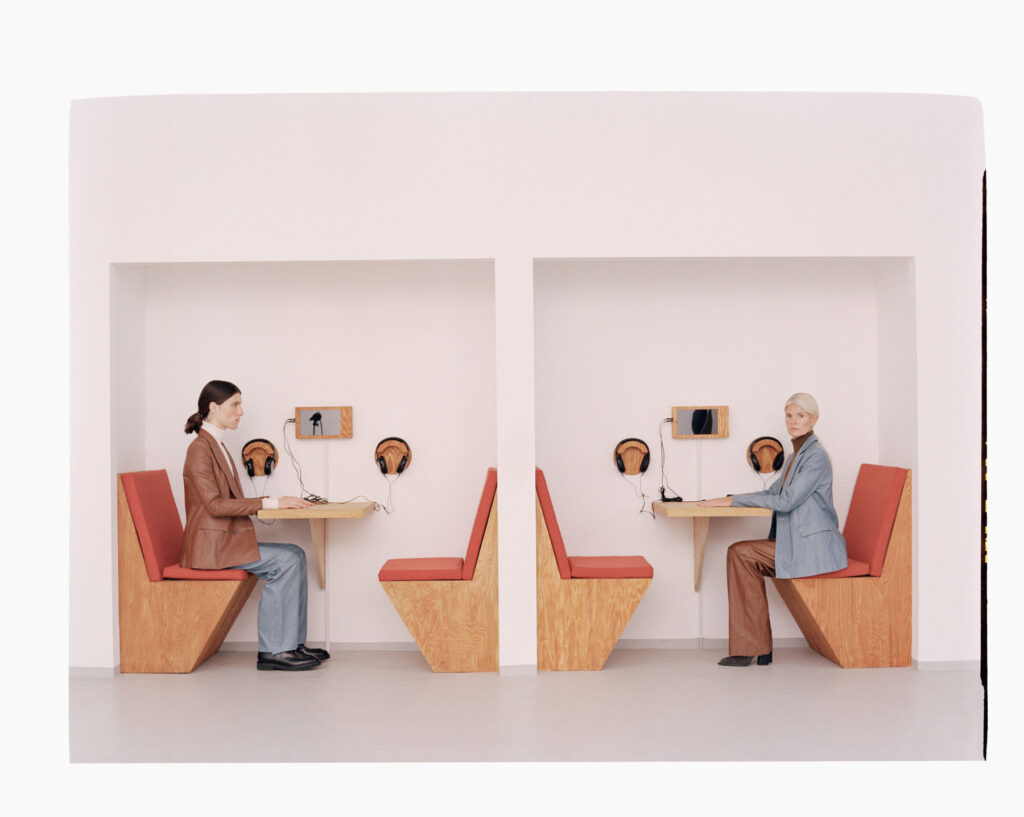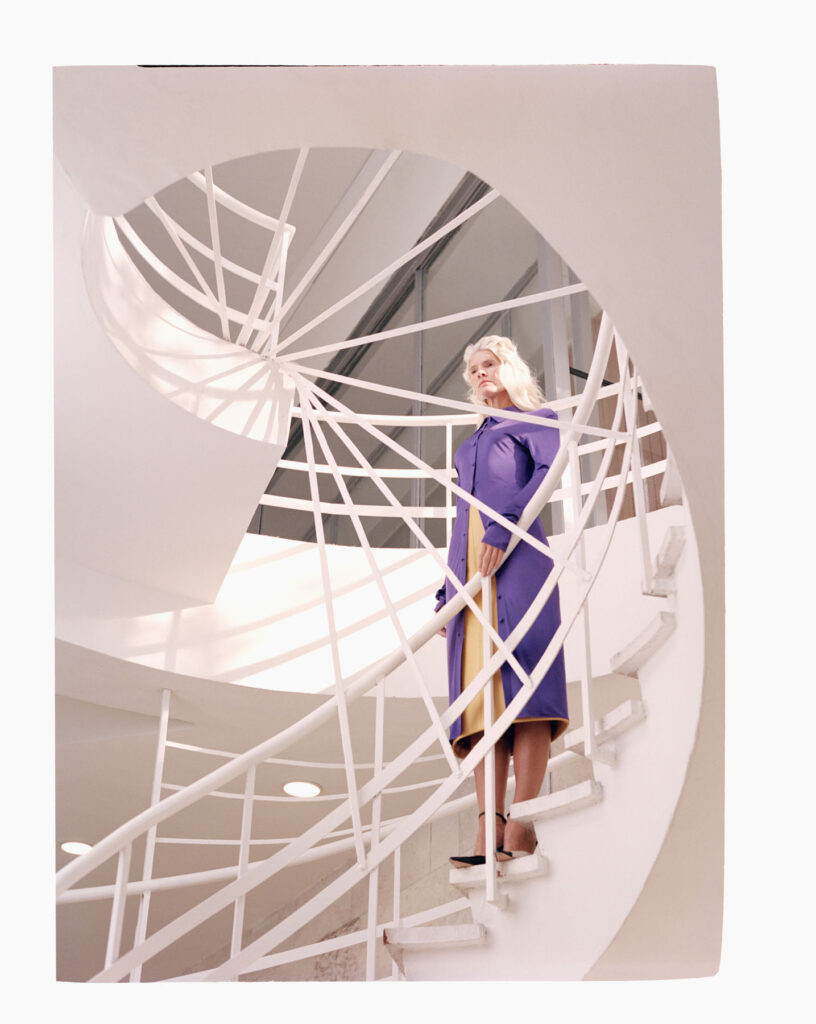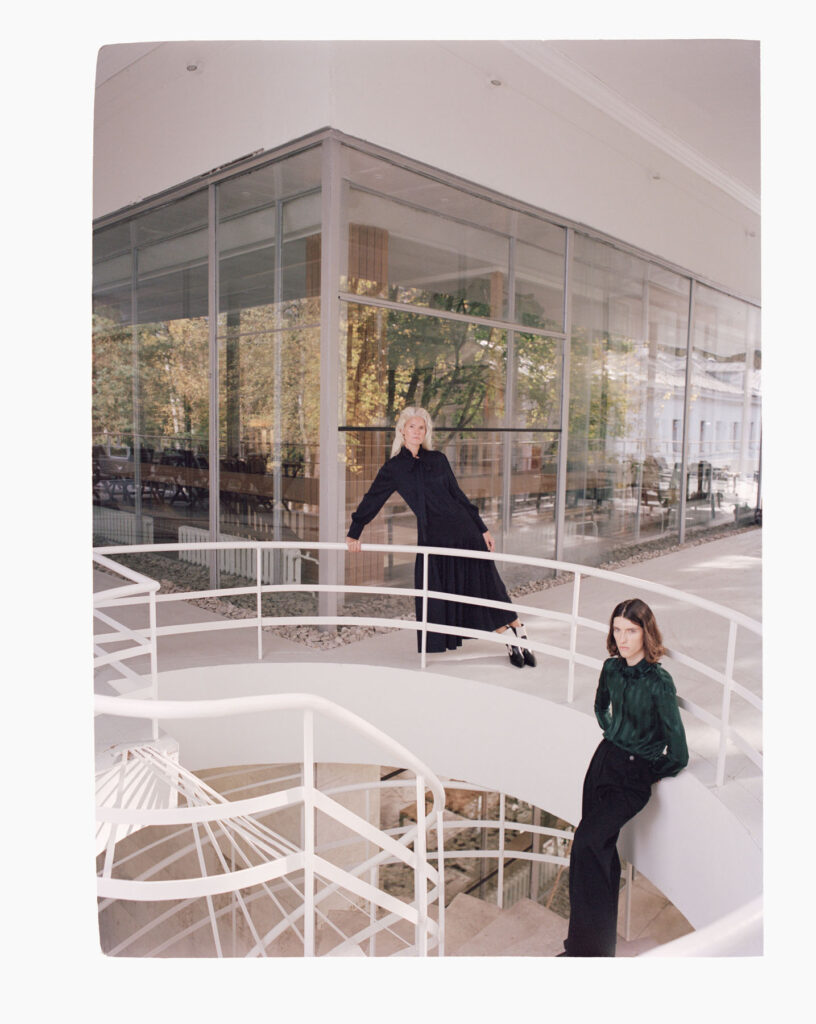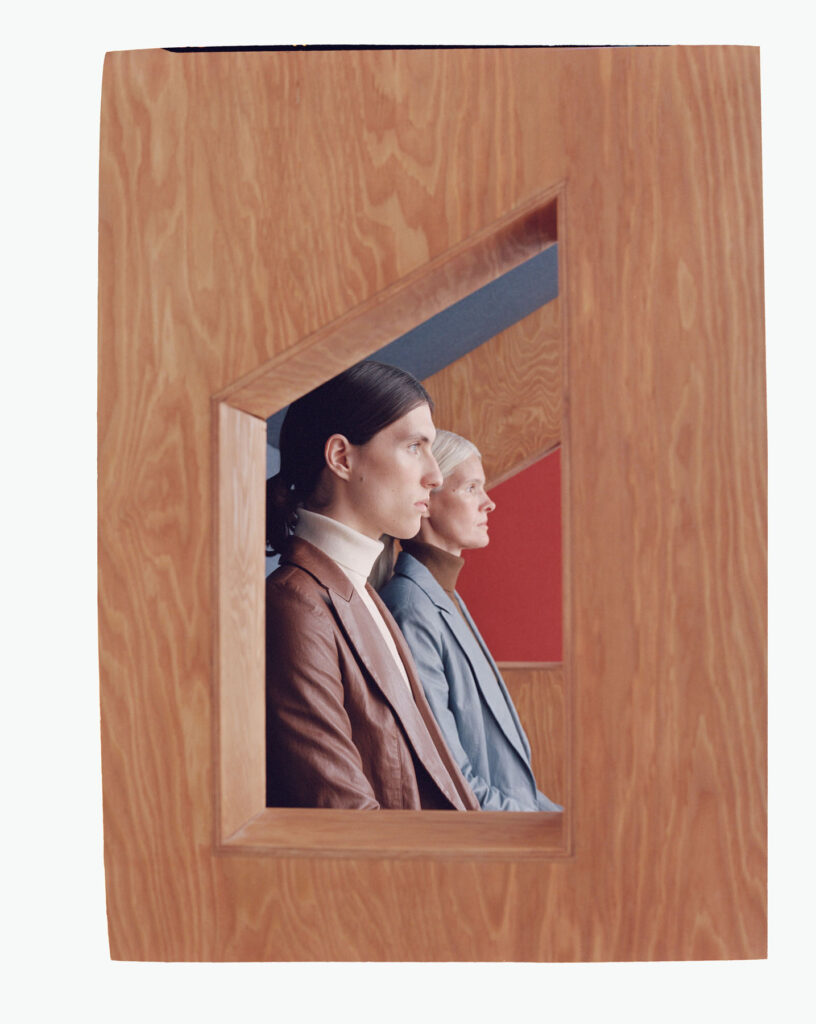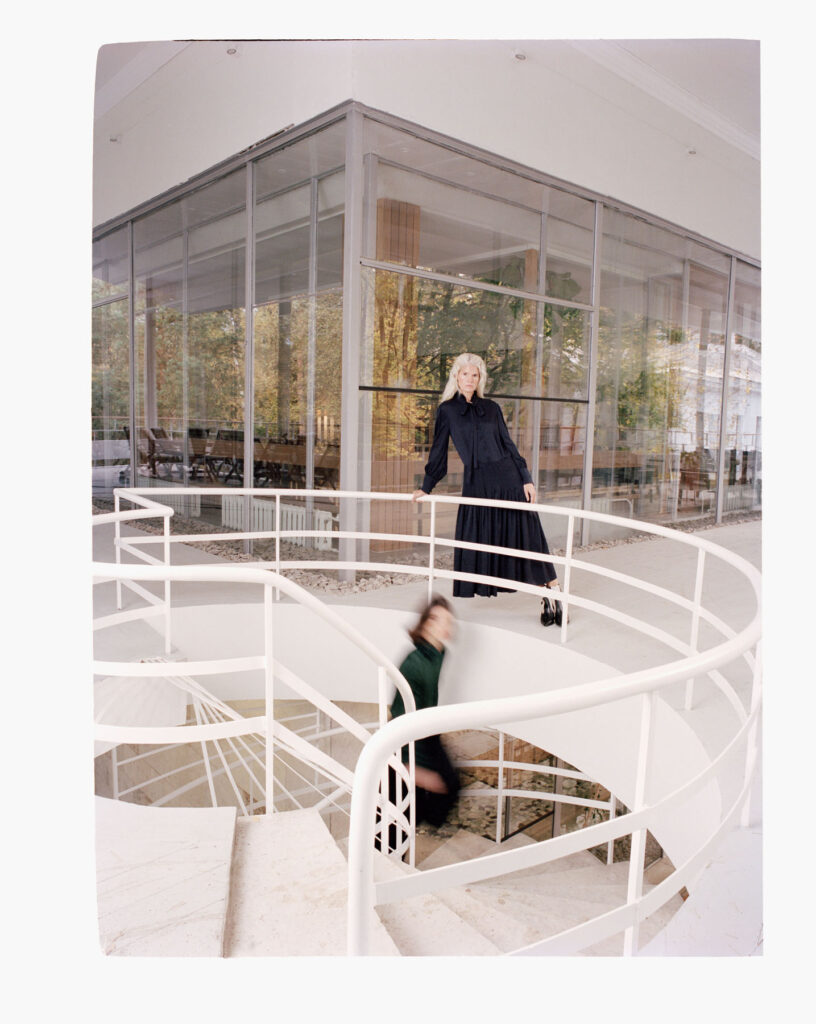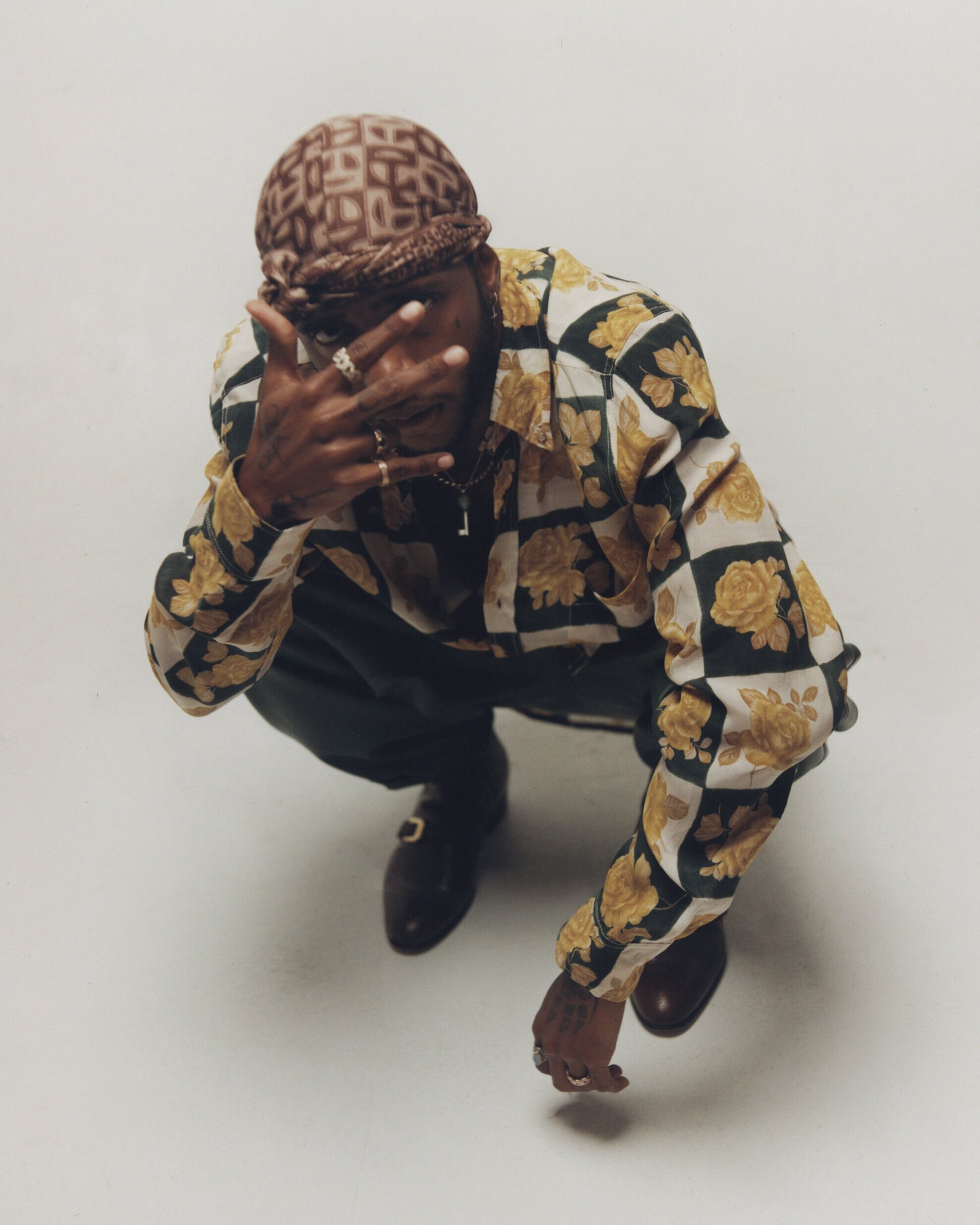
“I’ve made some of my best music and had some of my best moments from being resilient, pushing through, getting through the struggle”
Speaking with a cadence that lends itself to the kind of familiarity one feels at the turn of a season, Ricardo Valdez Valentine, better known as 6LACK, holds no reservations when it comes to speaking about change. As it moves him, with the wind when the feeling is right, he finds himself peering over his shoulder. Flitting between Los Angeles and Atlanta, 6LACK has become a resident of the in-between, a finely cast shadow that dances upon reflection itself. As presence and absence oscillate, a sense of introspection grows and calls forth the demons from 6LACK’s own mind so that one day he may address them as angels. Would you recognize insecurity if it told you its name was now faith? Having released his latest EP 6pc Hot in June of this year, the recording artist and recipient of 3 Grammy nominations who has collaborated with heavyweights like Future, Young Thug, Offset, Sir Elton John via The Gorillaz and Selena Gomez to name a few, has begun to adopt a different approach to his career and life itself. Utilizing his emotional candidacy and the art of conversation, 6LACK ruminates on his own transgressions, projections and desires in the pursuit of total clarity. He wears no halo but the latter has given him wings.
6LACK has always made music with the intention of resonance but instead of weaponizing his own vulnerability and using resilience to romanticize strife, we see him walk away from these sad boy fantasies laced with martyrdom and move towards a crossroads in which utopia begins to look like the life he already has. The foundations of this new outlook have been cemented by his role as a father and committed partner, bolstering his identity with a sense of purpose and directionality There now exists a healthy dynamism to his person and artistry as he continues to untether himself from the experiences and sounds that once defined him. Having gone on to create initiatives like 6lackbox, a platform that provides an array of tangible and affective resources for his community, 6LACK is letting go but remains held. All roads lead home.
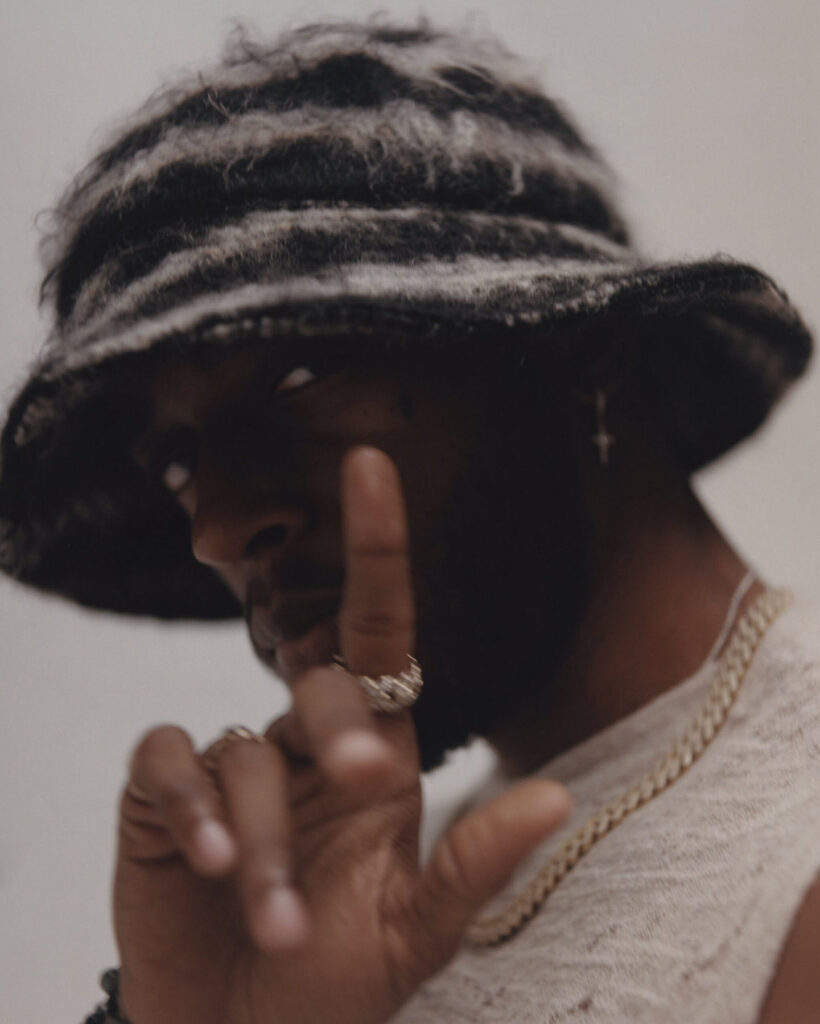
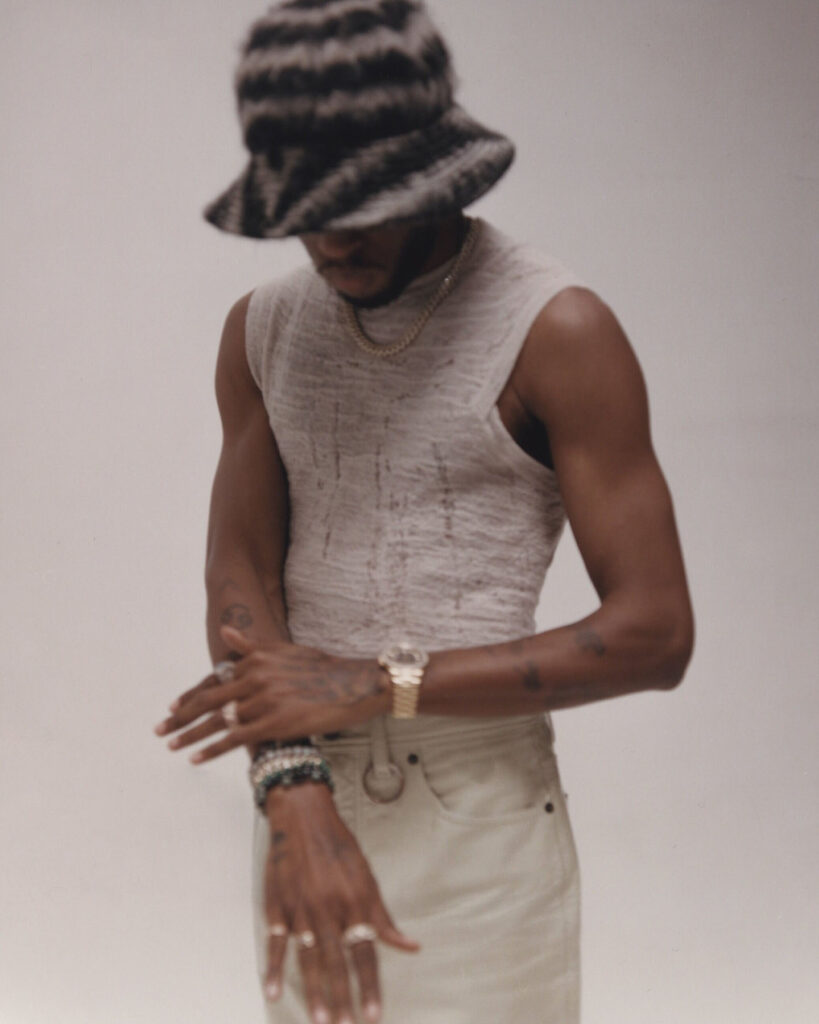
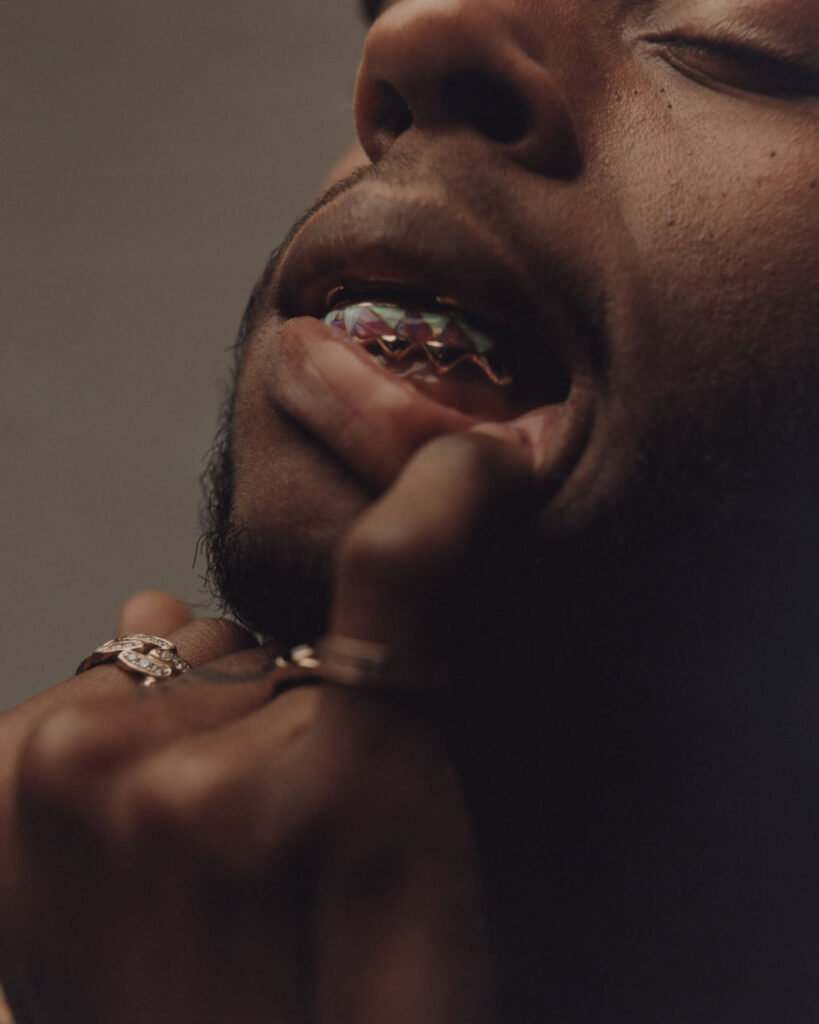
The Irish playwright, George Bernard Shaw, famously once said, “the single biggest problem with communication is the illusion that it has taken place.” You had mentioned previously that it was easier for you to communicate via music than in real life. Taking that into account and coupling it with quarantine and the collective growth that occurred through time for introspection, voluntary or not, what kinds of conversations were you having with yourself and what are you telling yourself as you emerge?
I think that in the beginning of quarantine, I was going through something similar to what everybody else was going through where we started off relatively strong and as time dragged on, we got a little bit dry. I reached a point where I was trying to figure out what I needed to do for myself before I even began to make music, just to be able to express myself, communicate, grow, learn, I felt super stagnant for a second. I realized I had to get back to myself, get back to being curious, get back into reading, get back into doing other things that sparked my creativity because I didn’t realize that I had stopped. I had put everything into music for so long and the setting and meeting of every goal only had me looking at the next one. It became a matter of okay, what do I do now? What do I do now? This way of operating ended up becoming a block of other parts of my life and that was one thing that I identified and began to do something about. I recently started therapy too, so that’s been cool to talk to an outside person who can give me advice or tell me what I’m thinking is cool, or not cool, or is me, or not me. So therapy, self-reflection and creating new routines has helped me to feel a lot better now versus how I felt at the beginning of quarantine.
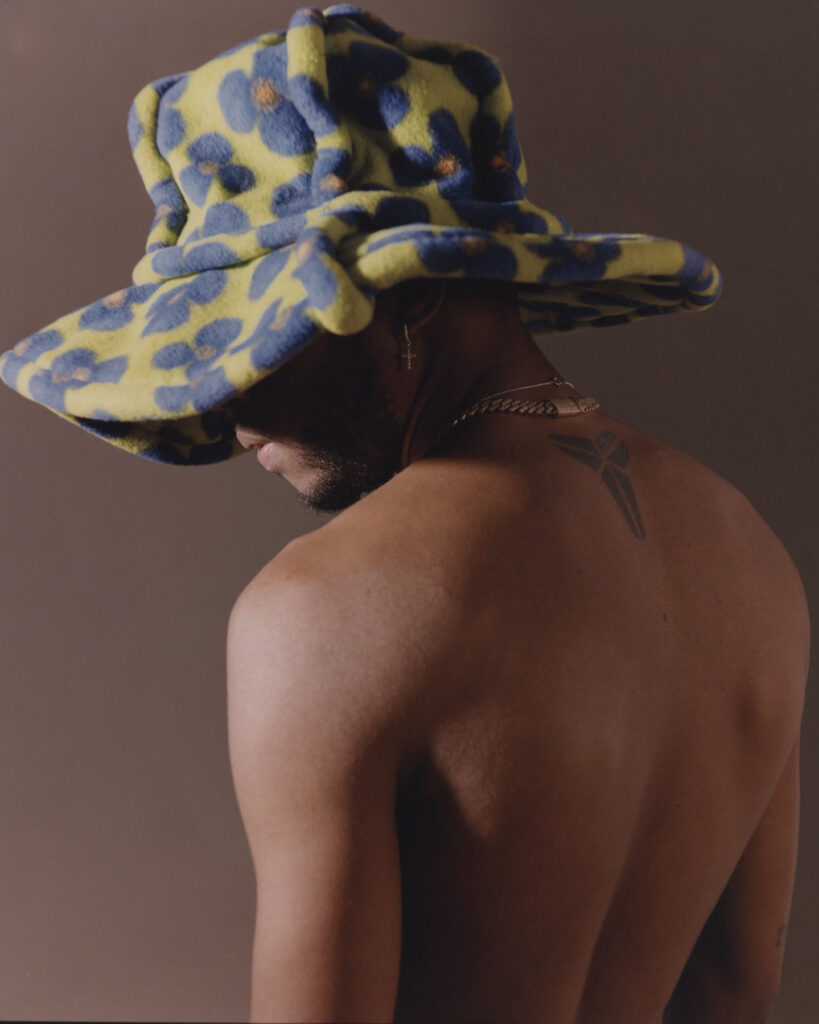
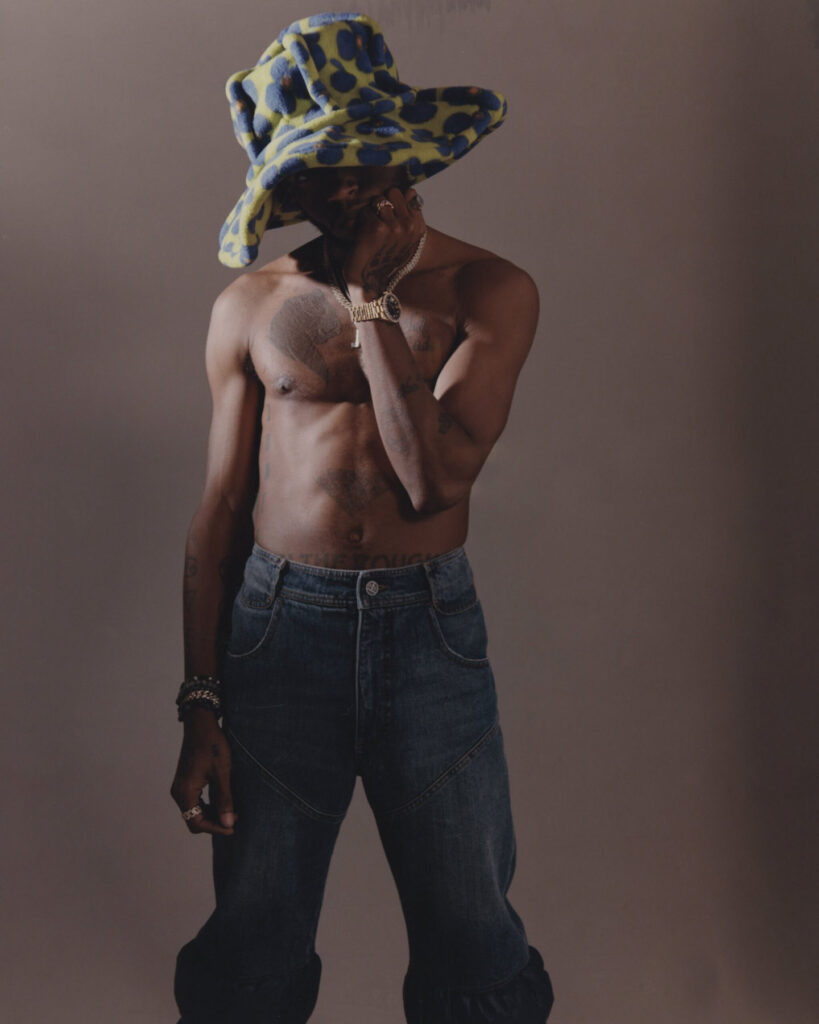
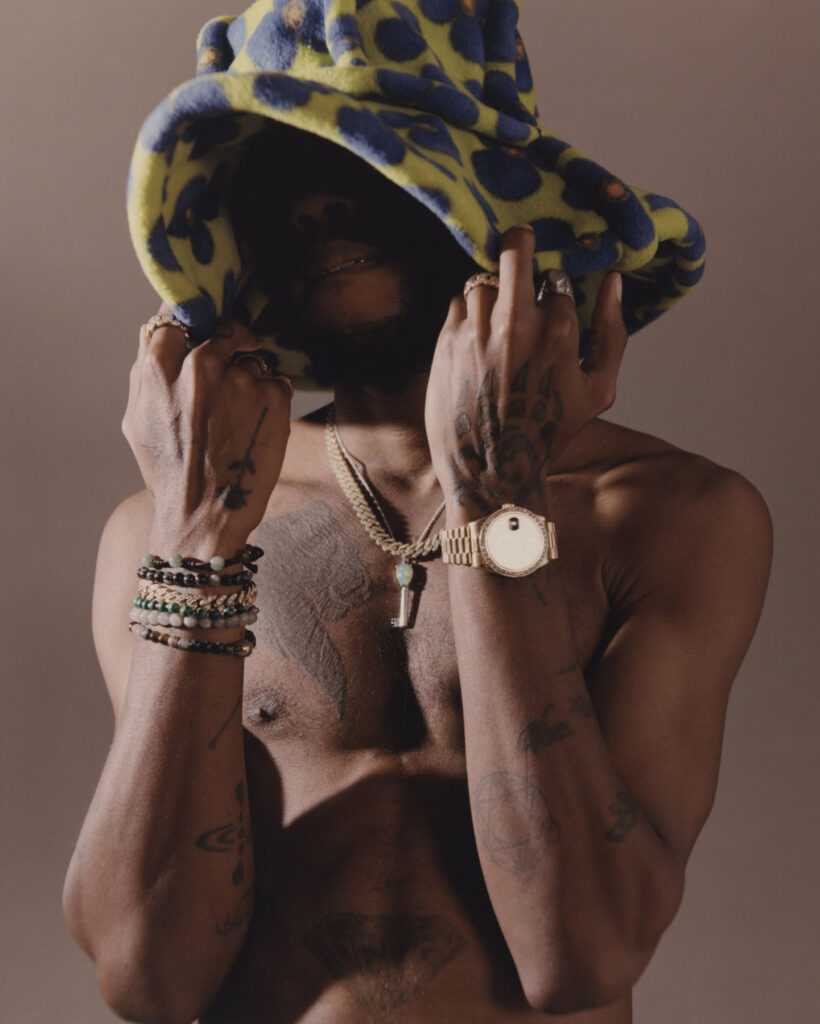
Totally and with therapy in general, there’s a lot of trust involved. Do and would you say that you’re someone who trusts people easily or are you known to put your walls up?
I’m not too bad on trust, I give people a lot of chances and benefit of the doubt so I’ve never really struggled with that part of it. I guess really it’s more so just trusting myself in a lot of different situations.
Right and in terms of trusting yourself, how much of that is synonymous with being honest? There are ugly truths inherently wrapped up in self-reflection and we often don’t want to see ourselves as we are.
Yeah I think it’s a tough thing, I feel like most people will kind of look at that and think it’s automatic, or an easy, or natural type of thing but I’ve learned over the last few years that honesty, even with myself, is embarrassing. Sometimes it feels shameful, sometimes it’s humiliating, it’s not always my favorite stuff to talk about but being able to resolve situations that have transpired from those things has been one of the toughest things I’ve ever had to do in my life. And it’s not because I don’t like to be honest or anything like that but when you go through a lot of things that aren’t necessarily favorable, why would you want to shout that out? Why would you want to tell somebody? Why would you want to trust somebody else with that information? So I’ve learned to speak on it more and every time I do a new album or get into a cycle of making music, I have to stop, I have to reevaluate everything, I have to see how I feel about where I am and where I want to be. I have to get to a point of being honest with myself before I start writing because otherwise, I would just be writing from the viewpoint of the last album.
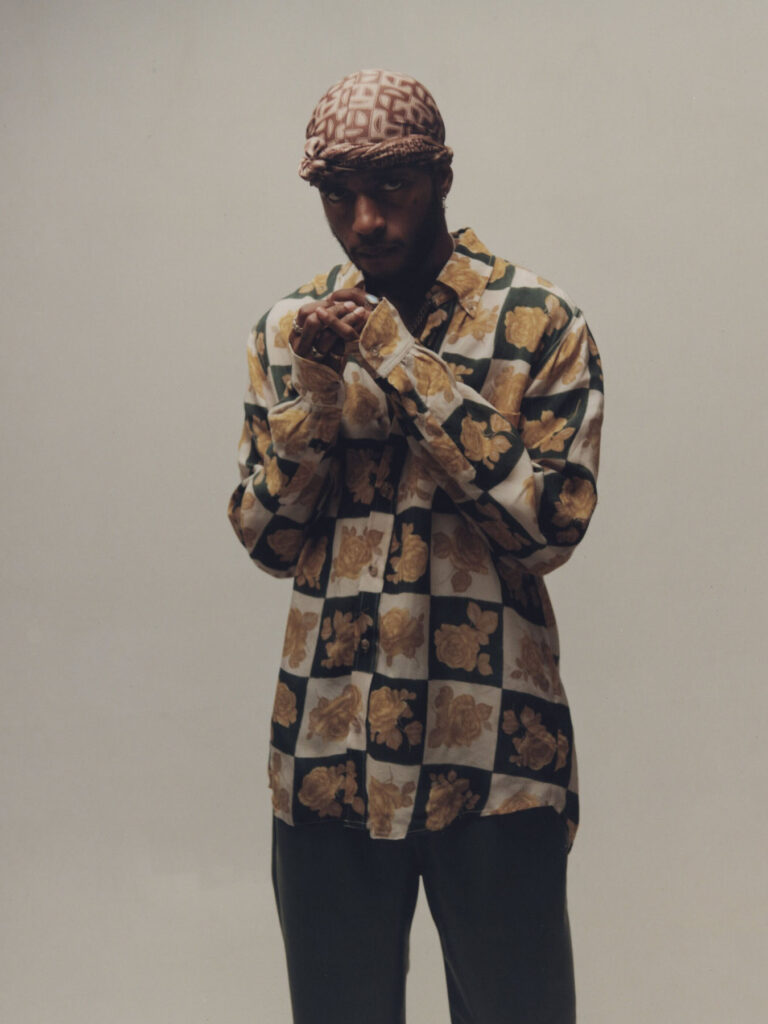
Right exactly, there’s a certain voluntary vulnerability that is hard to give access to even with yourself, it becomes a question of how do you get there? We all arrive “there” differently, can you give us more of a window into your thought process? Put us in the room with you as you’re starting to write and come upon a closed door per se.
Definitely, recently this year I spent a lot of time in a studio just sitting there. I wasn’t being hard on myself but I didn’t want to walk if I was going to walk the same way I walked last year. I would go there thinking I was going to work, I’d fire up a beat or flip through like 20 beats and eight hours would go by, ten hours would go by and then it’d be time to go. I’d be sitting there the entire time because I was sorting through my thoughts, trying to figure out what specifically is going on and what I needed to get myself going. I really just needed to be brave enough to sit down and have all the conversations that I needed to have with the people in my life because naturally, when you hear things that you don’t like especially pertaining to your person, you want to deny or fight or reply in a way that isn’t always reflective of who you truly are. I had to remember that those feelings aren’t natural and it’s more so about getting it out there and allowing other people to make the decision of what to do for themselves, giving them a choice versus choosing for them.
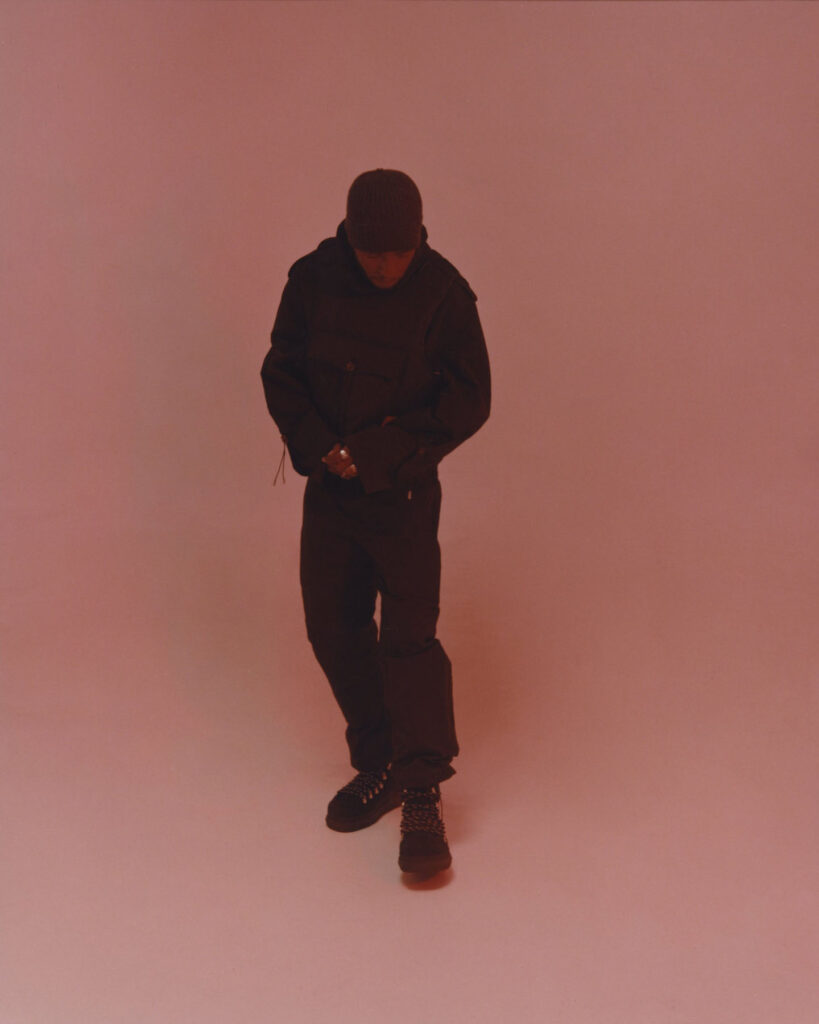
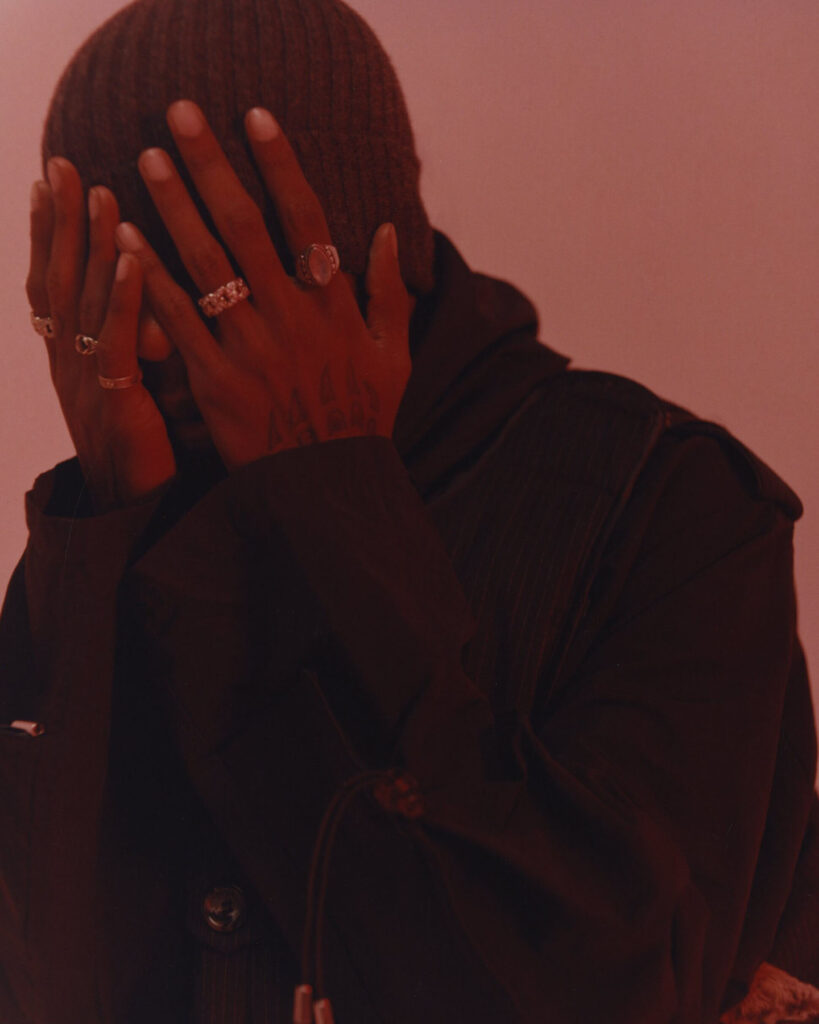
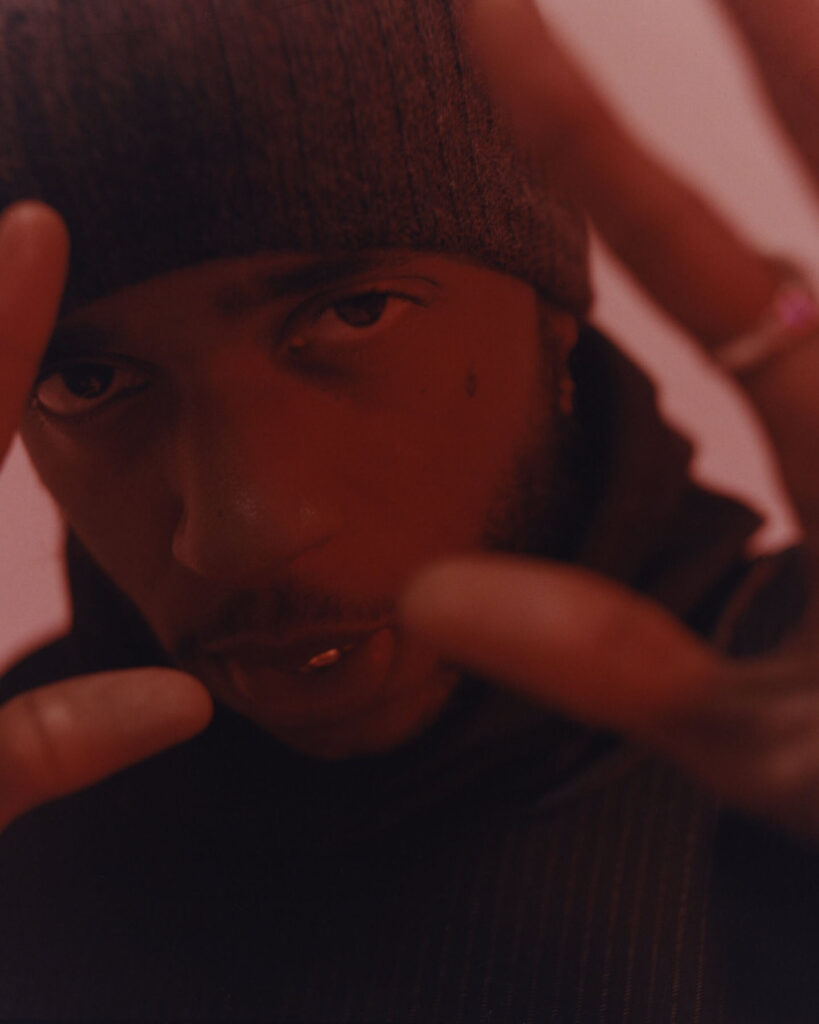
I can imagine you being in the studio, sitting there and feeling maybe a bit unfulfilled and obviously there’s this idea of success and respective markers of it like putting out a new album, garnering press, outside validation etc. But I’m wondering for you, as someone who is more so an artist than an entrepreneur or performer, how do you differentiate between fulfillment and success?
I’m honestly just trying to keep a gauge on just how grateful I am. This year, I had to check myself and look at what I was doing and realize if you want to feel fulfilled, if you want to feel clear, if you want to feel creative, if you want to feel all the things that you want to feel, you have to remember to do things in your everyday routine that echo and practice that. Otherwise you’re going to find yourself in a daze or at a point where you’re not in the driver’s seat, miles from where you want to be. I had to get back into practicing, whether it was waking up and eating something right for myself, writing something down in a journal, reading something out of a book, or watching a documentary, I had to refocus myself to get back to that. I got so far away from those things because mentally, with music and my career, it’ll engulf you. It’ll make you feel like this is all you have and those thoughts start to take up space in your mind alongside your personal life and in order to stay clear and fulfilled, I had to remember to be super thankful. Gratefulness created balance for me. No matter what your intent is, every single day, you keep running into problems because you are explaining your intention instead of making them clear through action.
Preach, good intentions are too often used as the scapegoat for shortcomings! What are those things that you want to be more intentional with?
Primarily the relationship that I’m in and making sure that I’m giving the equal amount, if not more than, what someone is giving me especially if they’re a source of positive reinforcement in my life and are there to teach me things where I need to learn. I was in a space where I’ve always been the mentor to everyone else, so transitioning to have somebody else to do that for me was out of the ordinary and a bit difficult. It’s hard to let go of the reins because I was just so used to doing things by myself, sorting through my thoughts by myself, dealing with my emotions by myself — so when somebody else is there and they’re like, “you don’t have to pull the weight by yourself,” you just have to be willing to let go.
Wow yes, and so often we think that love never asks us to change who we are but why can’t change be synonymous with adaptation for the better? Why does sacrifice have to hold a negative connotation? Love is a difficult thing, it forces you to face things about yourself that you might not necessarily want to see or be willing to see. To what capacity has she held up the mirror per se and made you see?
I would say that the biggest thing is letting go of that feeling that I had to do so much on my own. You kind of go through life in the neighborhood, in the classroom, and studio, all these different rooms that I’ve been able to live in, change and adapt to and teach people and when I got to a point where I met someone who could teach me instead, I had to be able to stop myself. I had to think about what I’m saying or not saying, what I need to listen to, what I can actually learn from the situation versus continuously trying to be on this mission to teach everybody else.
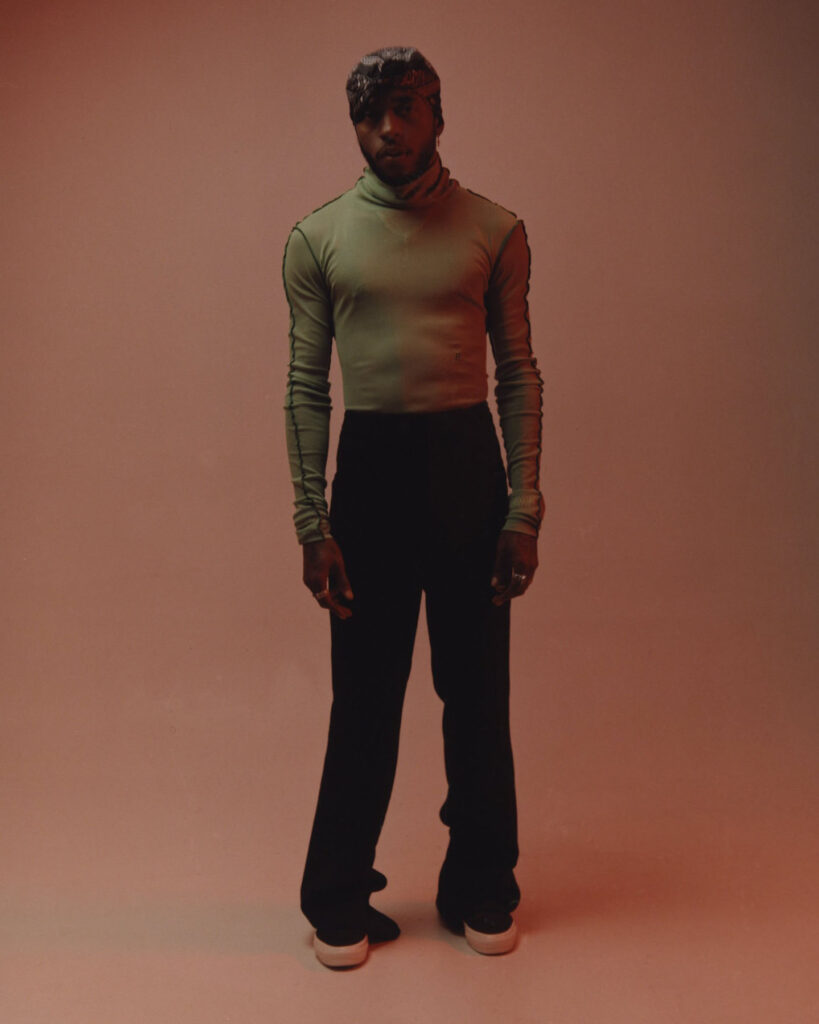
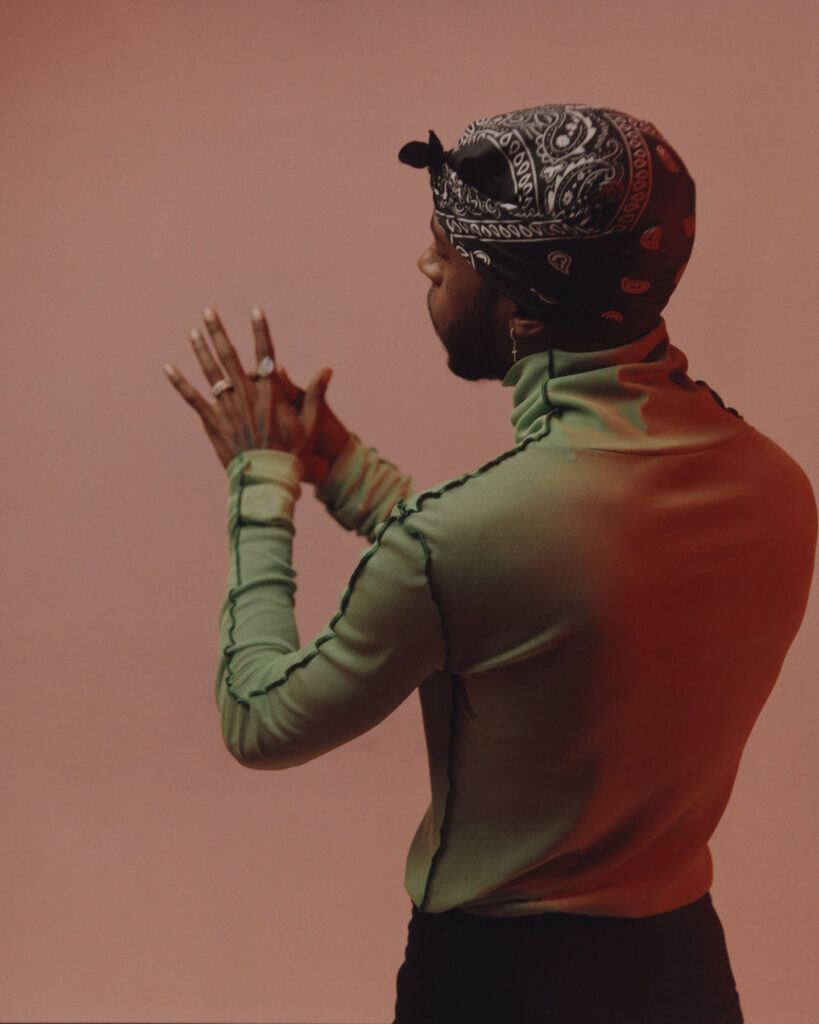
Yeah and if you’ve always been in this position as the teacher of sorts, to what extent is it kind of like being a martyr? How comfortable do you allow yourself to get with excess weight on your shoulders? You’ve said you’re someone who trusts people easily but I feel like, if you’ve been carrying that torch around for people, you’re not really letting people in or exist in your life in the ways that they might want to.
That’s another thing that was pointed out in therapy too, these effects might not show up in the form of you breaking down or crying but all those things stick with you. As time goes on, the requests, the demands, the advice that you give, flows out of you and you keep moving and more things stick on you but you keep moving and eventually, you get to a point where you’re like, I’m tired and I don’t know why. It’s because you either haven’t mourned, you haven’t let it go, you haven’t actually solved it, you haven’t given yourself a minute to just focus on you because you’re carrying a torch or pulling the weight of doing the work for so many other people.
And I think in doing so, you don’t really open yourself up to being vulnerable. We want our men, our partners, to be strong but half the time they don’t even commit time to addressing the ongoing internal battles within themselves, let alone even recognizing that they exist. Your platform 6lackbox is a resource for so many people and I don’t know if this is something you’ve envisioned but I can also see it existing as a space to normalize mental health issues?
Yes, it’s definitely something that we’ve been trying to put more energy and planning into. However we can get more people involved so that it becomes a community thing and not just a me-to-them situation because I have created different communities with my fans and developed a lot of long-term relationships with them. It’s always been cool to figure out a way to let them know that beyond the music that y’all aren’t in this shit by yourself. If you got shit that you need to figure out, or if you have something that you’re going through, that’s what the music was made for, that’s literally what we’re here for. One day we’ll figure out how to specify that and nail down an actual plan.
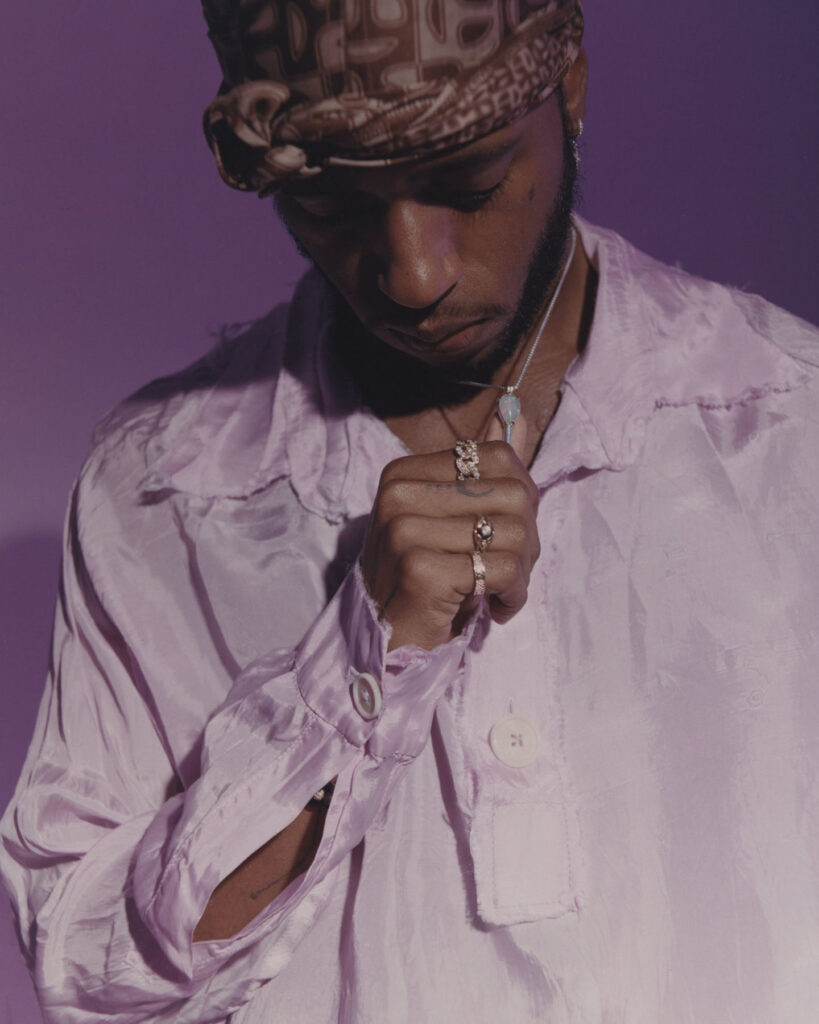
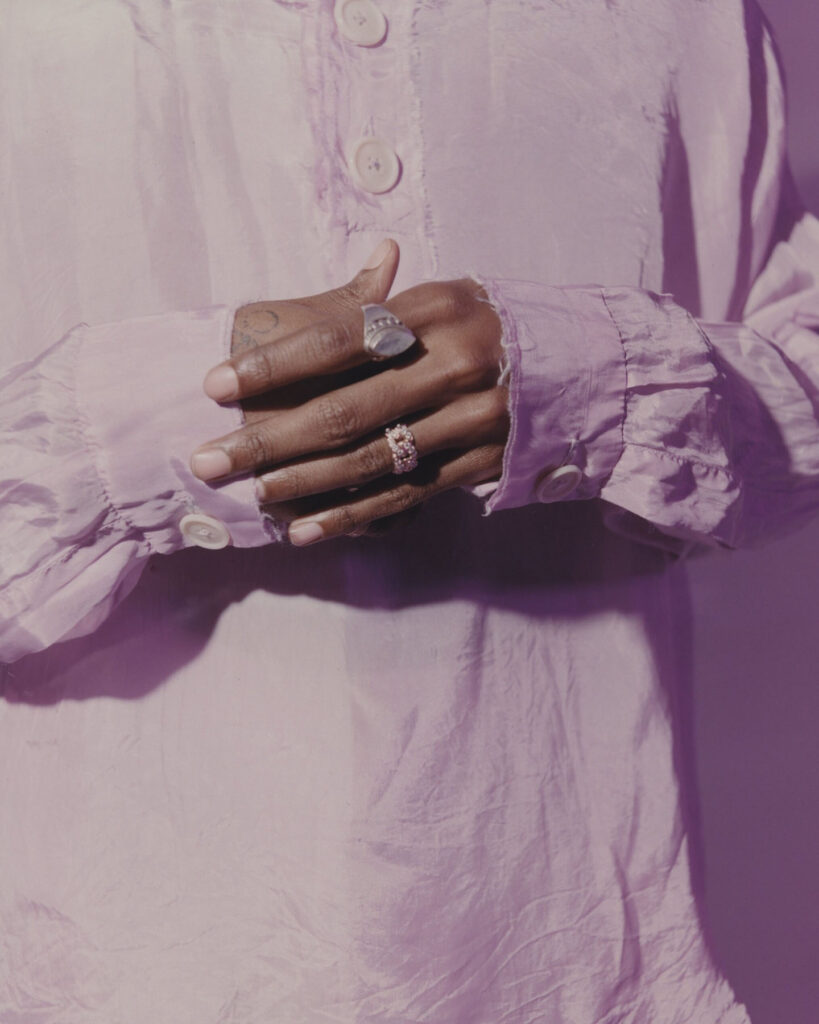
There’s been so much talk around this whole idea of community recently and for you, what does that really look like? Is it a utopia of sorts?
I think it’s just a collective group of people who have a purpose towards something specific. A lot has been going on, in the country, in the world in general and I don’t think that the primary way that we fix that is by focusing on like the higher ups, or what’s going on on TV all the time. I think we really need to narrow it down and get back to home, our neighbors and the people around us and remember that if we create a stronger community and a stronger bond with each other than everything else will be in a better position to find resolution. This past election is a good example of people coming together because they felt something and wanted to do something about it as a whole. However, we can continue to do things like that on a smaller scale, everything on a larger scale will start to iron itself out.
Speaking of small scale, home is also something that maybe you’ve been thinking about recently? It’s such a subjective word, you find home in people, you find home in your music and we’ve all been inside, in our homes, in our own head spaces. Is home a place or is it a feeling?
Home is definitely a feeling right now. Physically, I live between LA and Atlanta and I have really great reasons to be in both. When I go to Atlanta and I get to be with my kid, I feel like I’m at home, no matter who’s around, or what I’m doing. When I’m out in LA and I get to spend time with the person I love, I feel like I’m at home. That’s the best version of home that I could ever really ask for in just having something to look forward to, having something to have fun with, having something to learn from.
You mentioned fatherhood briefly and I grew up with a single dad too. He’s my rock and not always the most vocal person but he recently told me that he thinks we’re pretty similar which was shocking and endearing for me to hear. What have been some of the unexpected lessons of fatherhood?
It’s taught me a lot of clarity, not even to compare it to music but everything that I did album wise before that point was a lot of I don’t know, I don’t know, I don’t know, I’m trying to figure it out. Since then, I’m closer to figuring it out because somebody’s watching me. Other than that, it’s been a really good opportunity to express myself fully, to be a kid again, to be an adult, be every single thing that I am because you get to practice it with somebody who doesn’t know anything bad about you necessarily, who doesn’t judge or have any predetermined thoughts about you. They just are happy to see you and want to be fulfilled in some other way. My thing with her is just making sure I give her the stuff that I didn’t have, which was constant reassurance. I want her to know that she can be herself, she can express herself. I was talking about that the other day in therapy, how at some point in my life that reassurance disappeared and I didn’t realize it until I was able to say it out loud. When that disappeared, my life started to shift a little bit, I started doing different things, my grades started to shift, my personality started to change, my insecurities started to form and these were all things that were a result of my relationship with my parents changing.
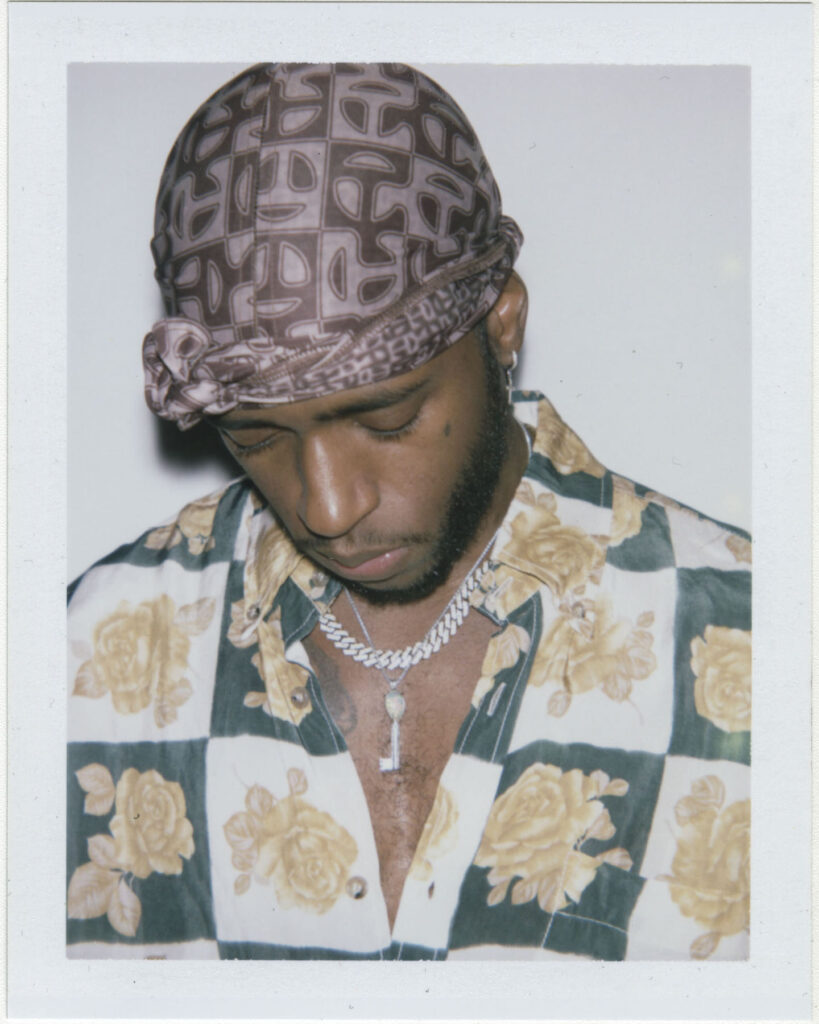
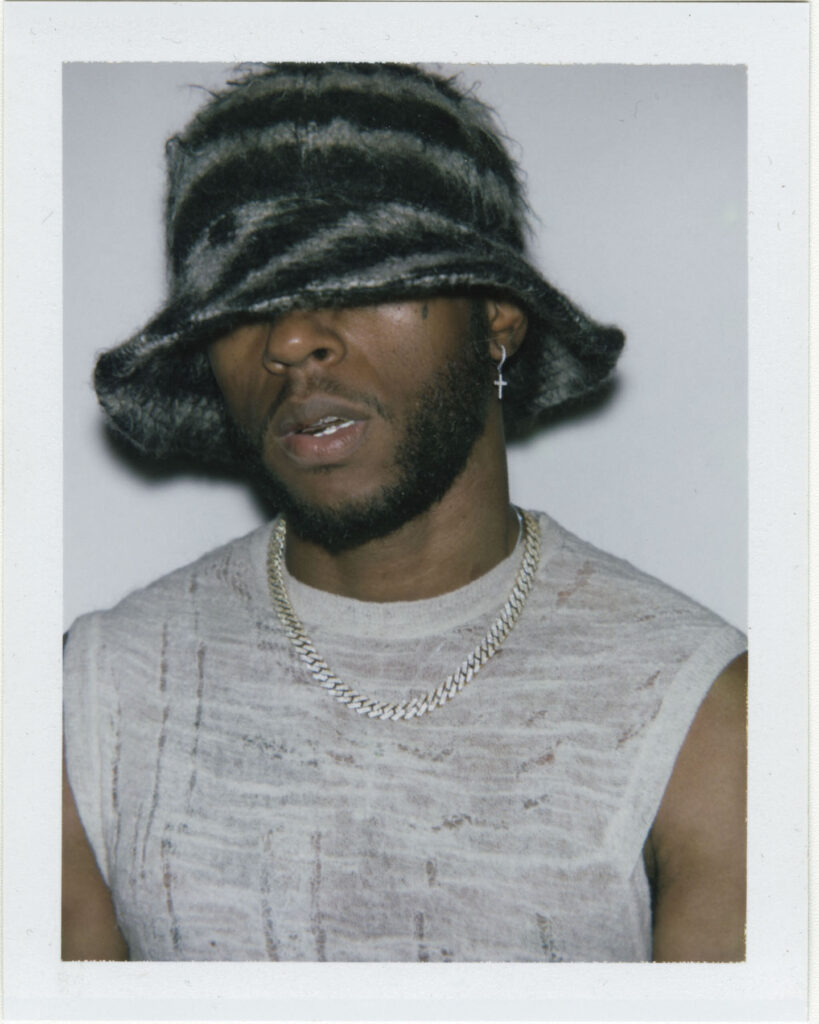
Right and thinking about the word reassurance, I think especially in relationships, whether that’s with another person or with yourself, it is sometimes something that we seek for the wrong reasons, out of insecurity and that’s a hard thing to admit. .
It’s definitely a hard thing to gauge. I think knowing the specific kind of reassurance that was missing for me, I know that it’s not doing too much to just let your kids know that hey, you look like me and those are good features, or you remind me of so and so and that’s a great thing, or that they’re doing good. It’s about spending time with them and being the type of energy and person who they’ll want to have a conversation with. I think that reassurance can be a tricky slope. I also just learned about myself that I move, act and think in a way where I know that the people around me know who I am but that is not to say that I can go without making the effort to clarify something for them. I am aware that this is something that I can work on for myself and the people in my life. It’s something that I want to make sure Syx doesn’t have to think too much about you know, it’ll be just enough.
Right and thinking about what’s enough, that word itself can be such a trigger for so many people. We’ve all had to recontextualize our own definitions of what’s enough, especially, when we’re not doing all these external facing things anymore as of late.
I think that has been an interesting thing to figure out too because something can definitely be enough to you and not be enough to somebody else. That’s the fun part and not so fun part to figure out that subjective definition in all of your relationships. The easiest and the best way to do it is by being able to sit down and have conversations where you detach your personal needs or ideas of who you want somebody to be and adopt an open standpoint.
Yeah and thinking about ideals and needs, resilience has also been a word that we’ve seen pop up again and again but to what extent is it sometimes overrated? To what extent are we expecting people to “bounce back” when certain services should be civic priorities instead of difficult circumstances? Why are we coloring struggle with promise?
I think it’s like a 50-50 type of word in feelings, situations and energy. I’ve made some of my best music and had some of my best moments from being resilient, pushing through, getting through the struggle, fighting through this, crying through that. It definitely creates a pressure makes diamonds type of moment where you’ll definitely get something out of it but it is most definitely also overrated because you don’t want to be working from that space, you don’t want to be doing more than what you necessarily have to do. You don’t want to become infatuated, obsessed or interested in that process to make it feel like it’s the only place that you can work from because I definitely have fallen into spots, consciously and subconsciously, where your back’s against the wall and you feed off of that.
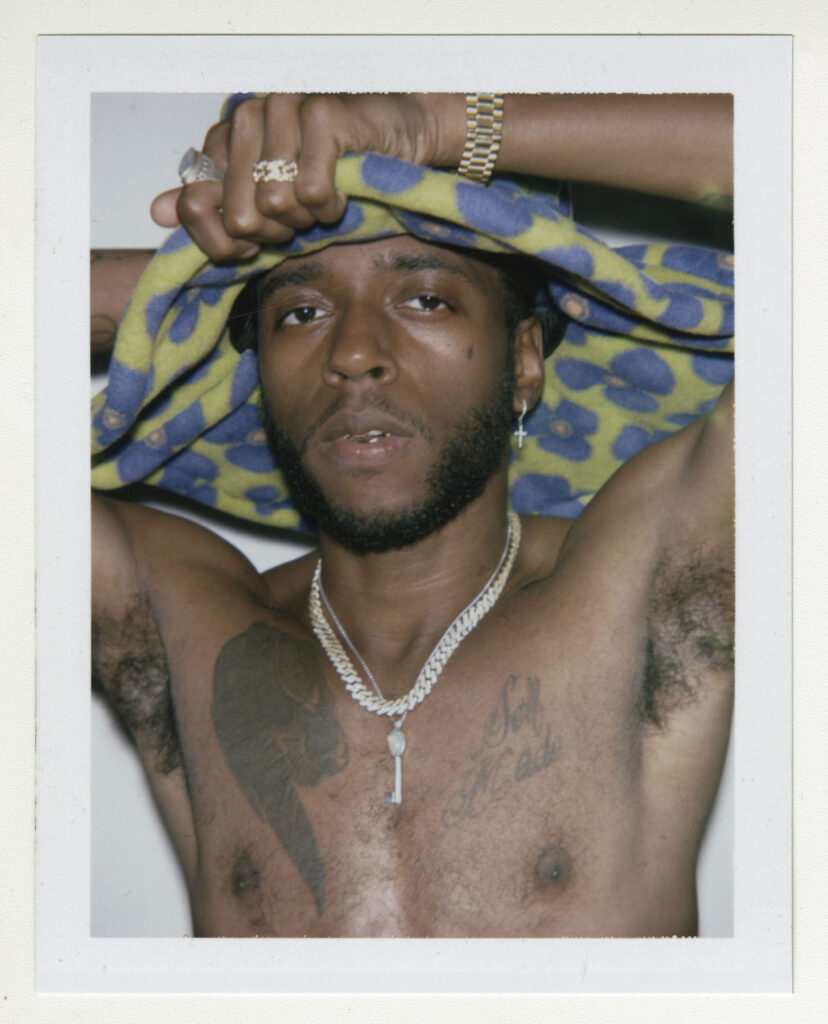
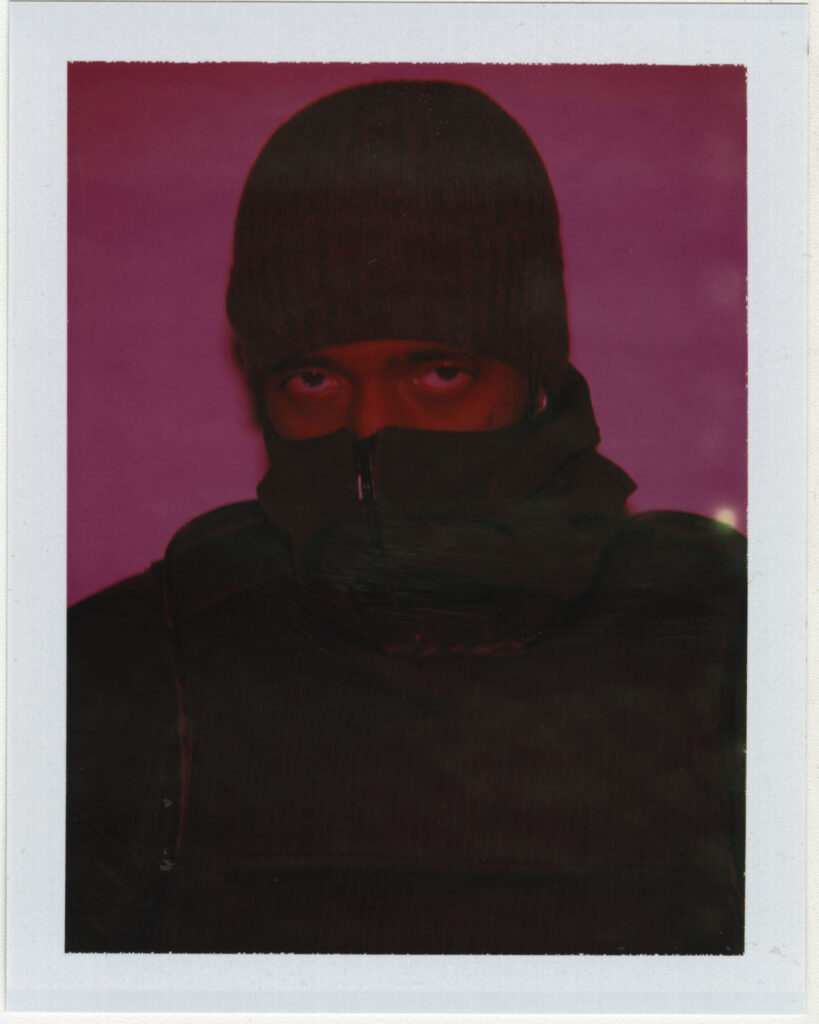
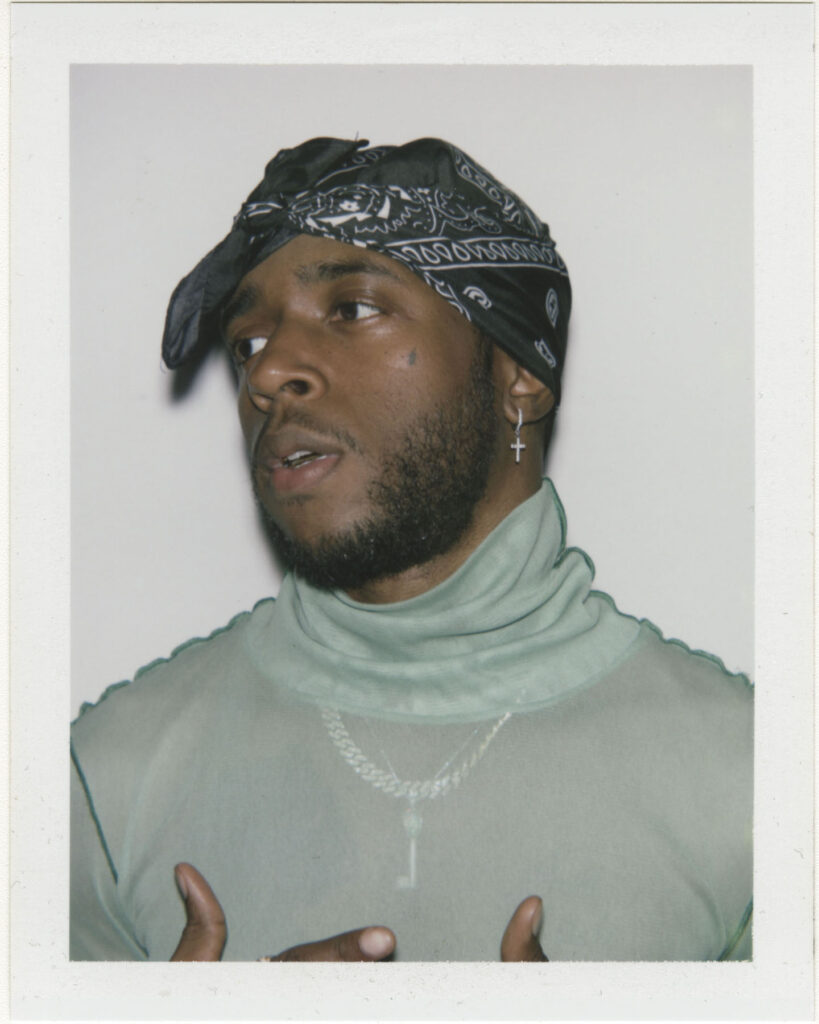
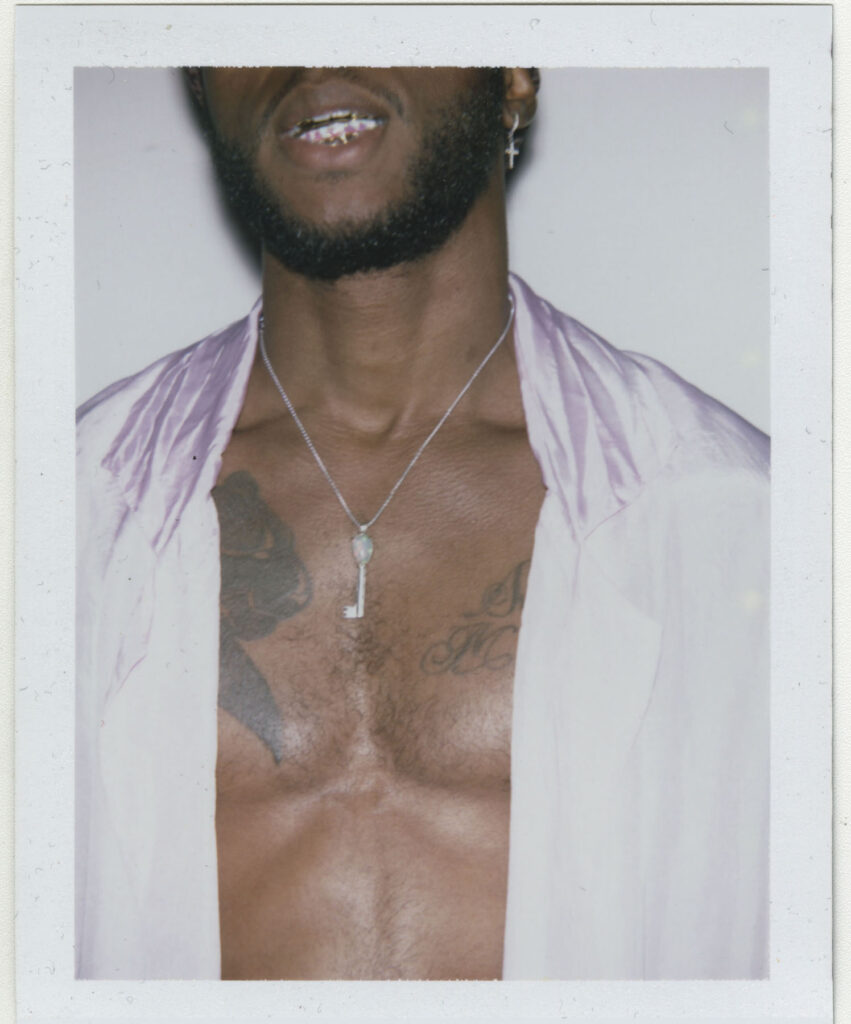
Right and being an artist or someone who writes in general, it’s often easier to write when you’re sad and that can be a bit toxic.
Absolutely. I had to check myself and just make sure that I was not holding on to that because that’ll always be there. If I ever need it, it’s something I know how to do but there’s no reason why I should be putting that first or to be writing songs with that in mind when that’s not where I am or where I want to be.
How do you write about things that are happy then? It sounds kind of like a dumb question but I feel like it’s hard to transition to even create from a different mental place?
That was a conversation we had in the studio and Childish Major helped me put the initial words to it. In order to be able to write about the happy stuff, the good stuff, I had to sit down and practice the shit that made me feel good. Since then, the music has grown into me talking about my growth. I still have the ability to be able to tap into the other side, the sad side, or the side that people recognize or remember but it gives me the range to be able to say more, do more, express more and help people get through more. I don’t want to just be a pacifier for somebody when they’re going through some tough shit. I also want to share in a moment where they can celebrate, have fun or feel good.
It’s allowing yourself to be a dynamic artist because when people begin to create and become known for something, they begin to become defined by that and it becomes hard for them to reclaim agency from the external validation. They compartmentalize who they are from the work they create.
It’s definitely challenging. That was one of the first reasons why I cut my hair immediately because people off the bat were like, oh, he’s this, he’s that and I was like let me just reset because I felt myself becoming like a figurehead of whatever that was on the first album cover. As soon as I cut my hair, my life started to change. I started to make more eye contact, I looked up and moved on stage. I just had to realize what was going on but I didn’t realize what was going on because I was just too busy living it.
Team
Photography · RICKY ALVAREZ FASHION SHAOJUN CHEN
Interview · LINDSEY OKUBO
Creative Direction · NIMA HABIBZADEH and JADE REMOVILLE
Grooming · DARONN CARR
Designers
- Shirt and Trousers NANUSHKA Boots GUCCI
- Hat SONG FOR THE MUTE Top ACNE STUDIOS Jewellery Talent’s Own
- Hat SONG FOR THE MUTE Top and Trousers ACNE STUDIOS
- Hat BENNY ANDALLO
- Hat BENNY ANDALLO Trousers TELFAR
- Hat BENNY ANDALLO
- Shirt and Trousers NANUSHKA
- Vest and Jumpsuit BORAMY VIGUIER Boots SACAI
- Vest and Jumpsuit BORAMY VIGUIER Boots SACAI
- Vest and Jumpsuit BORAMY VIGUIER
- Turtle Neck HELMUT LANG Trousers MAISON KITSUNE
- Turtle Neck HELMUT LANG Trousers MAISON KITSUNE
- Shirt EDWARD CUMING
- Shirt EDWARD CUMING
